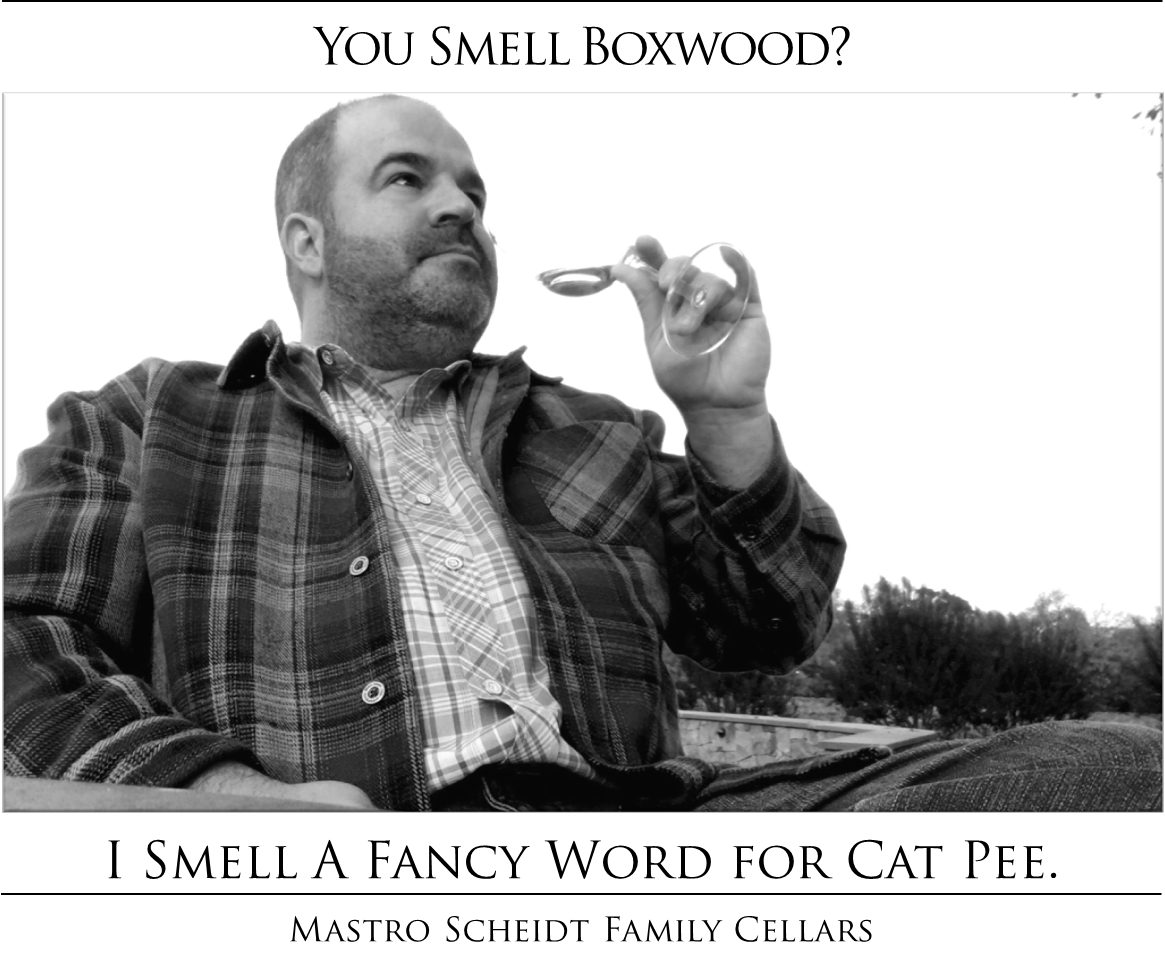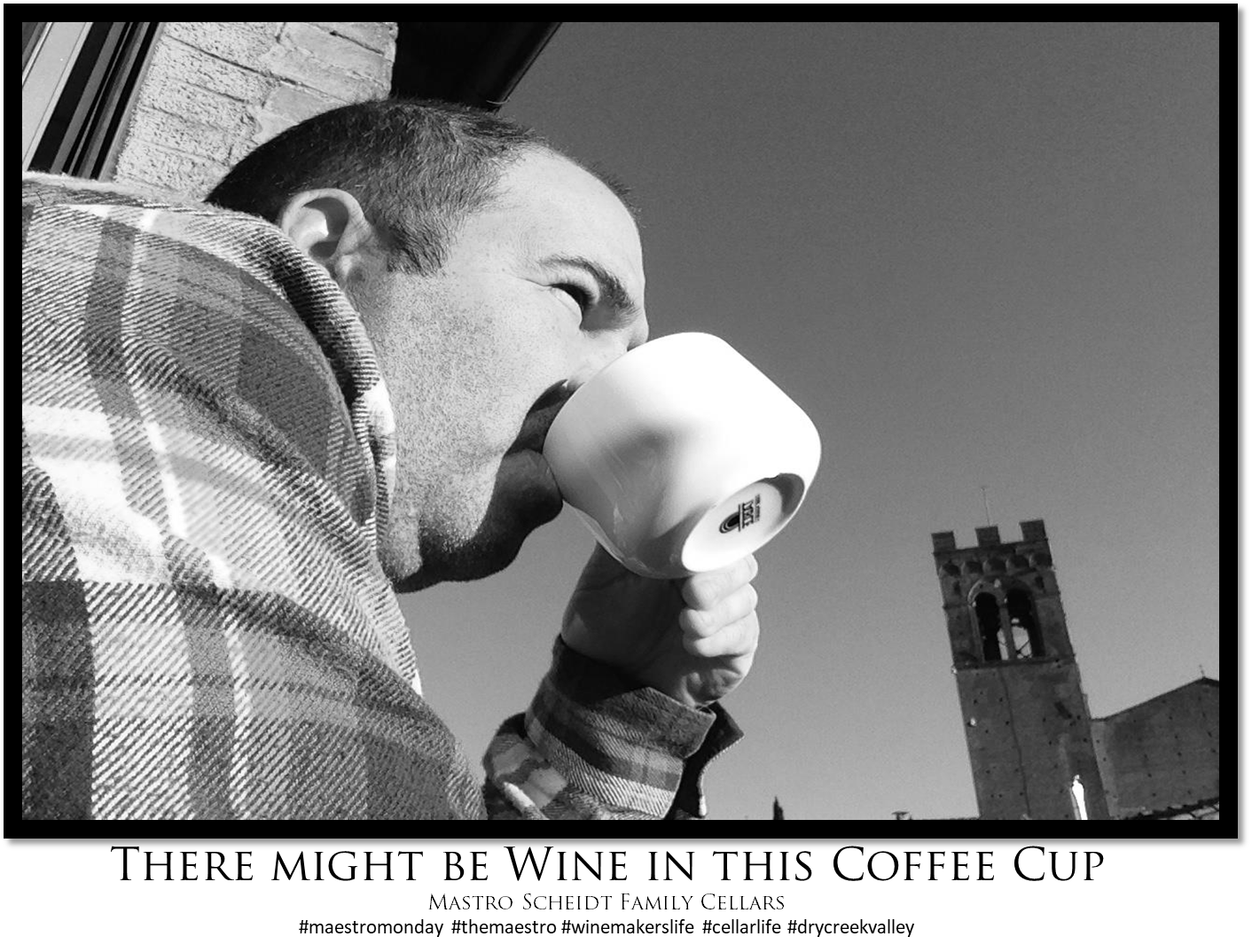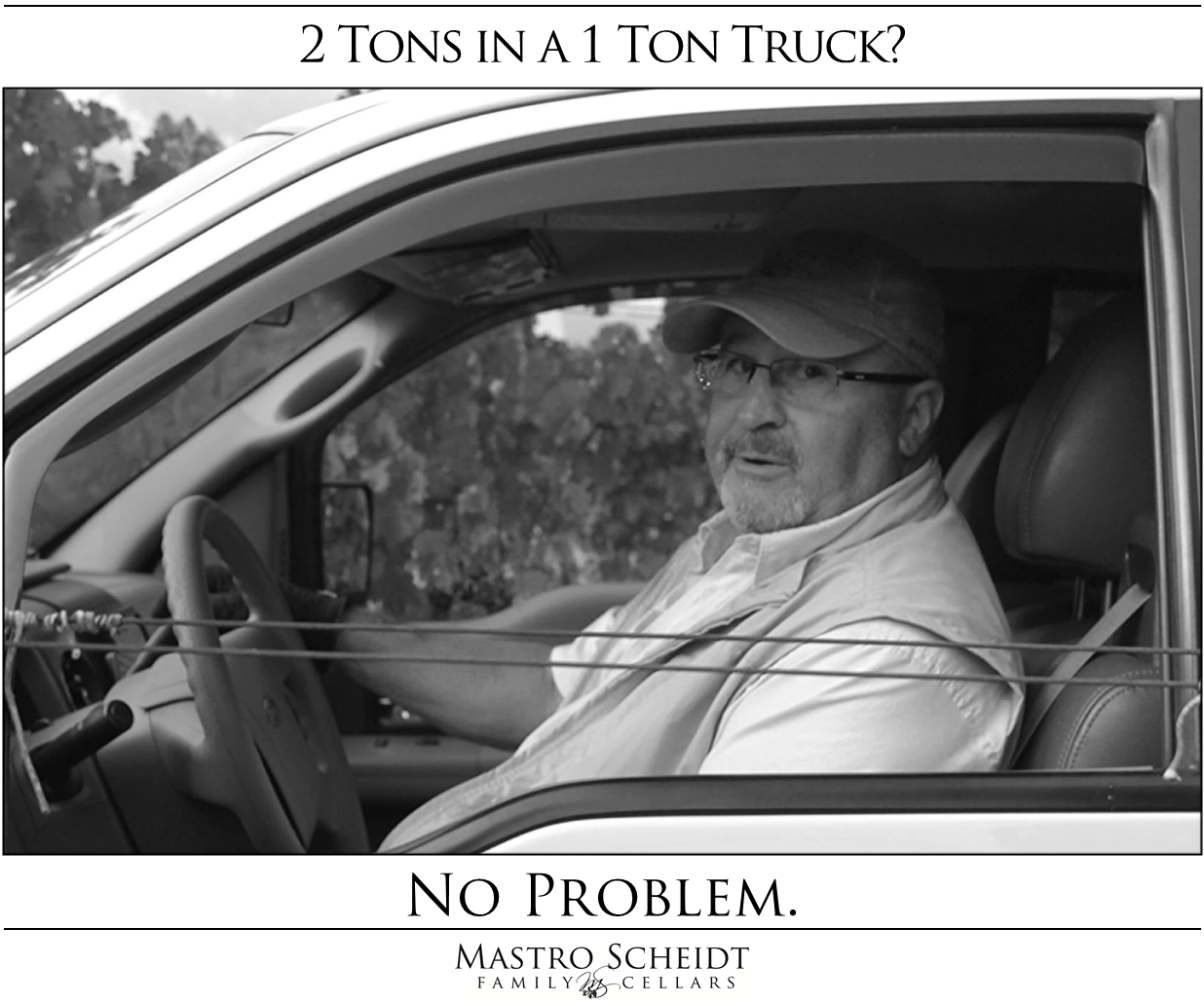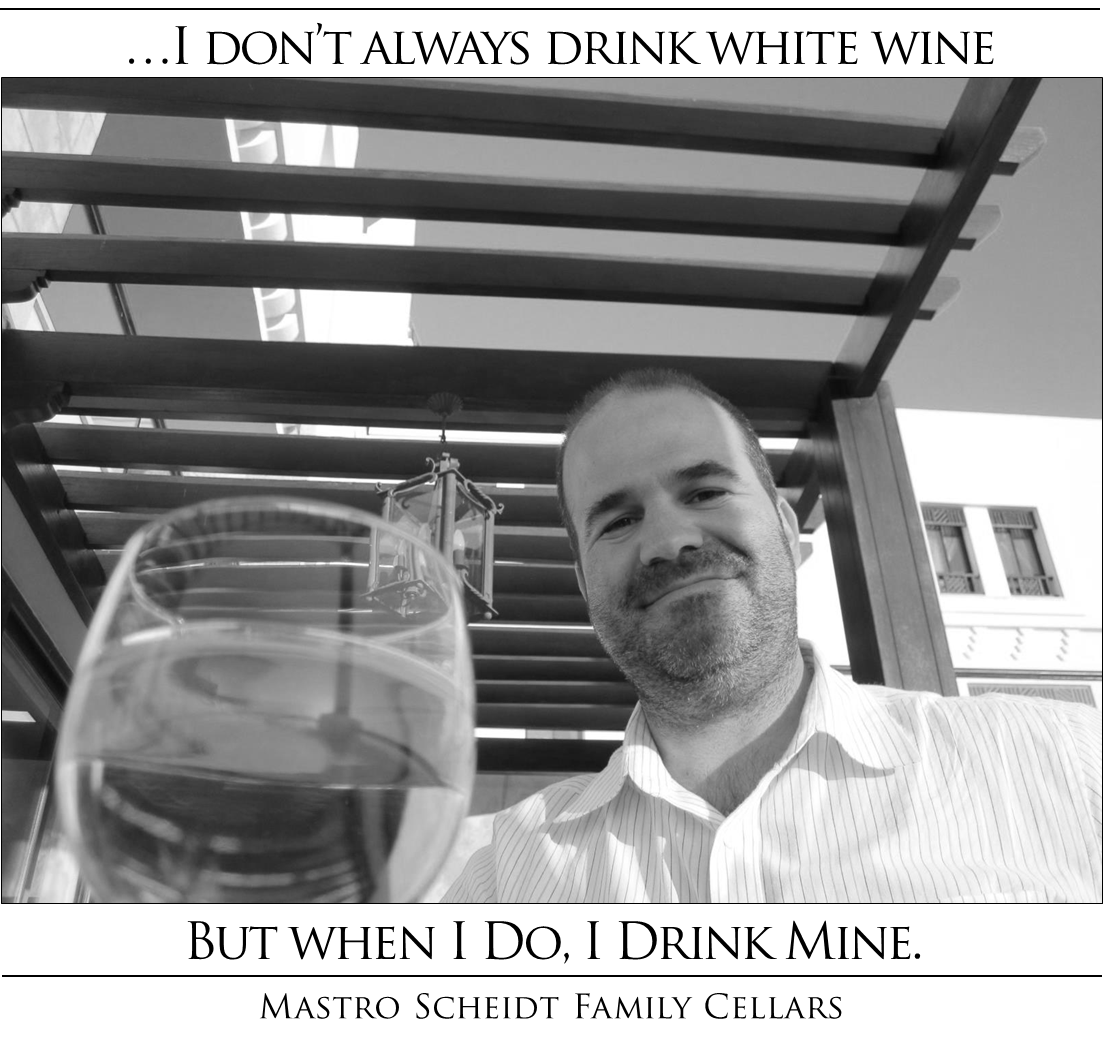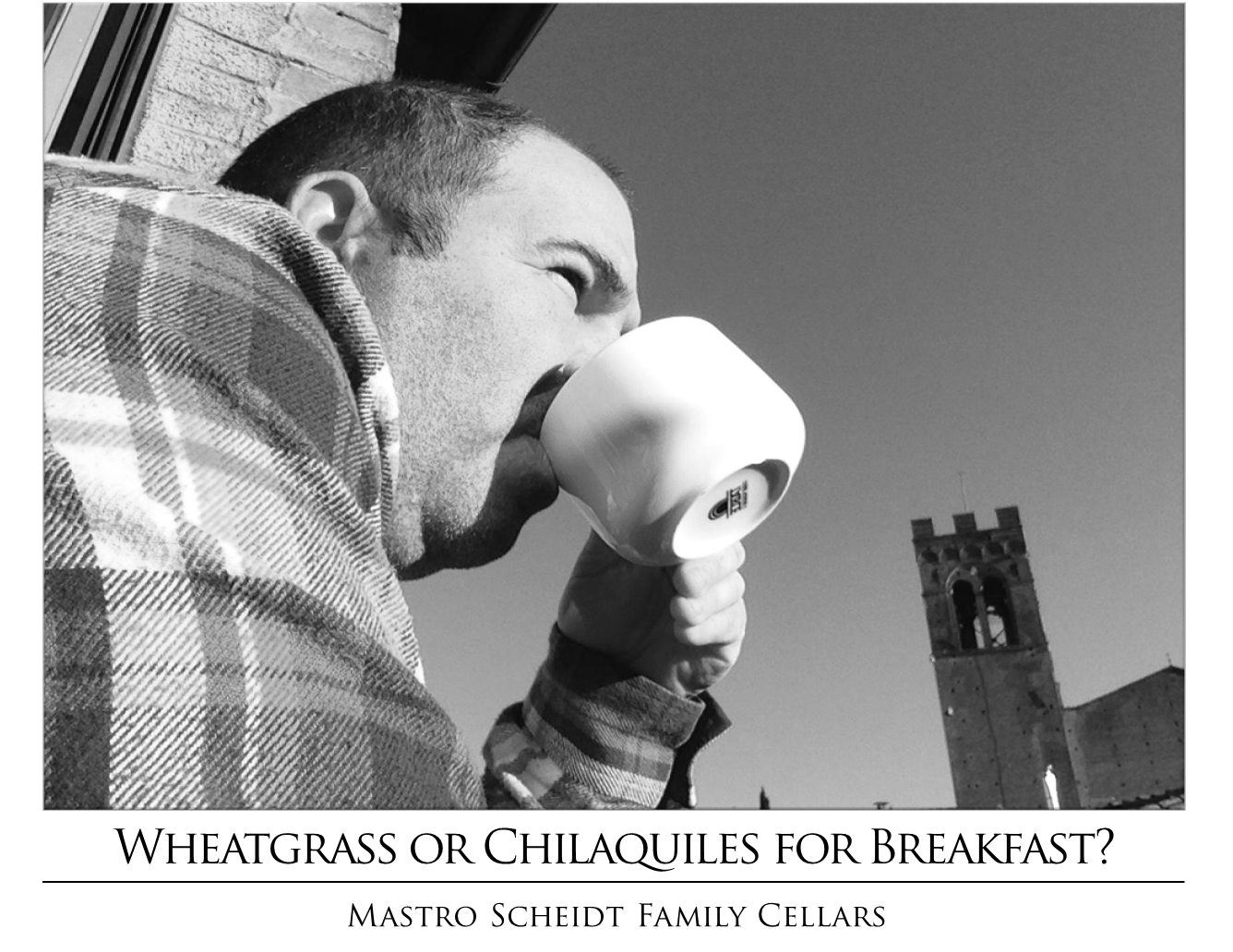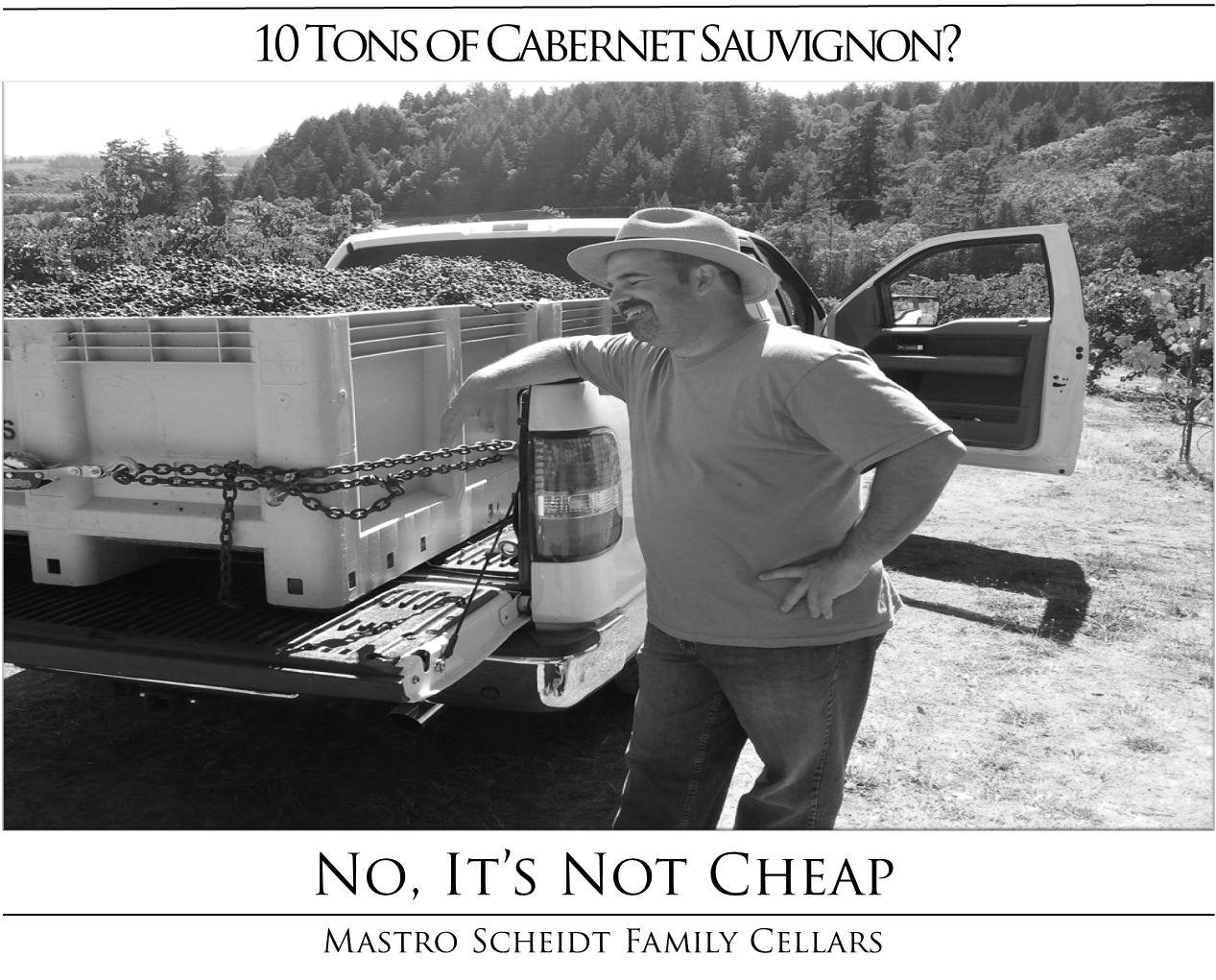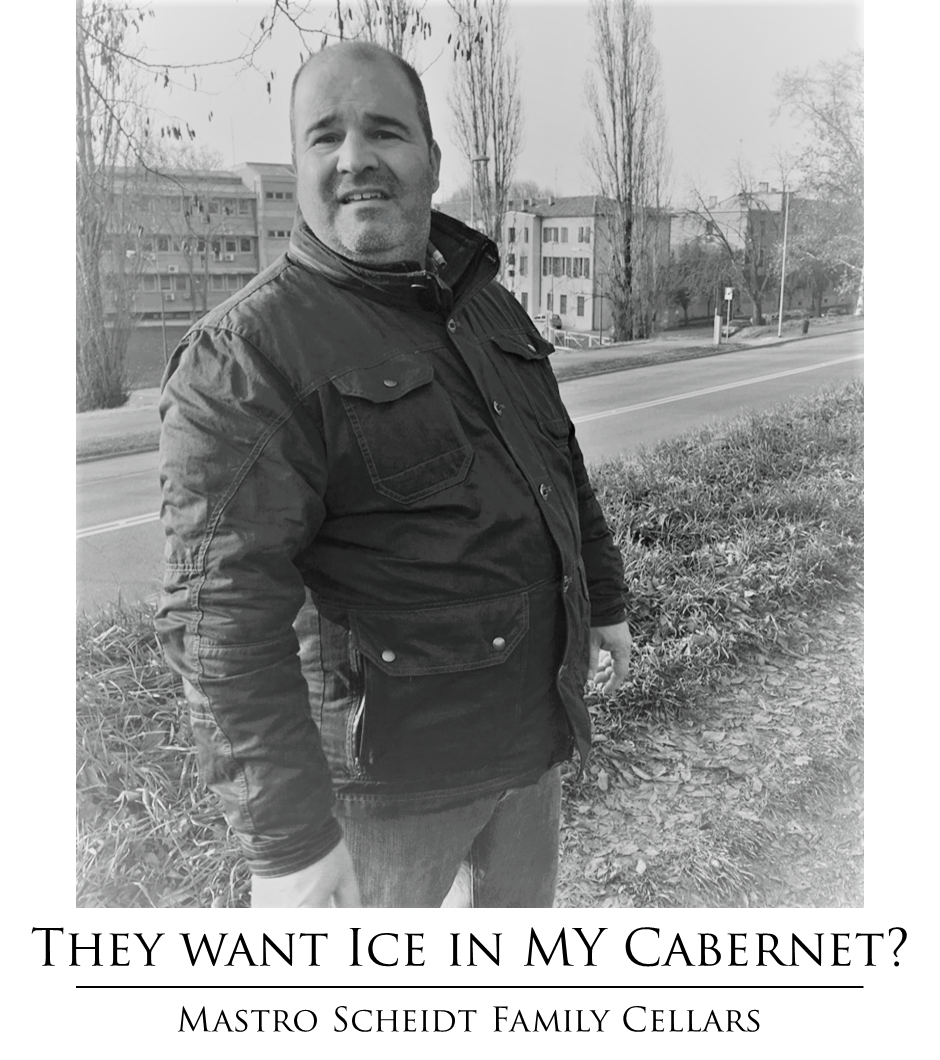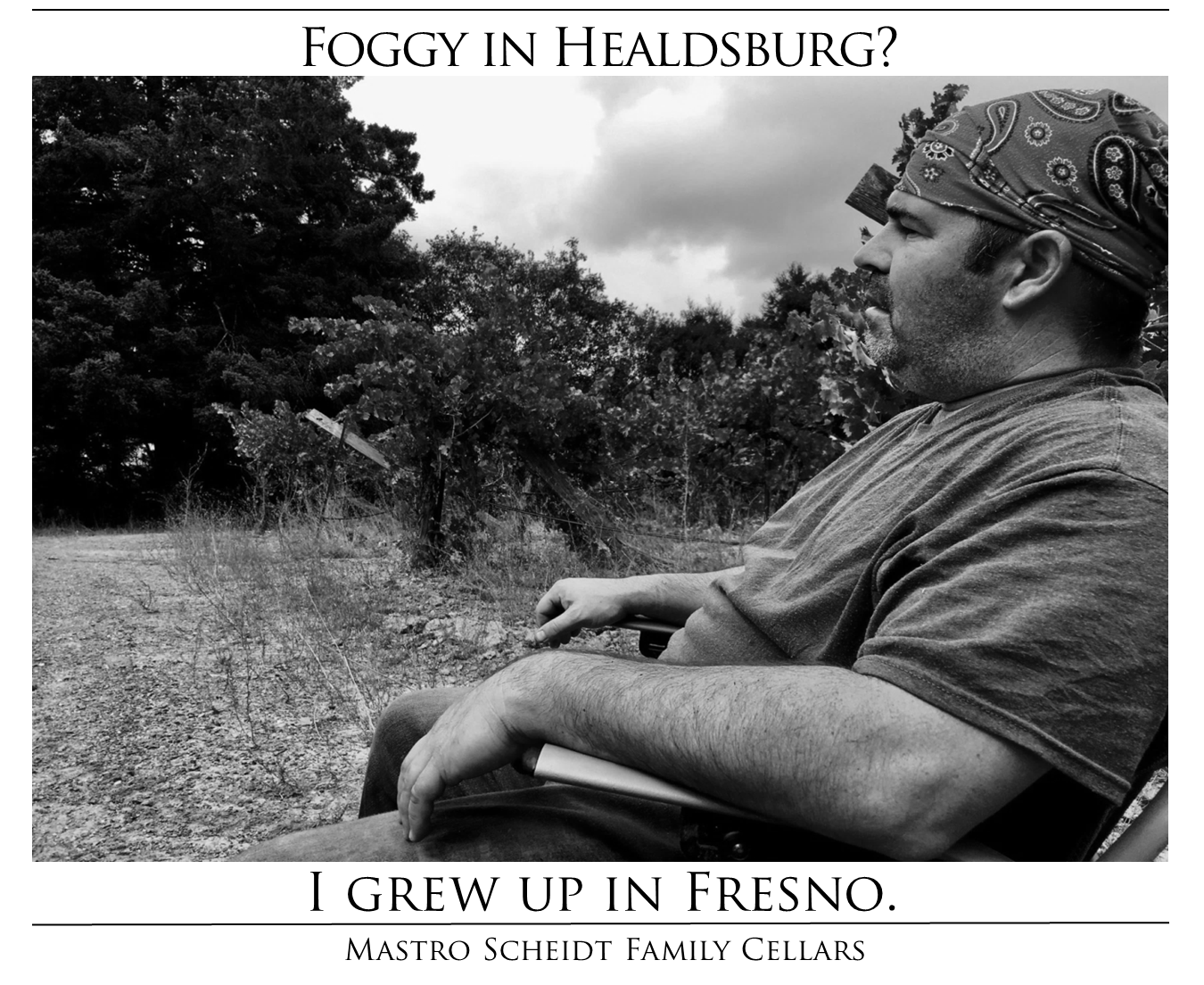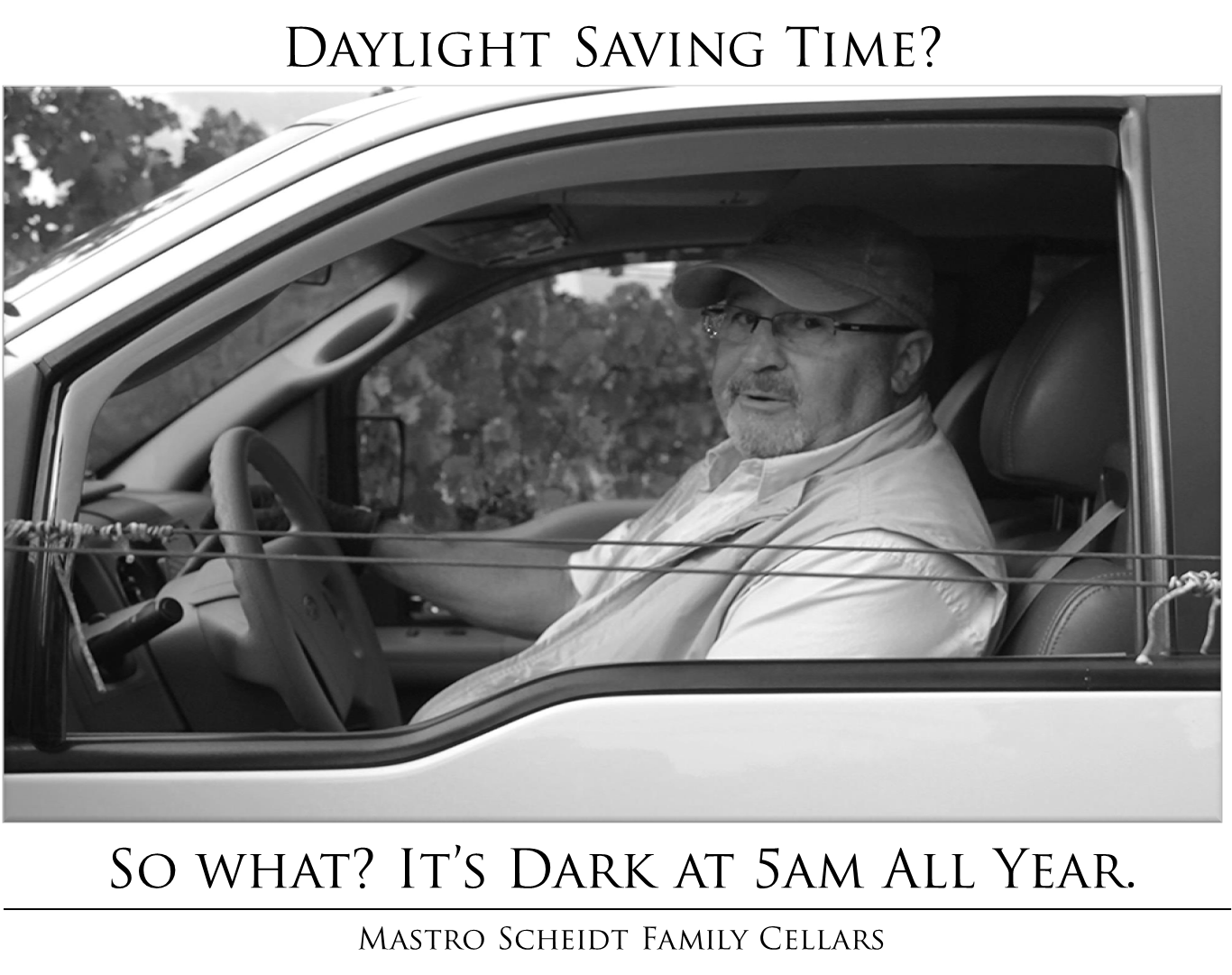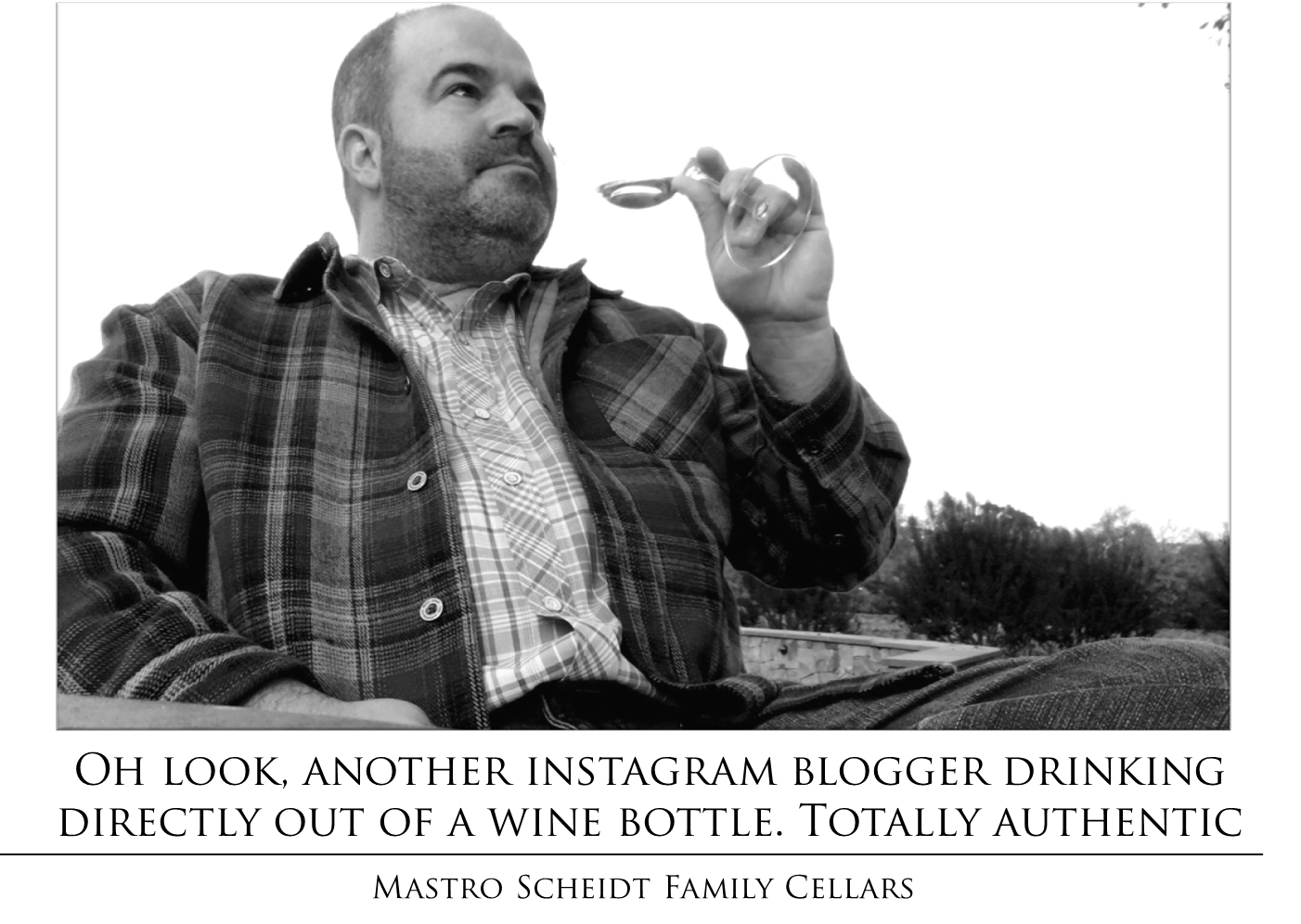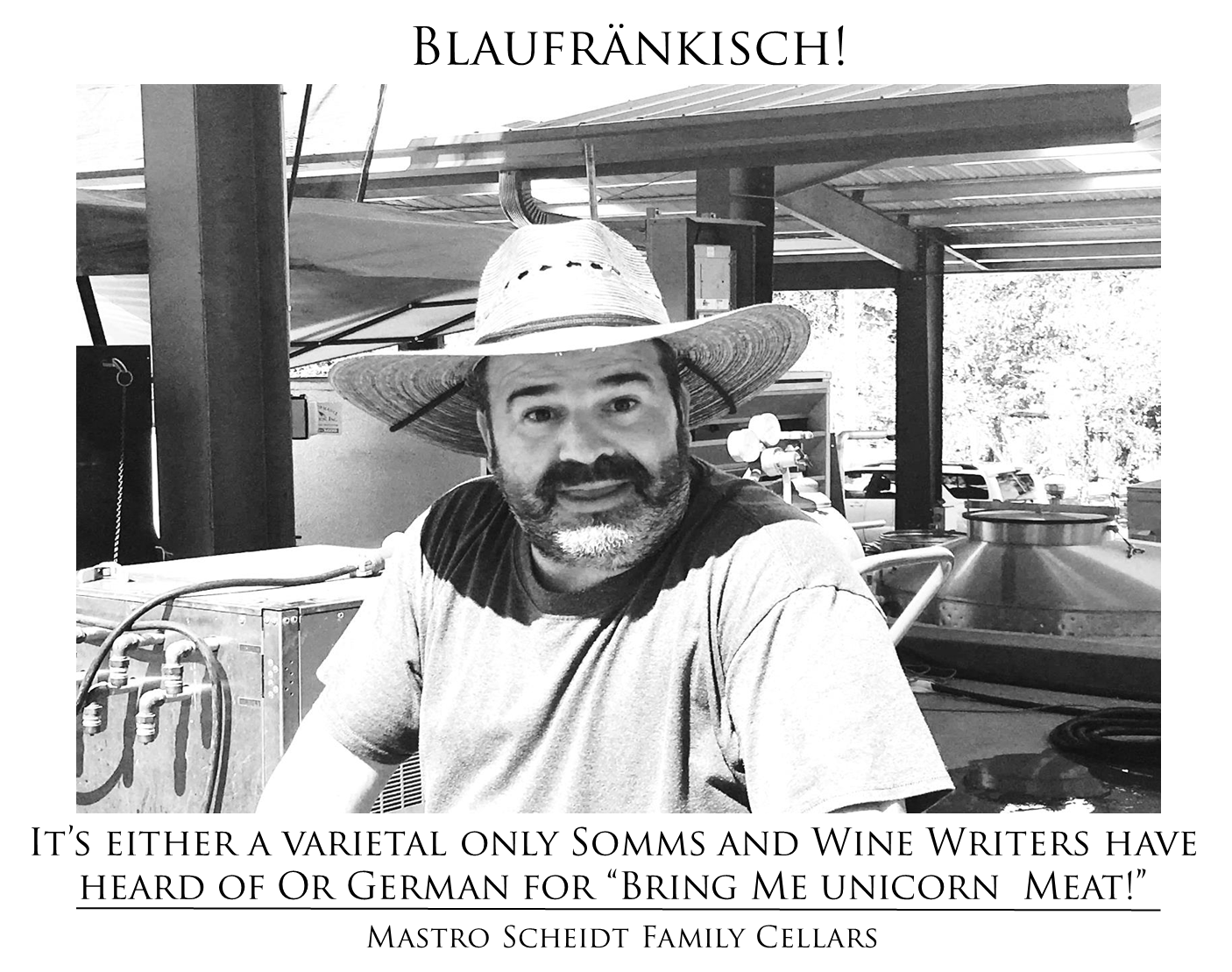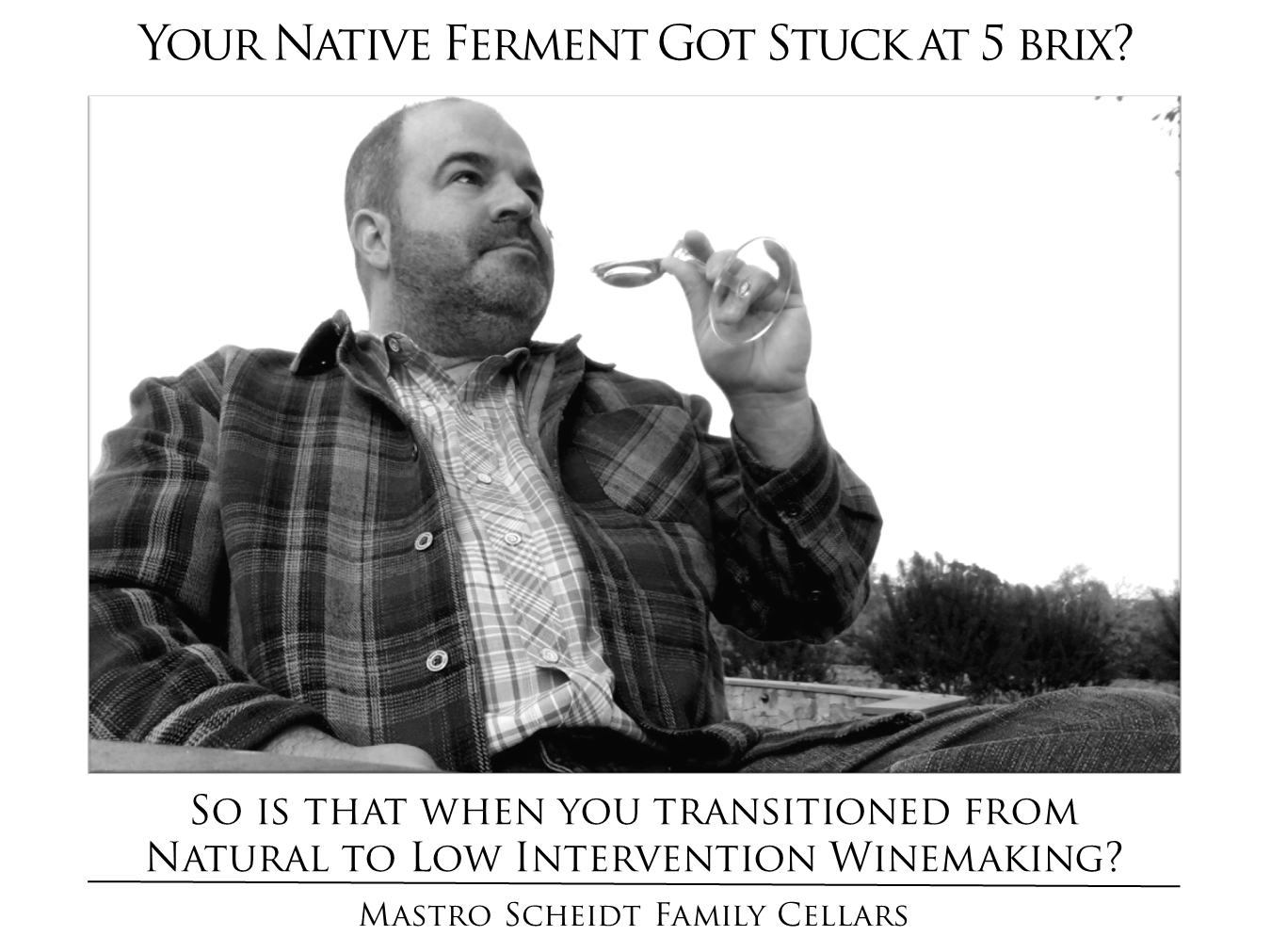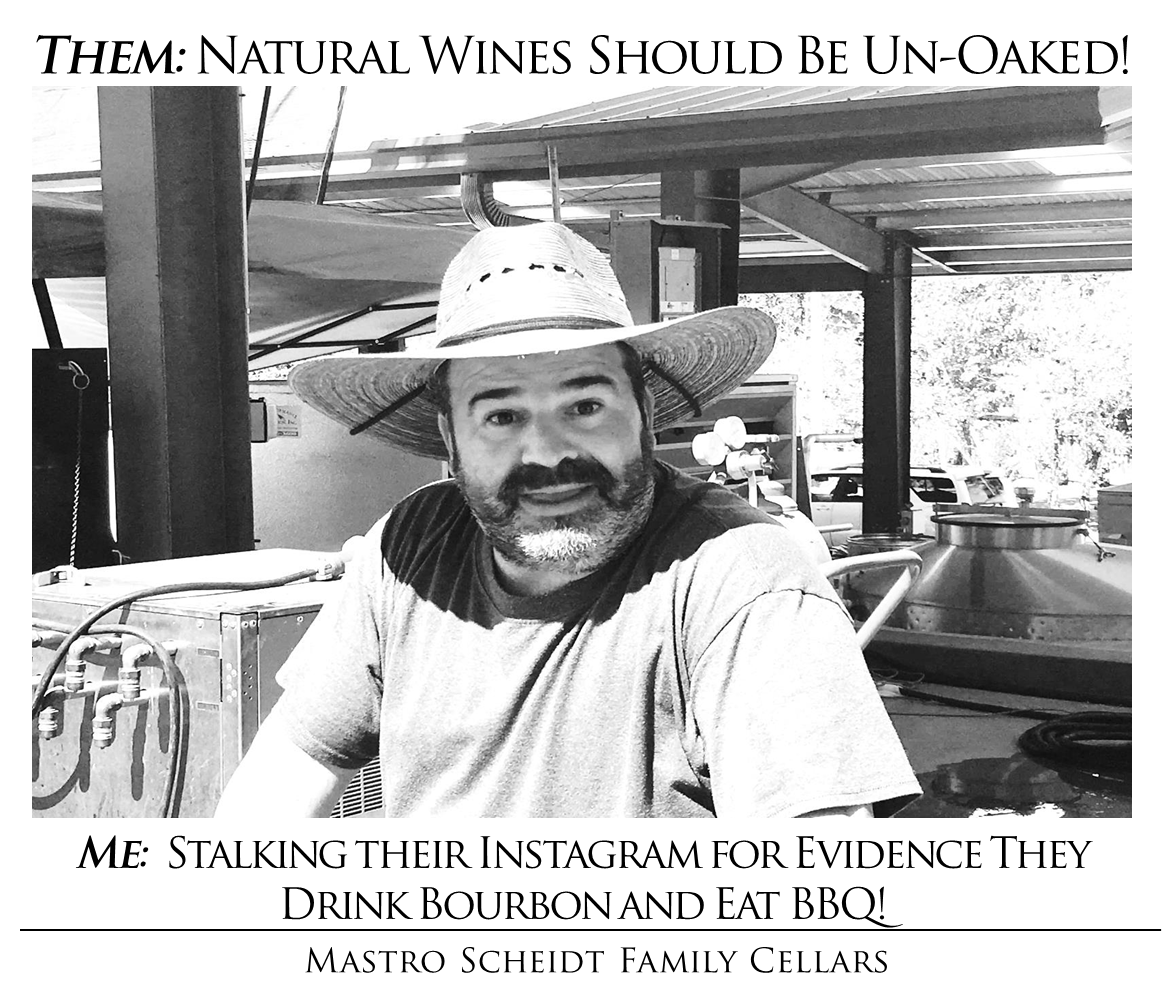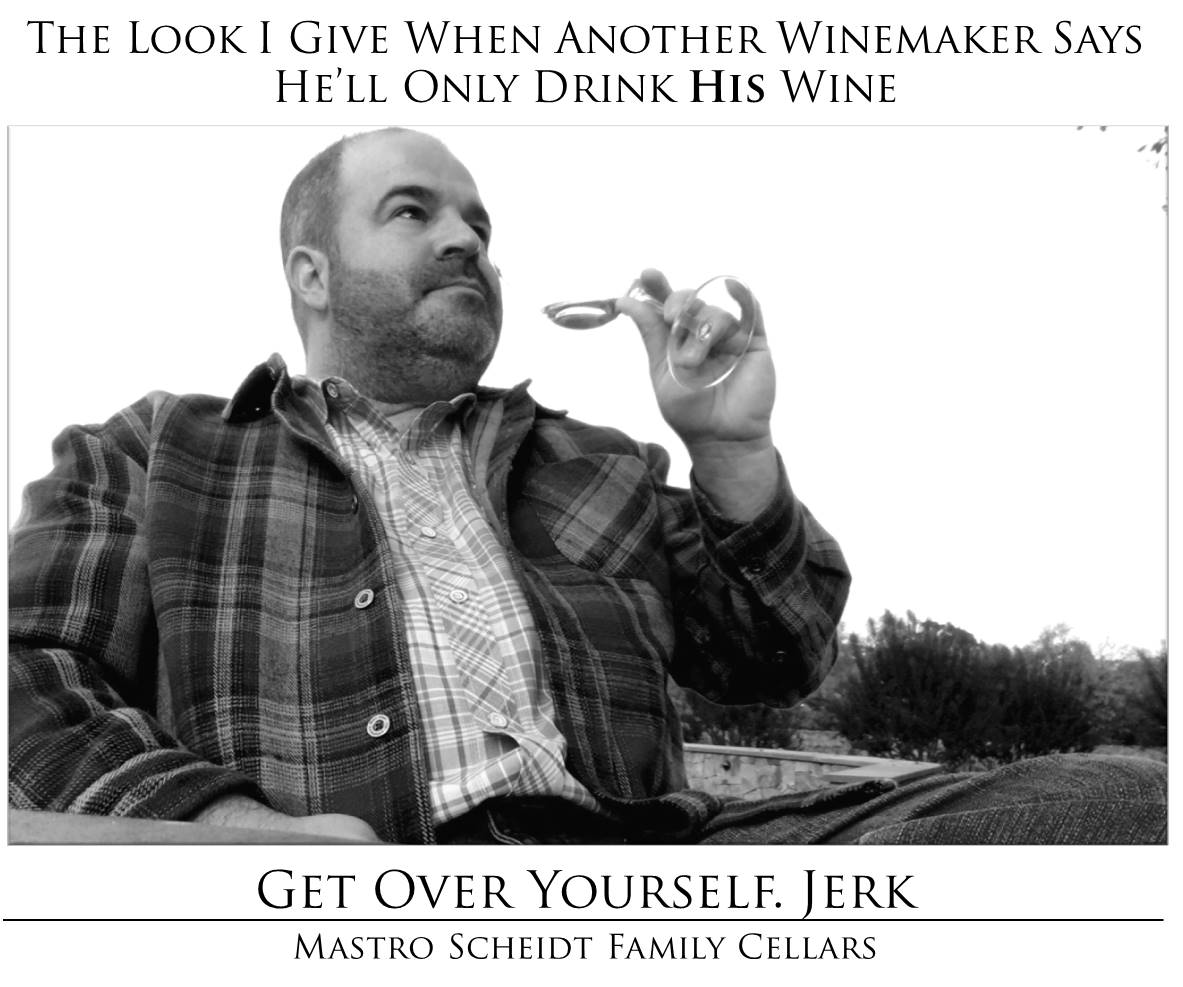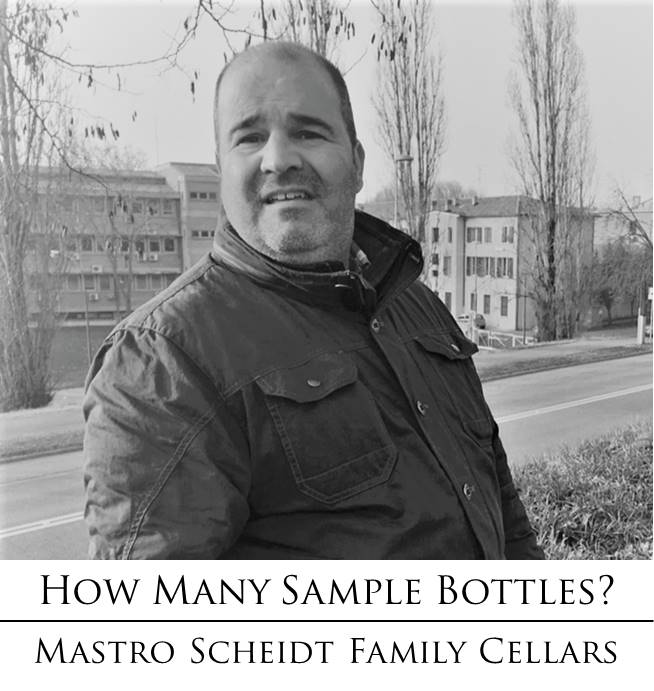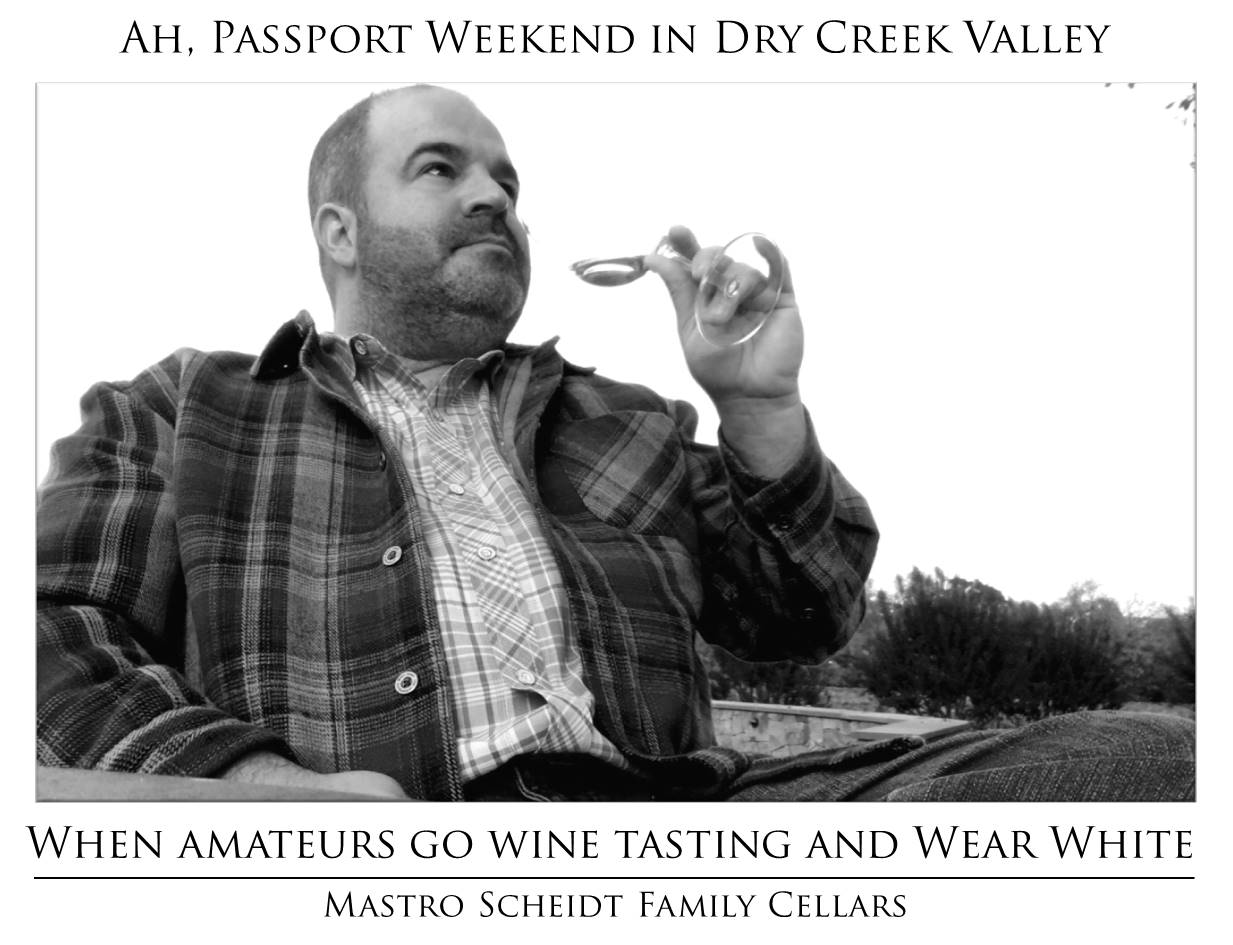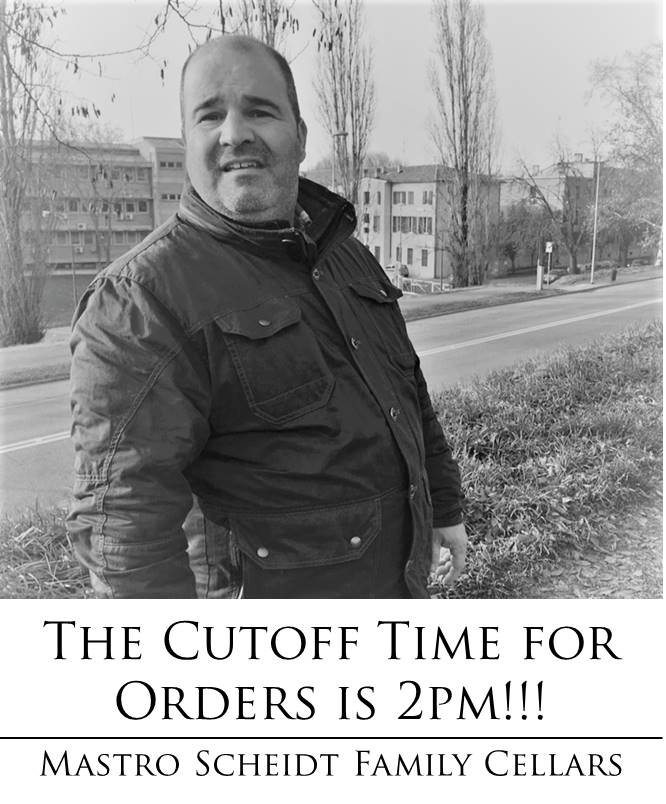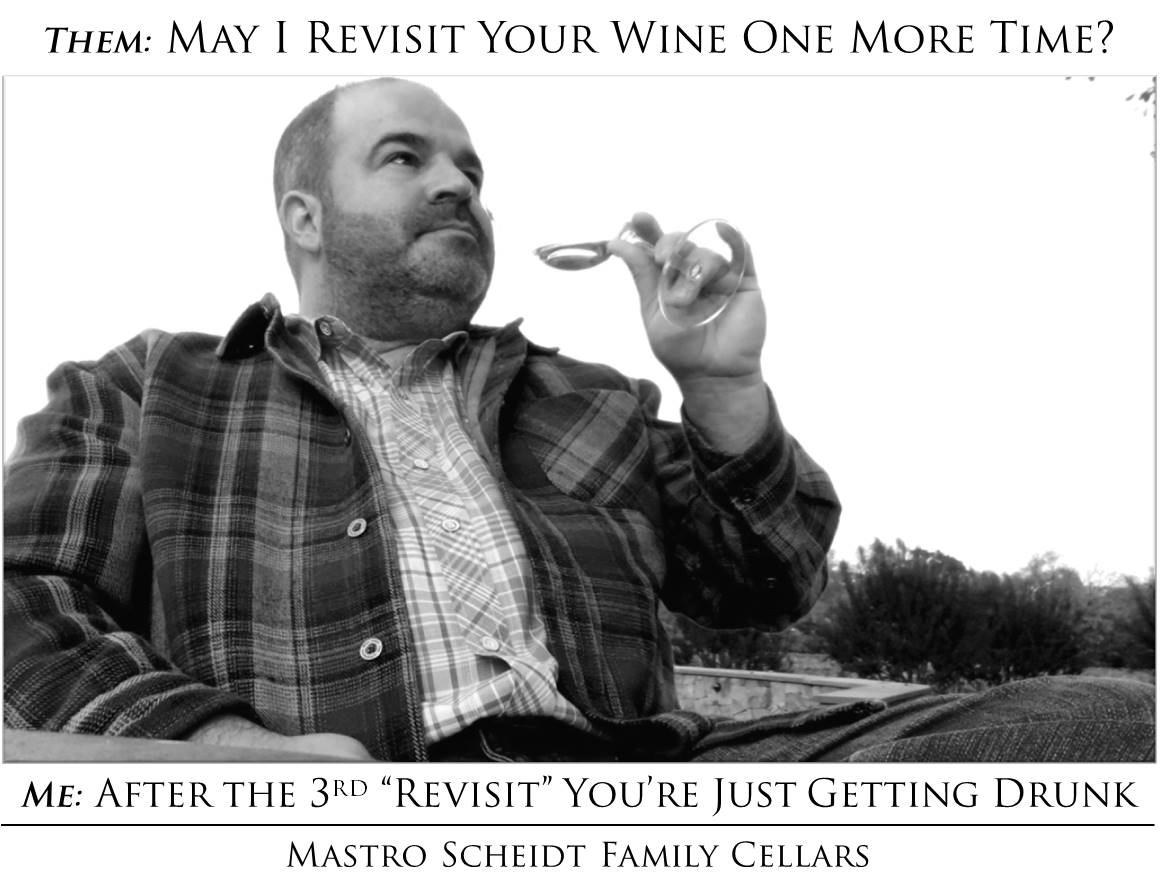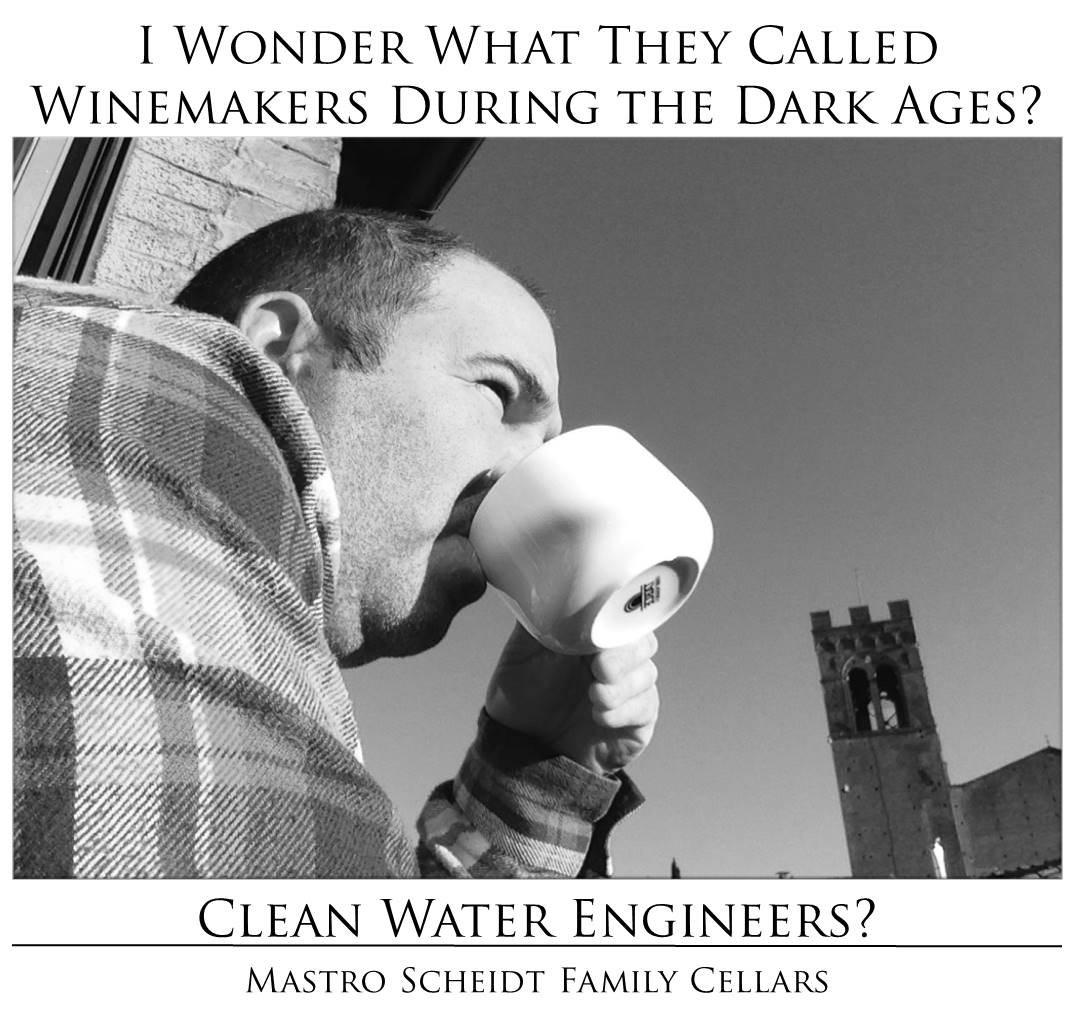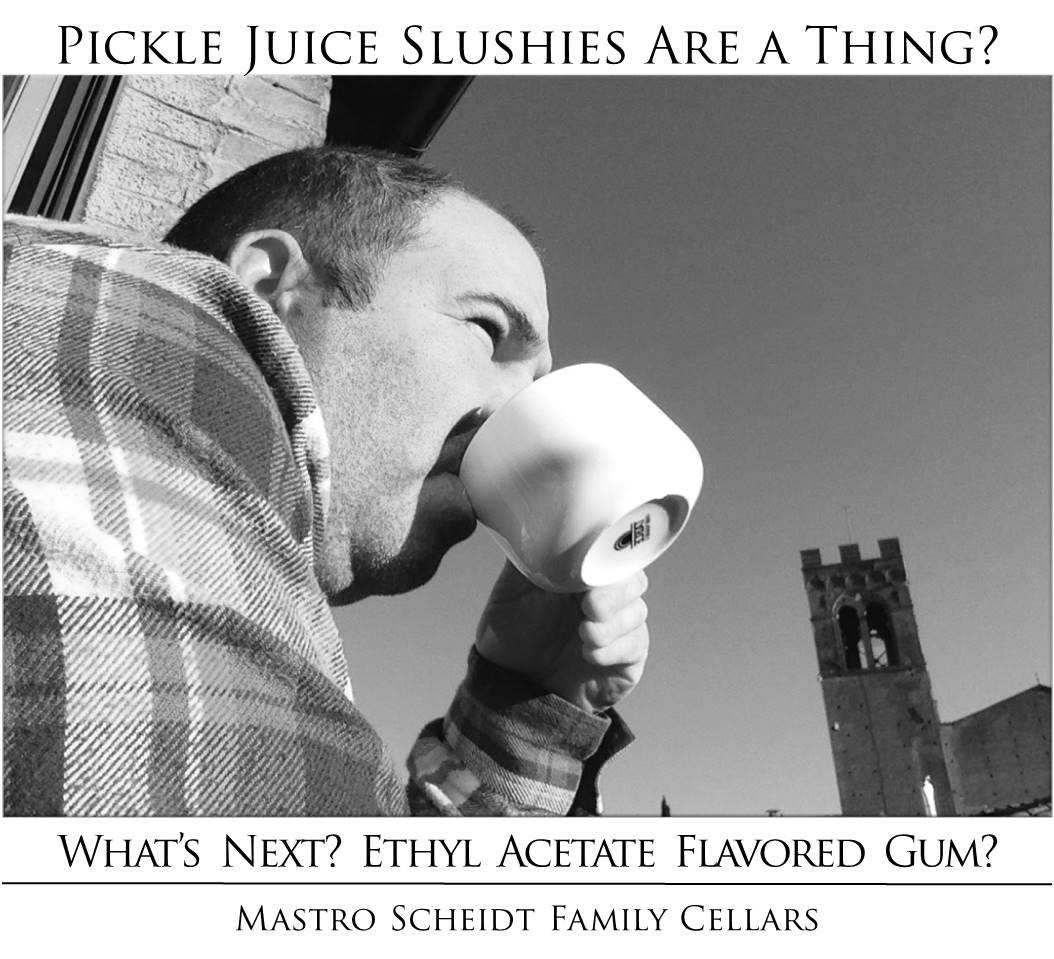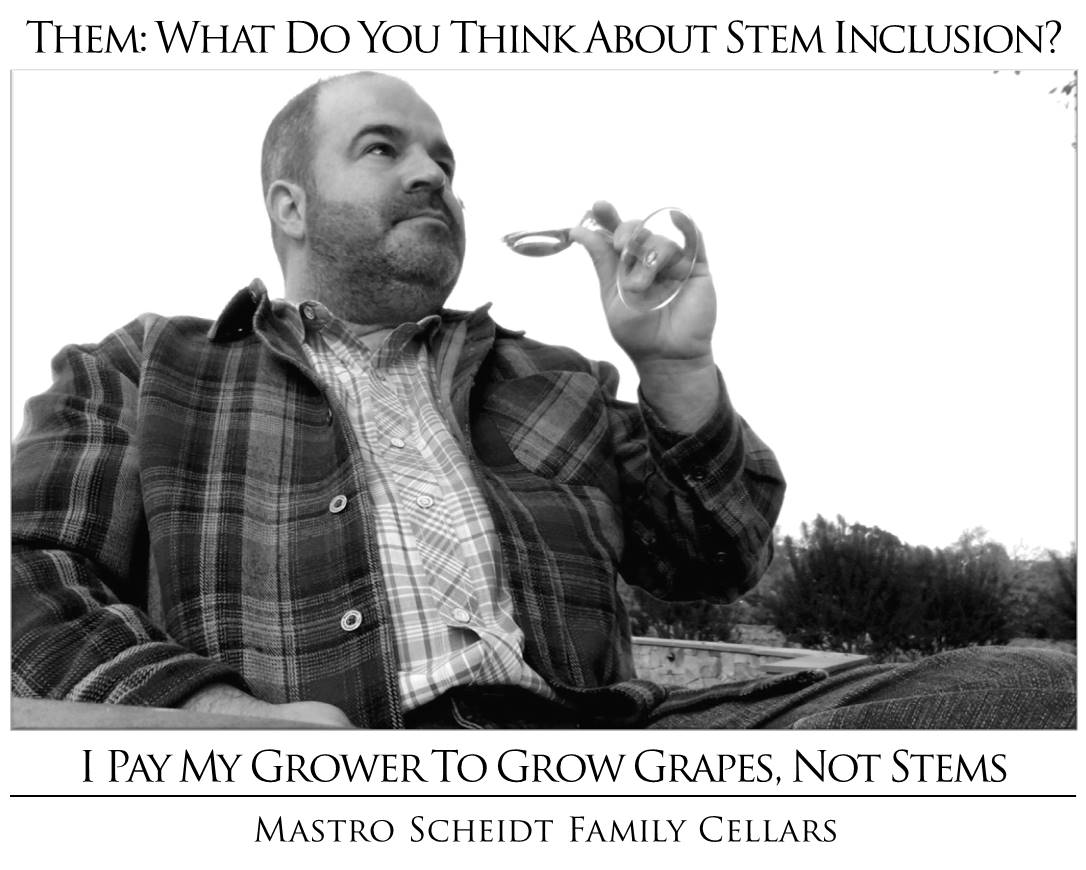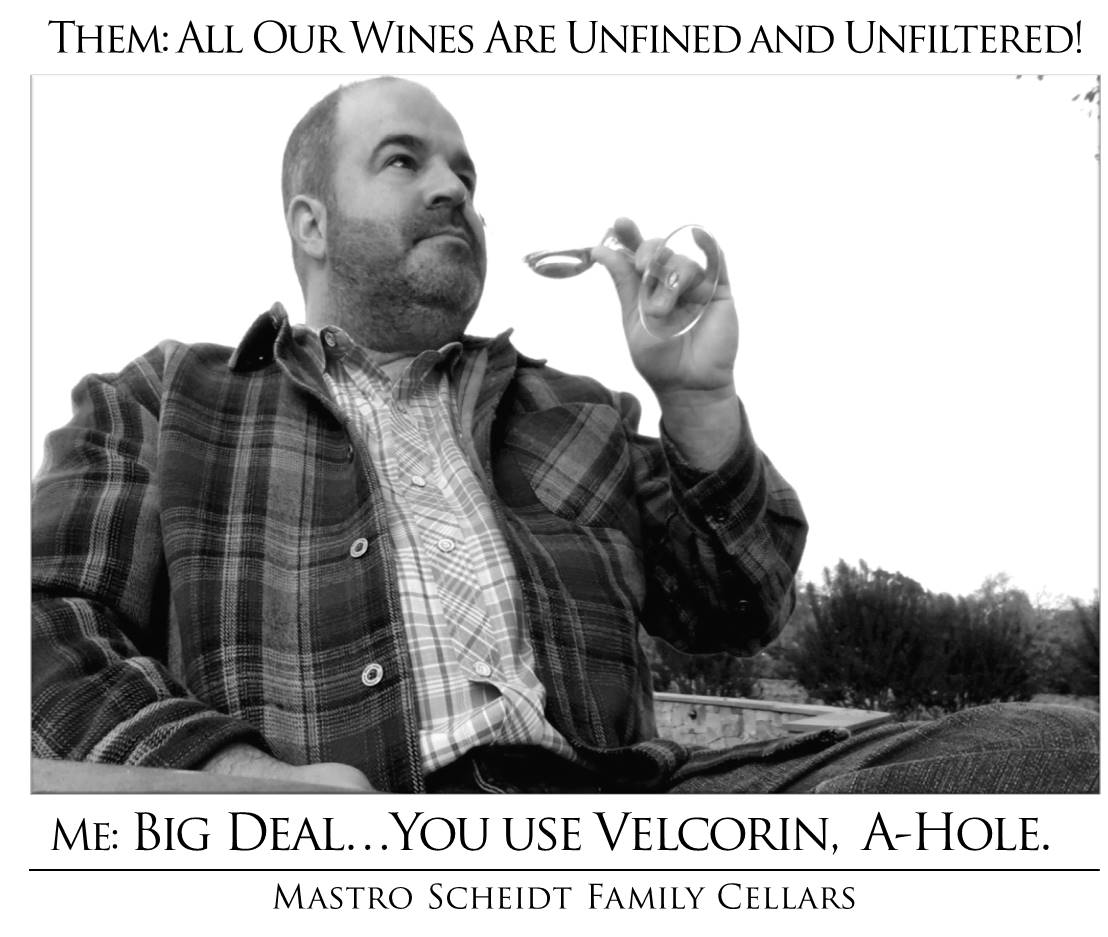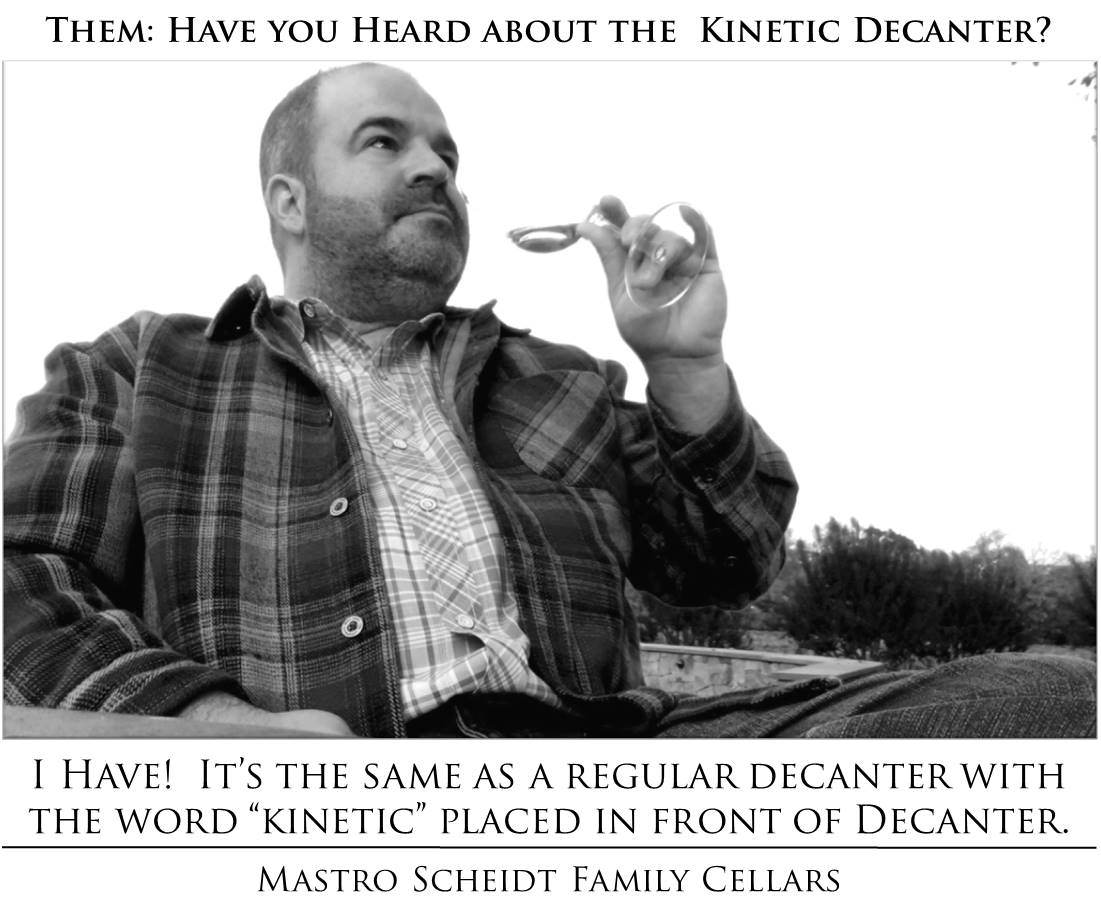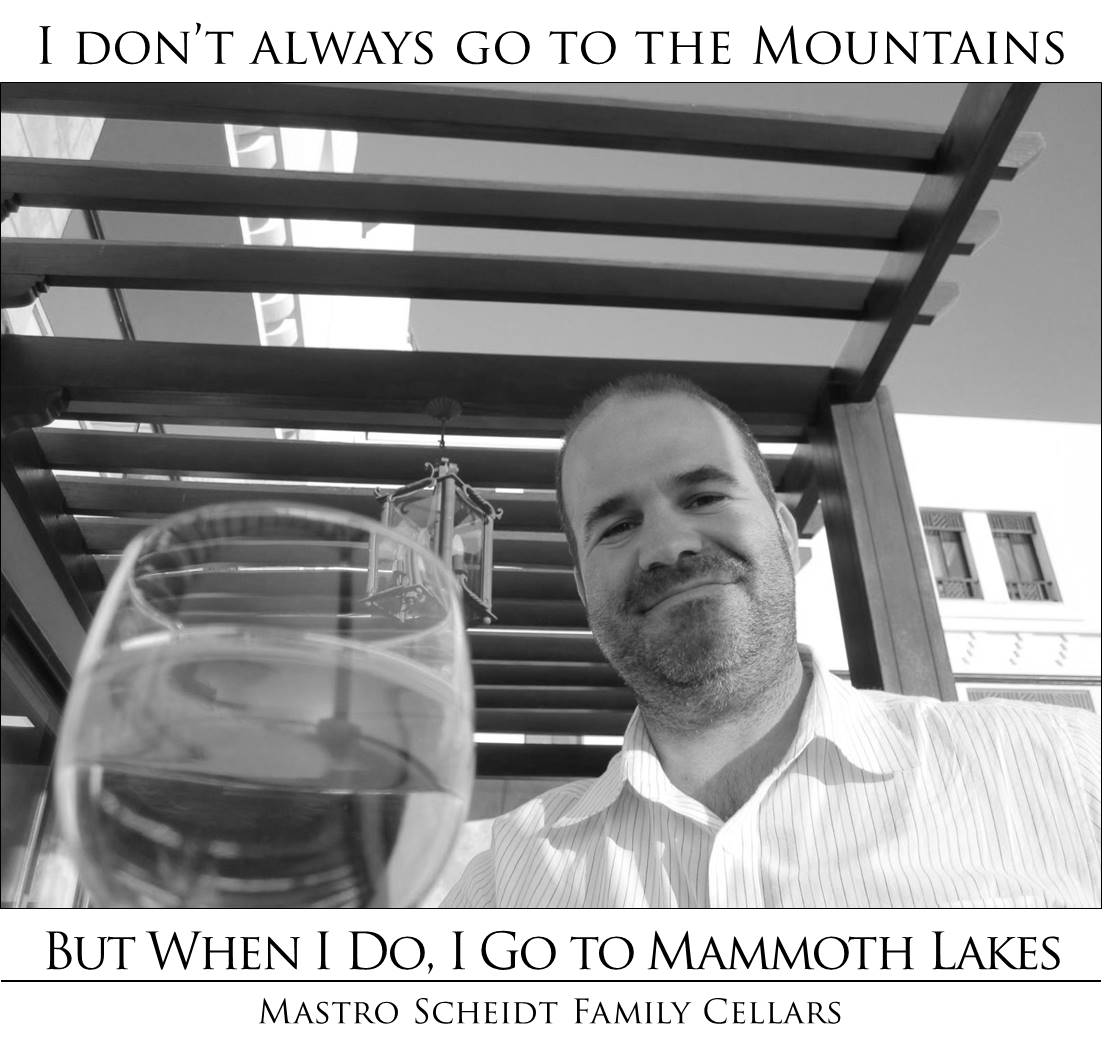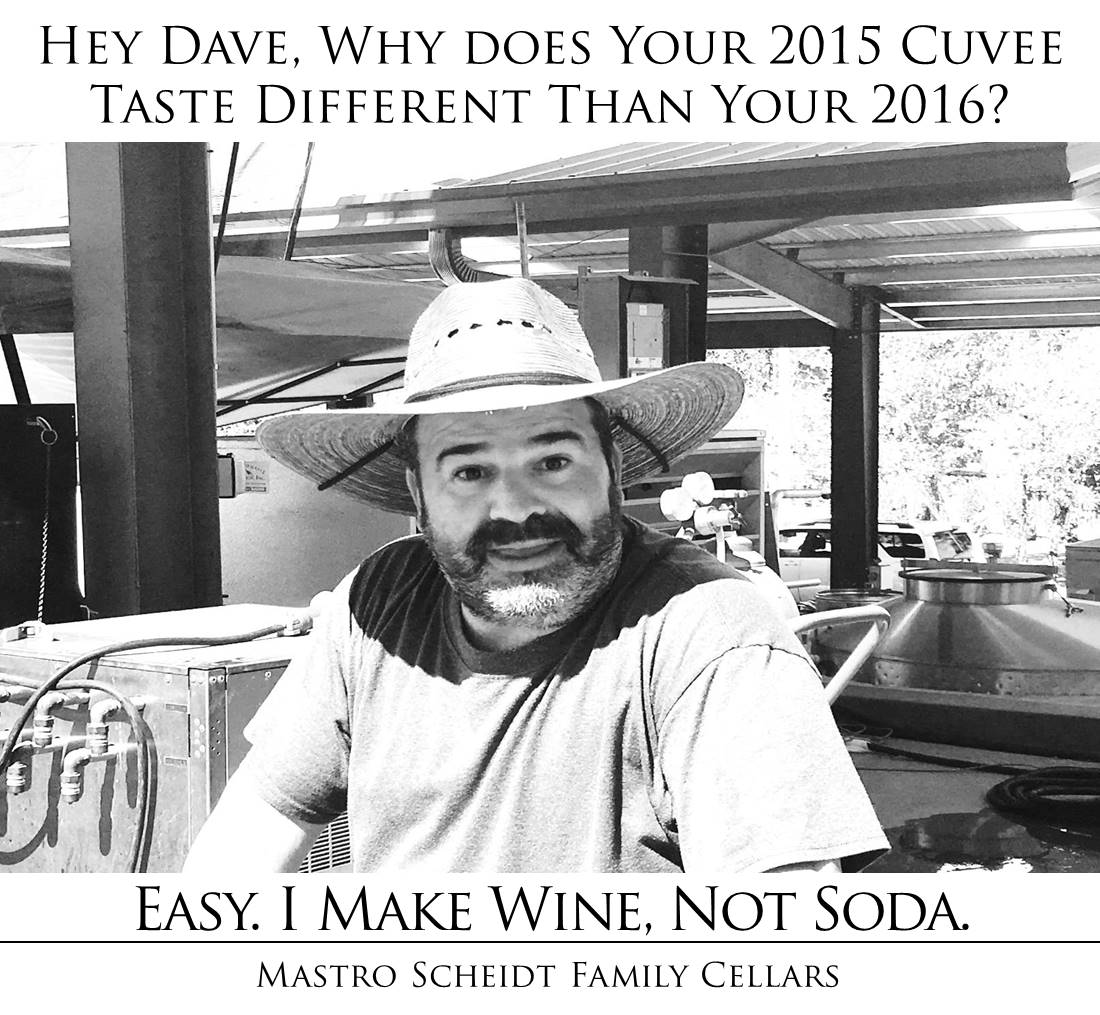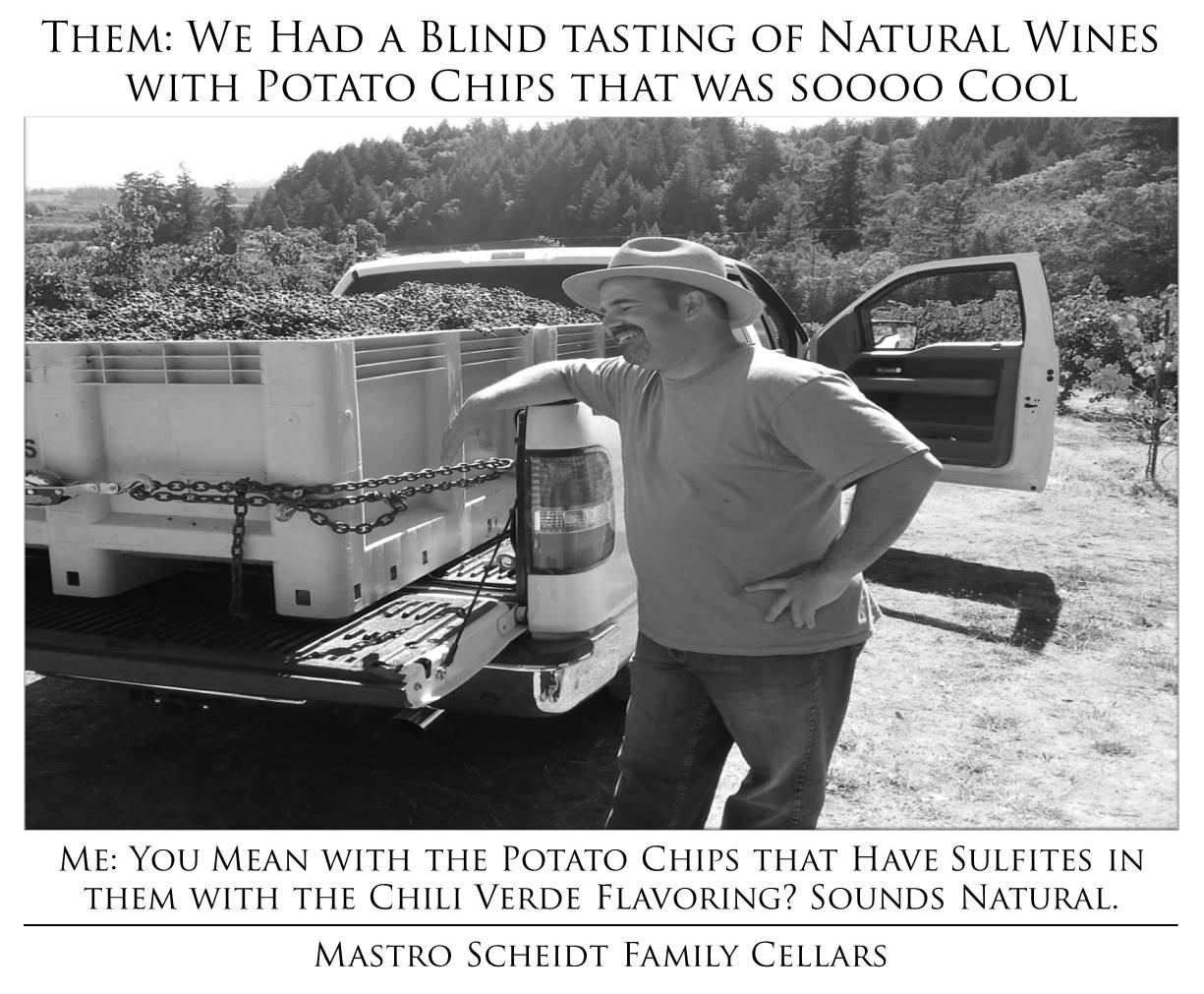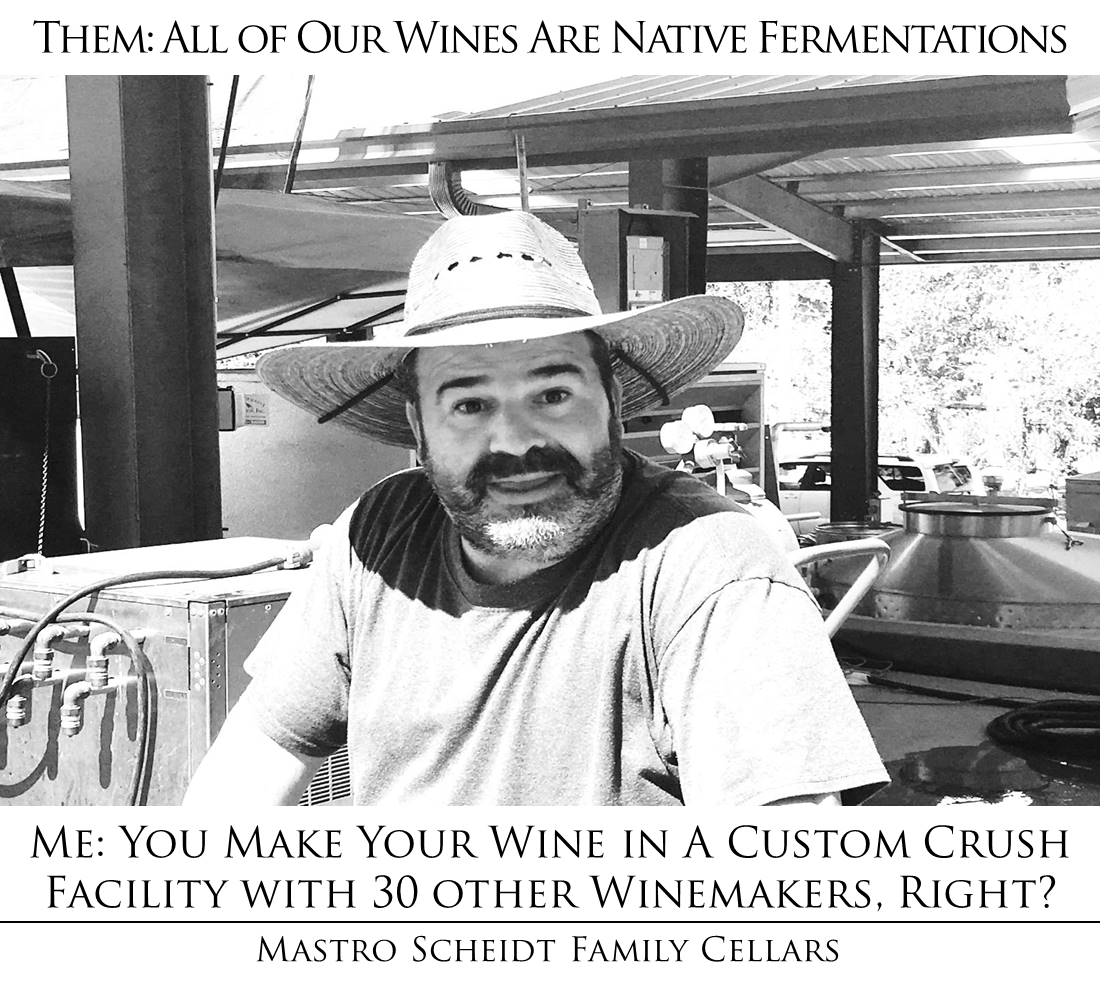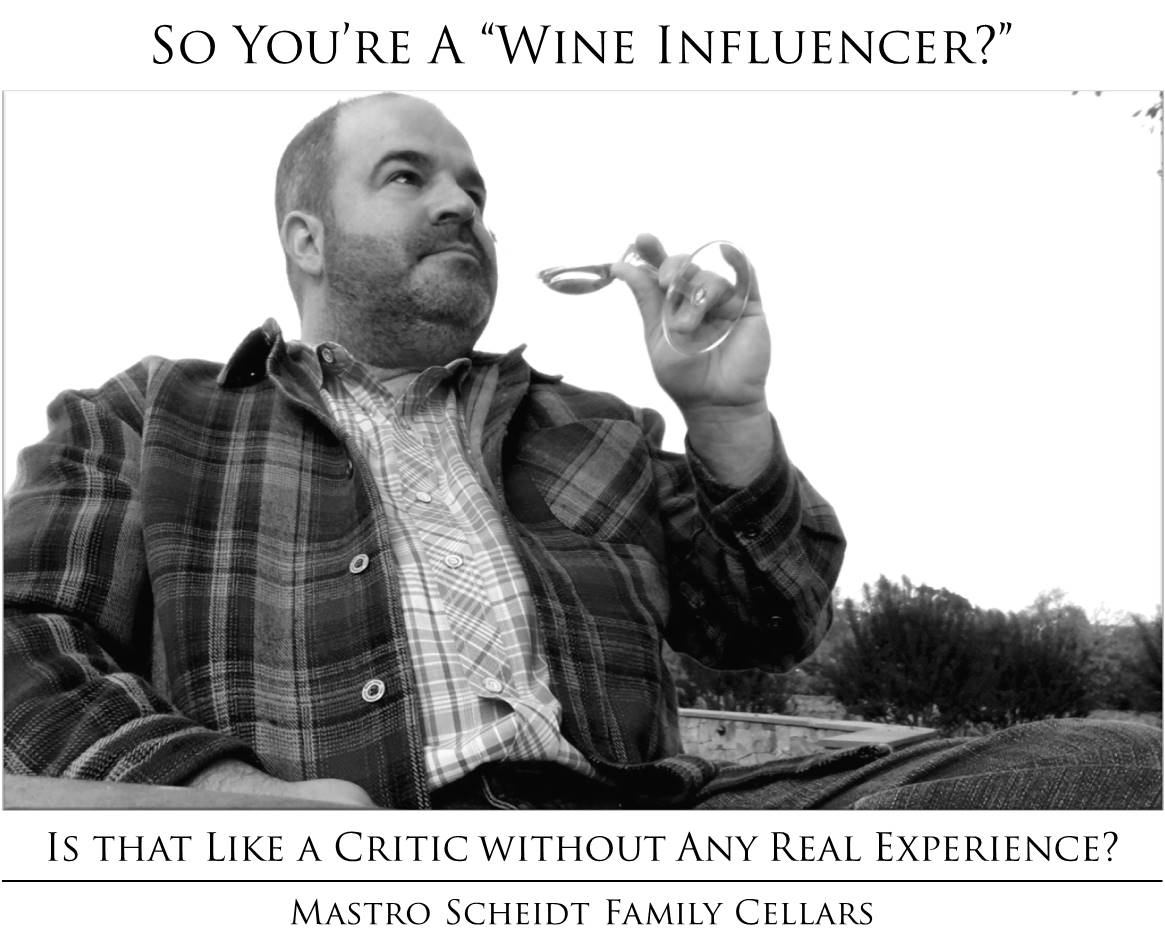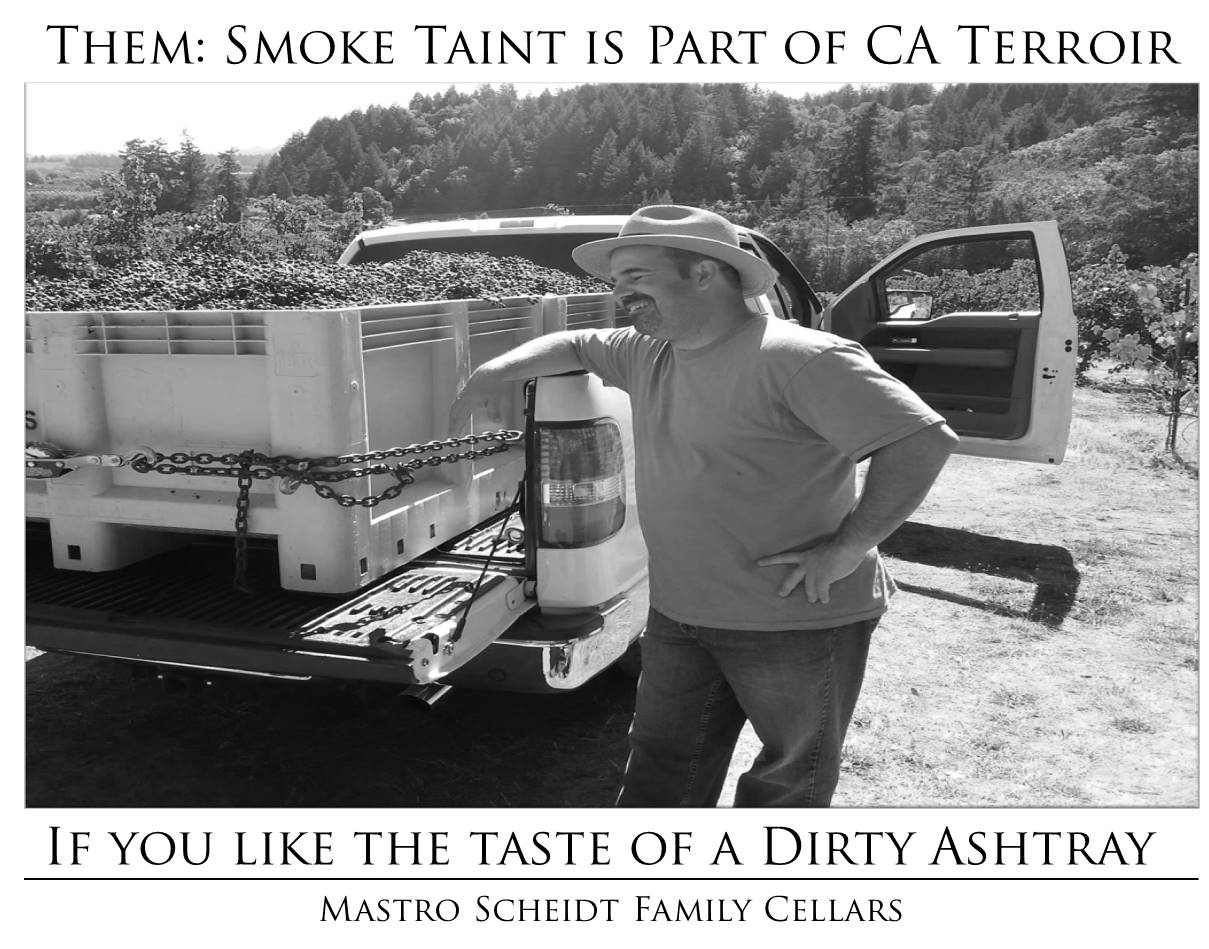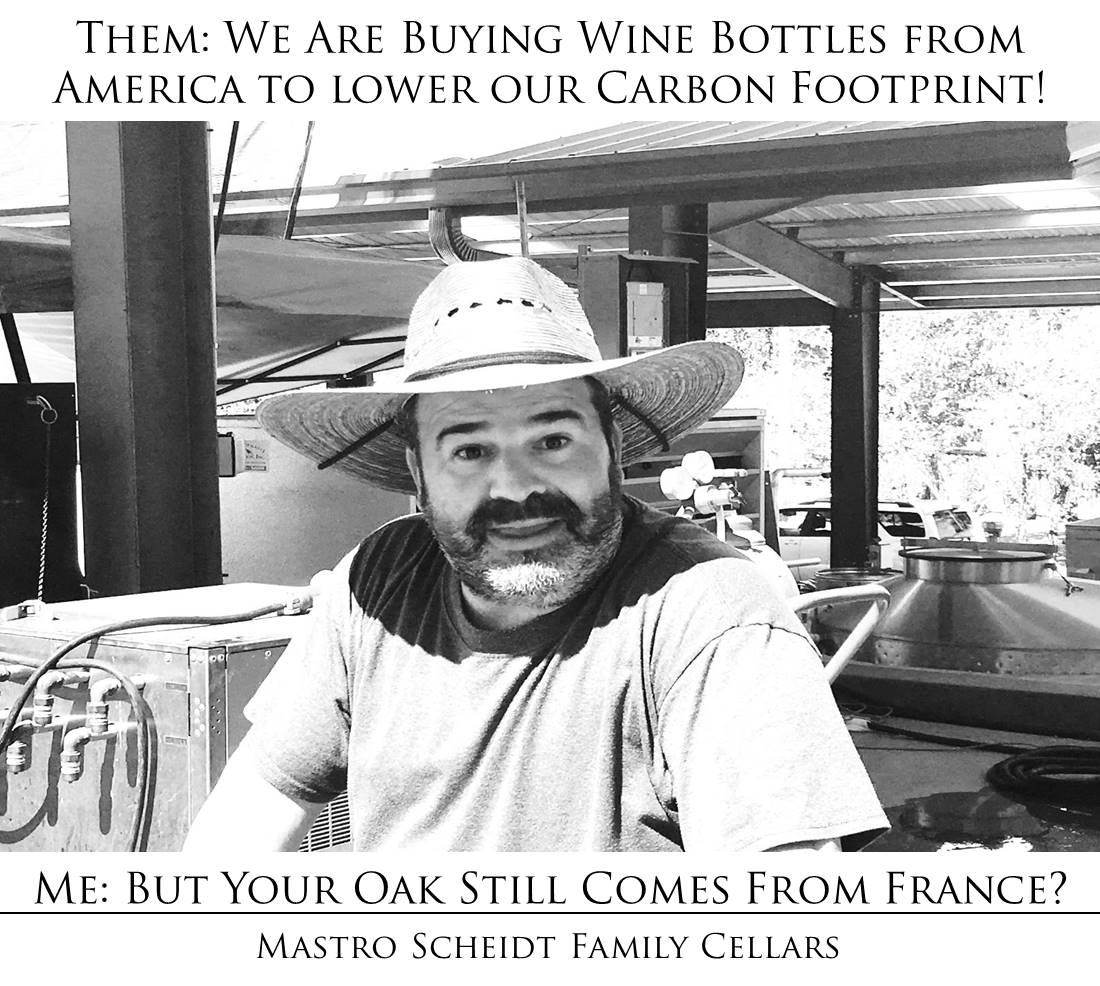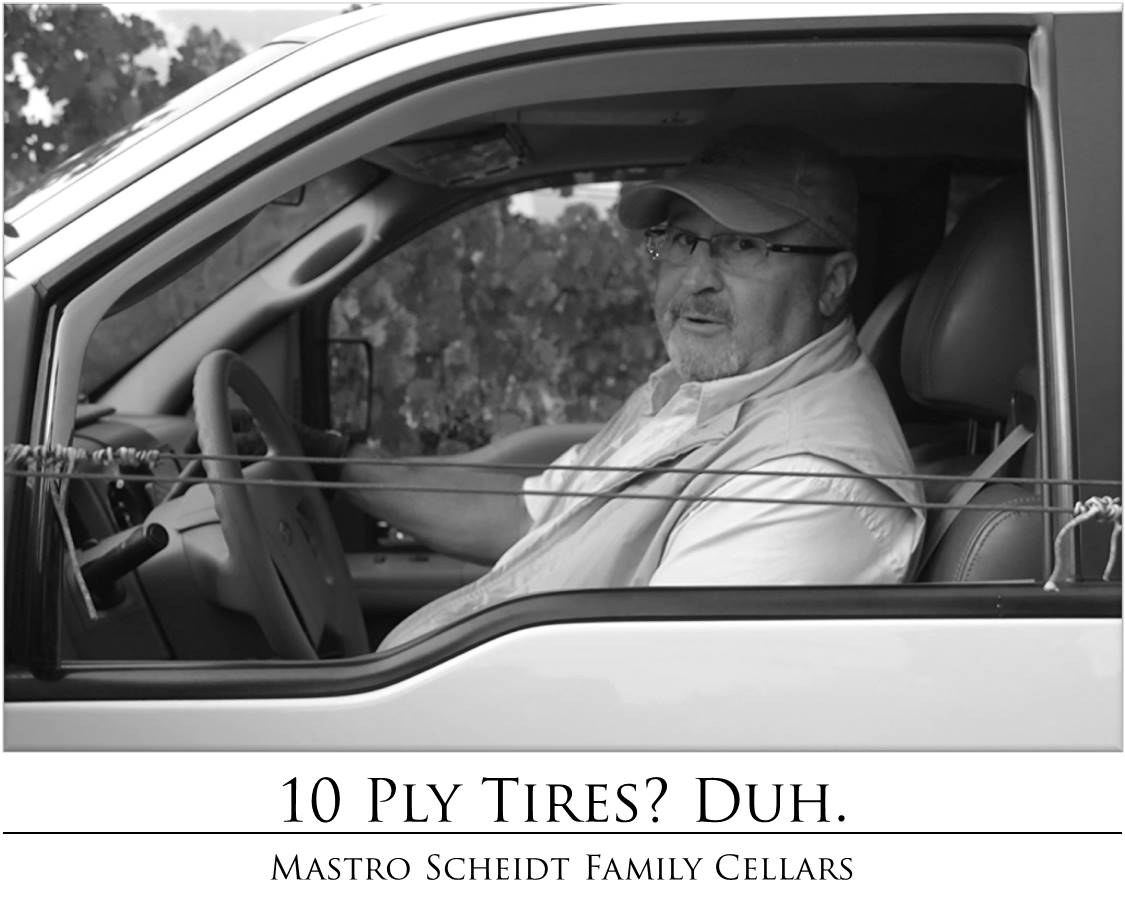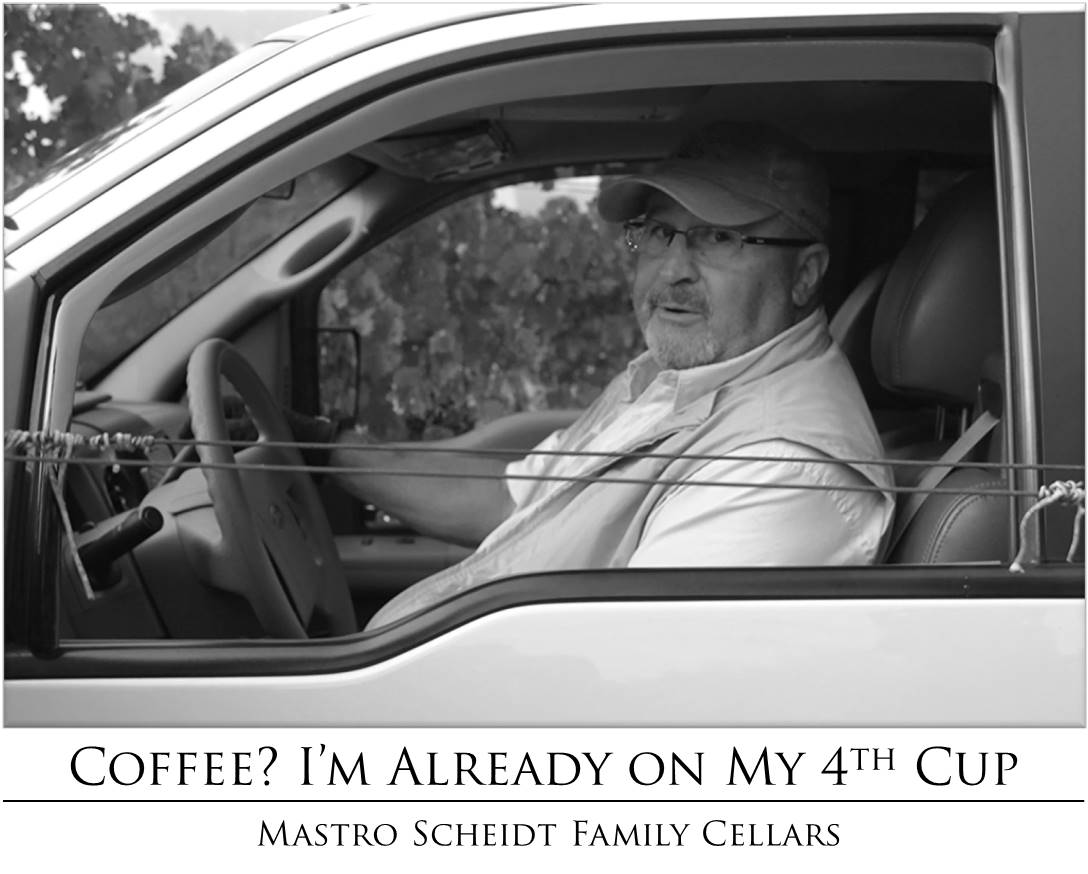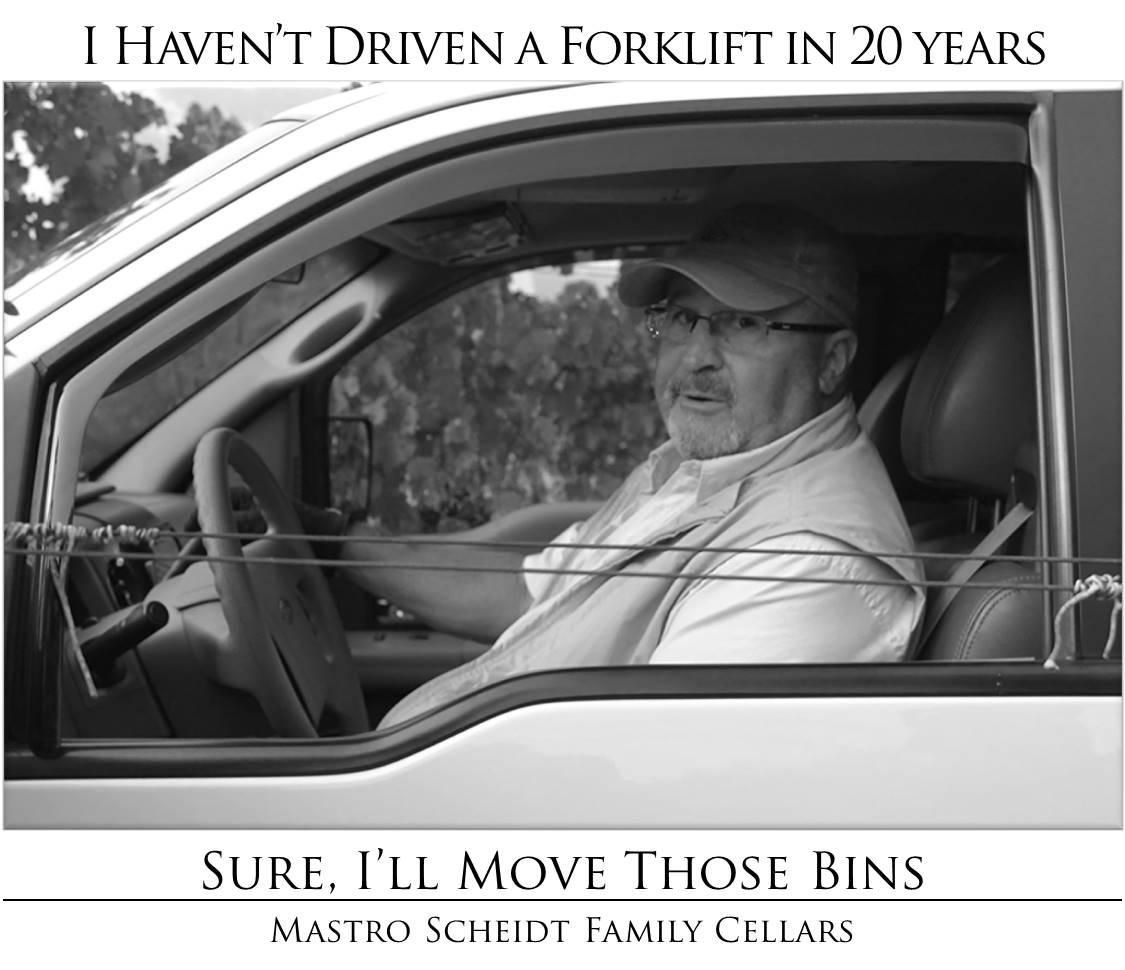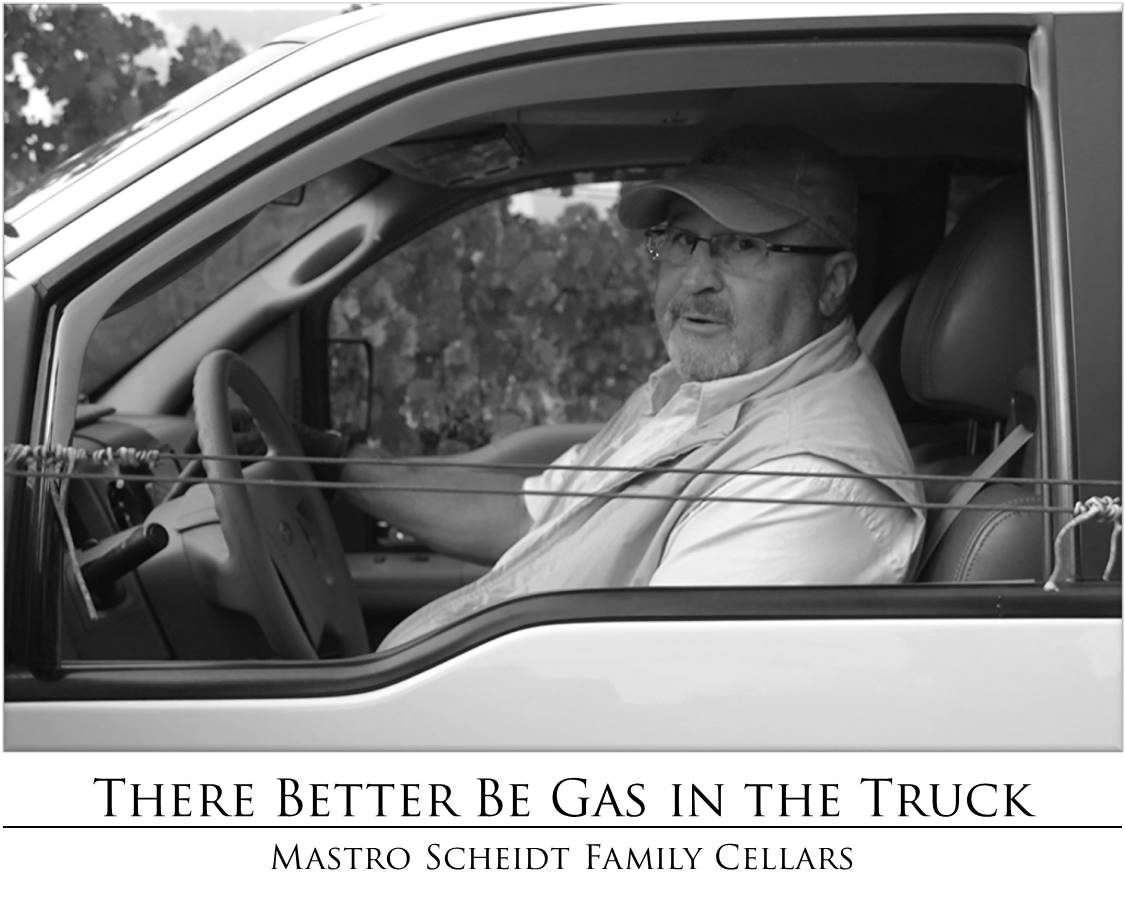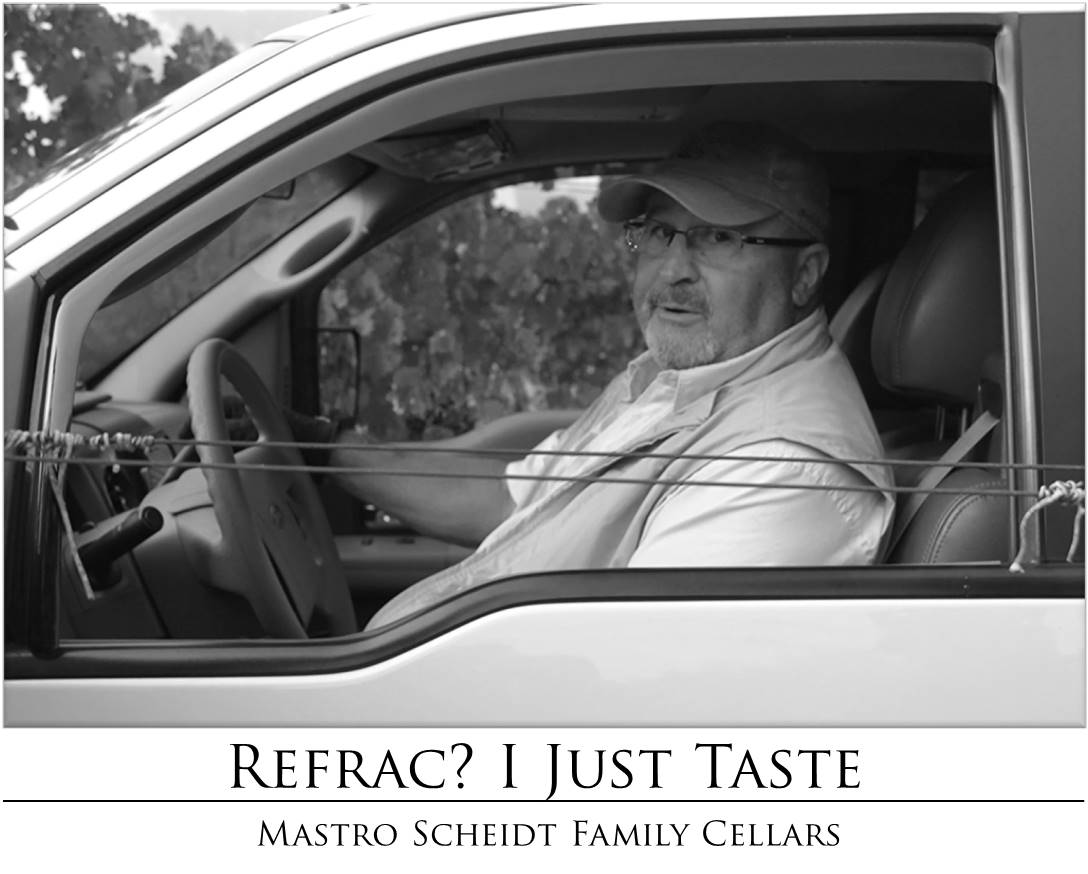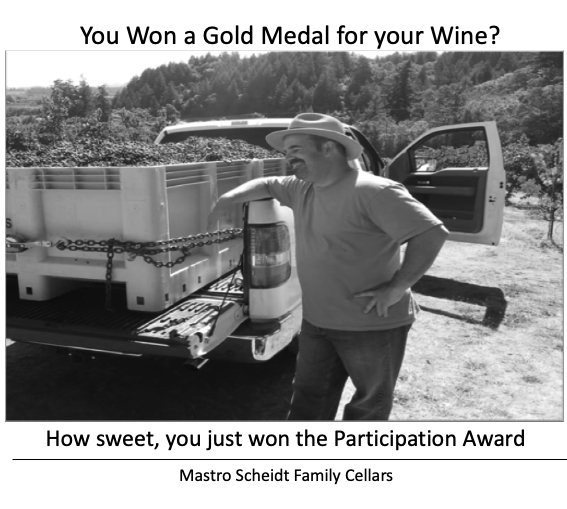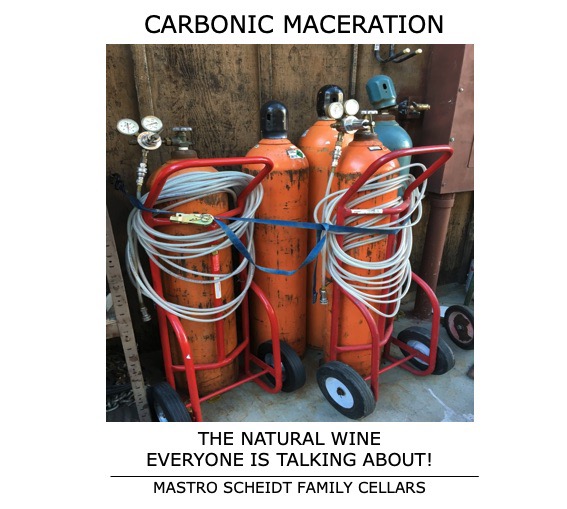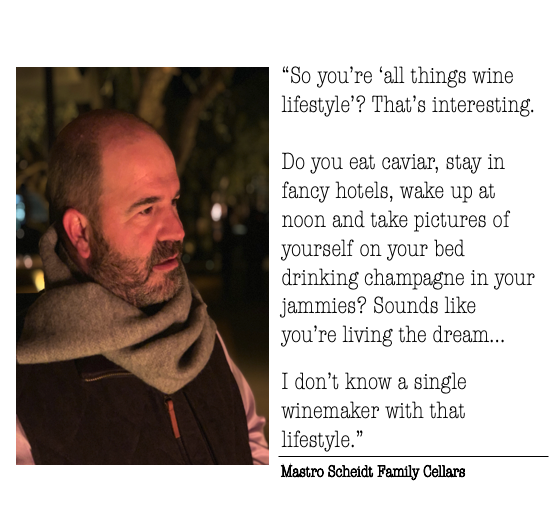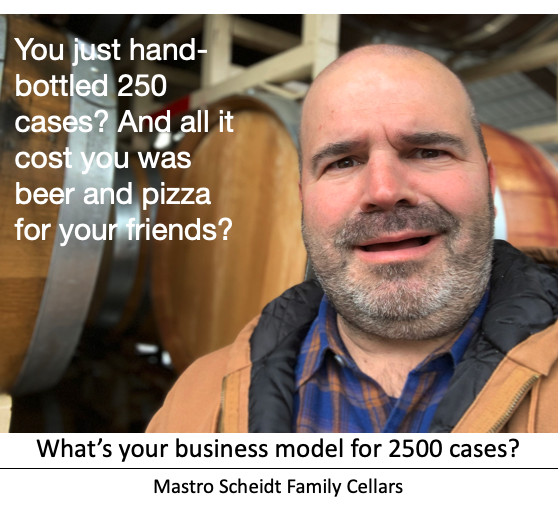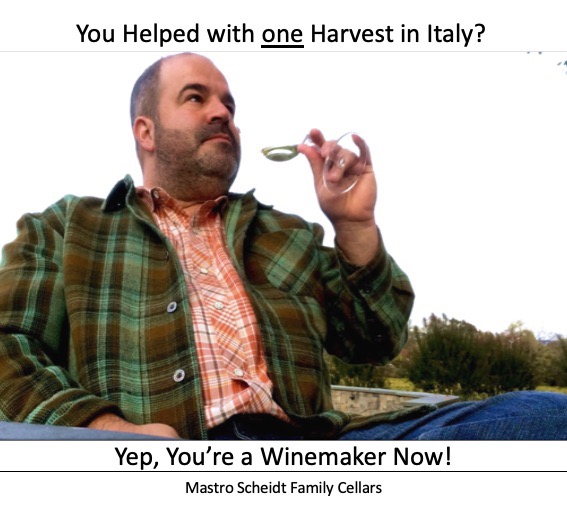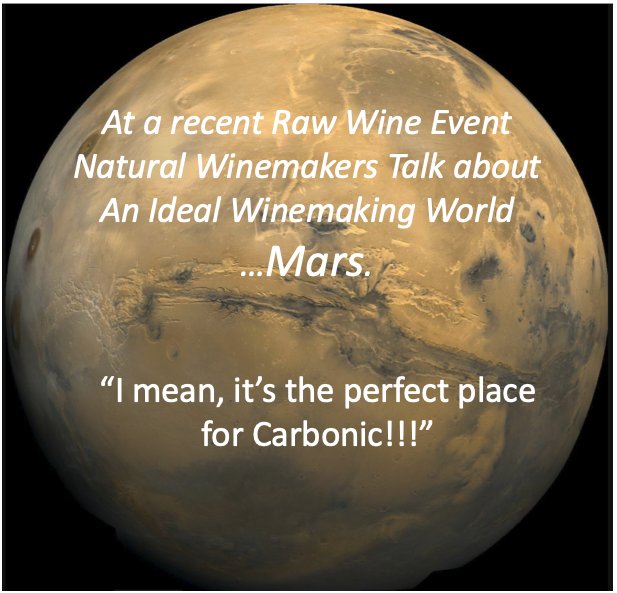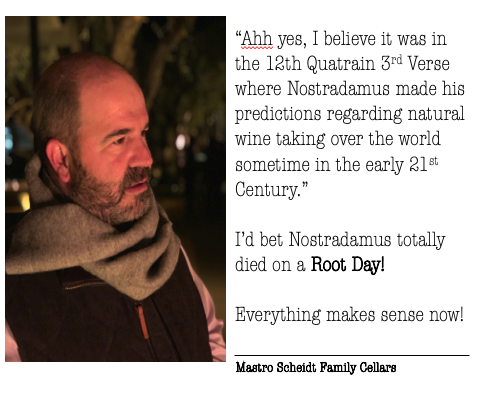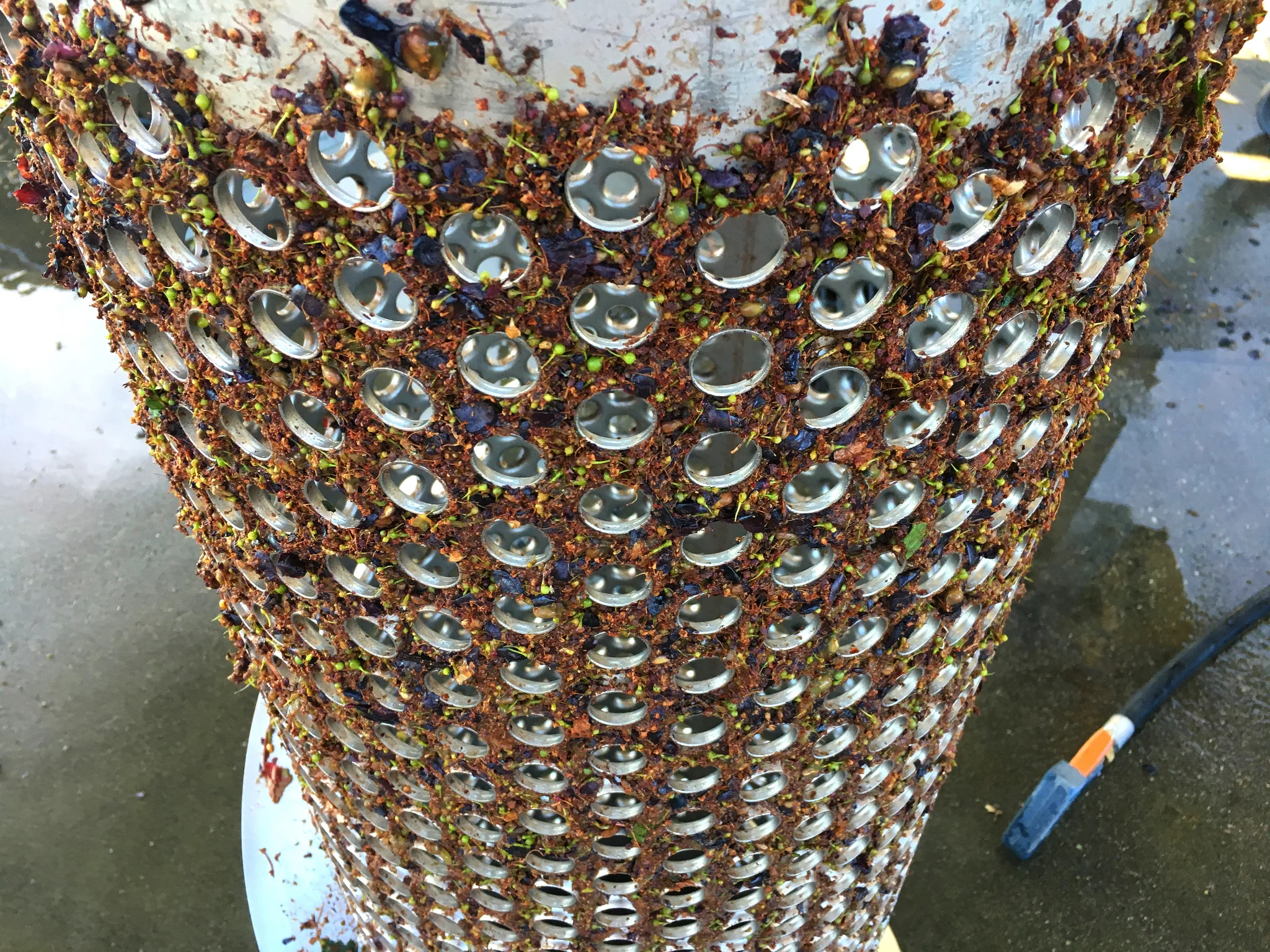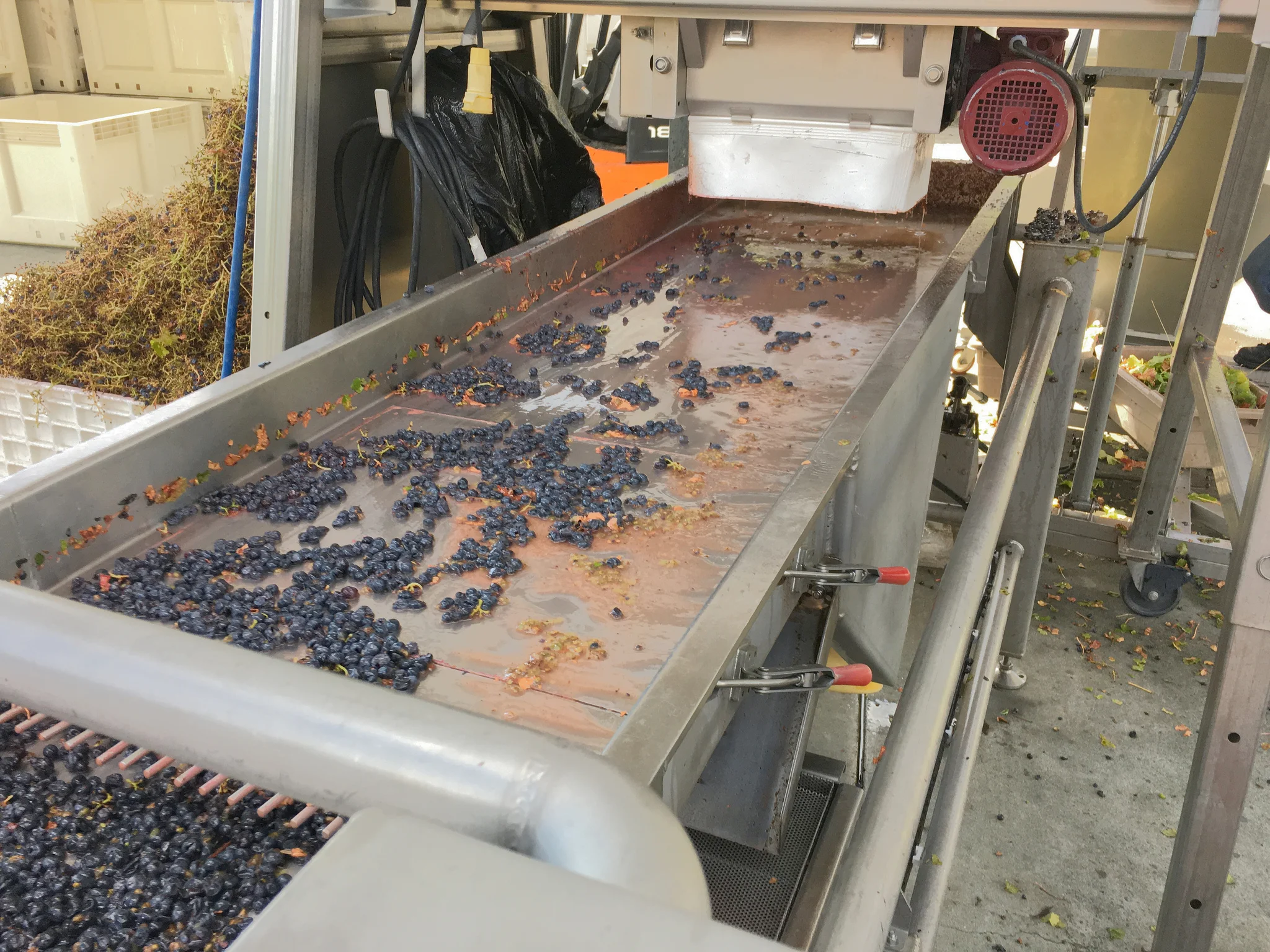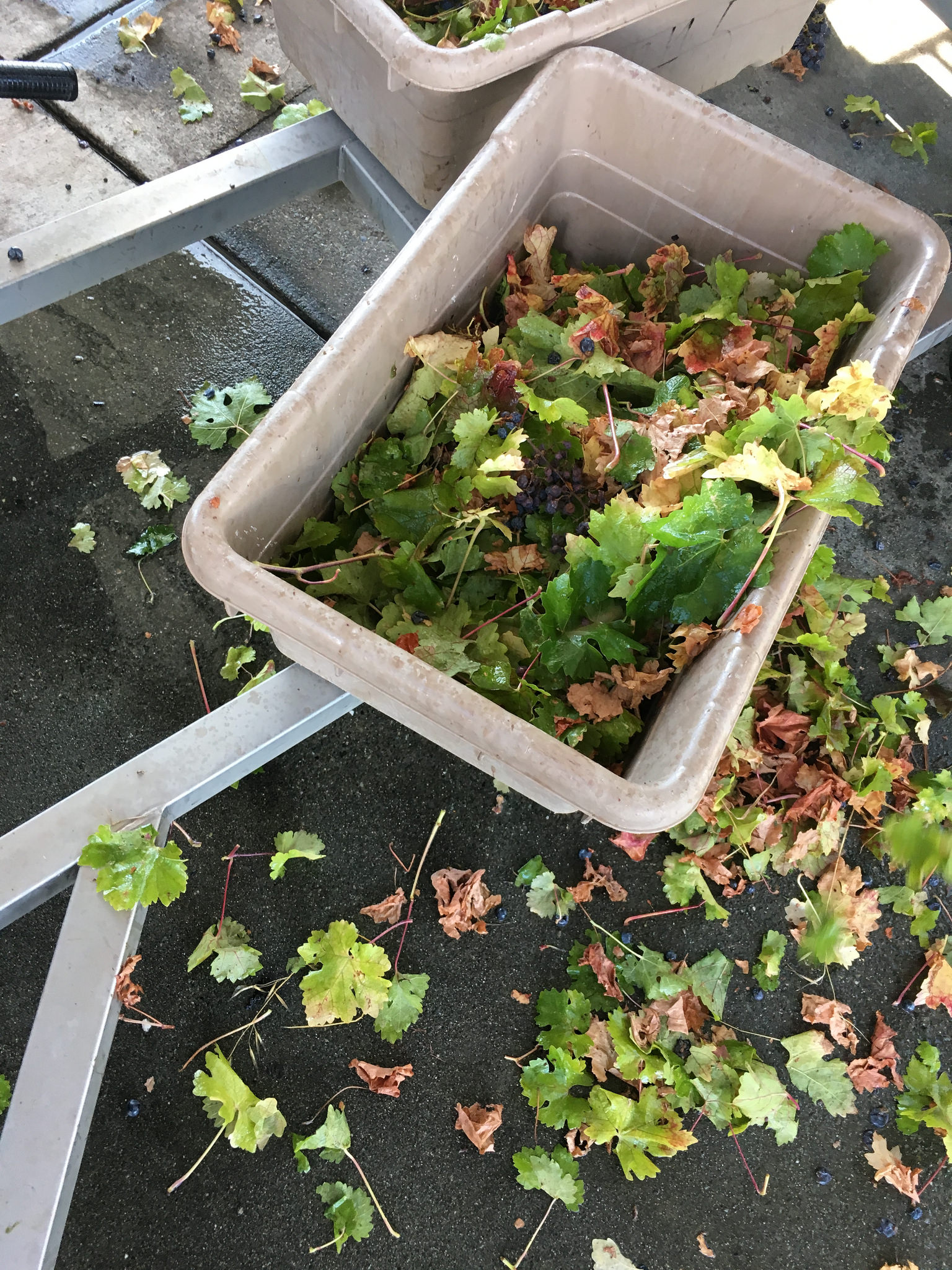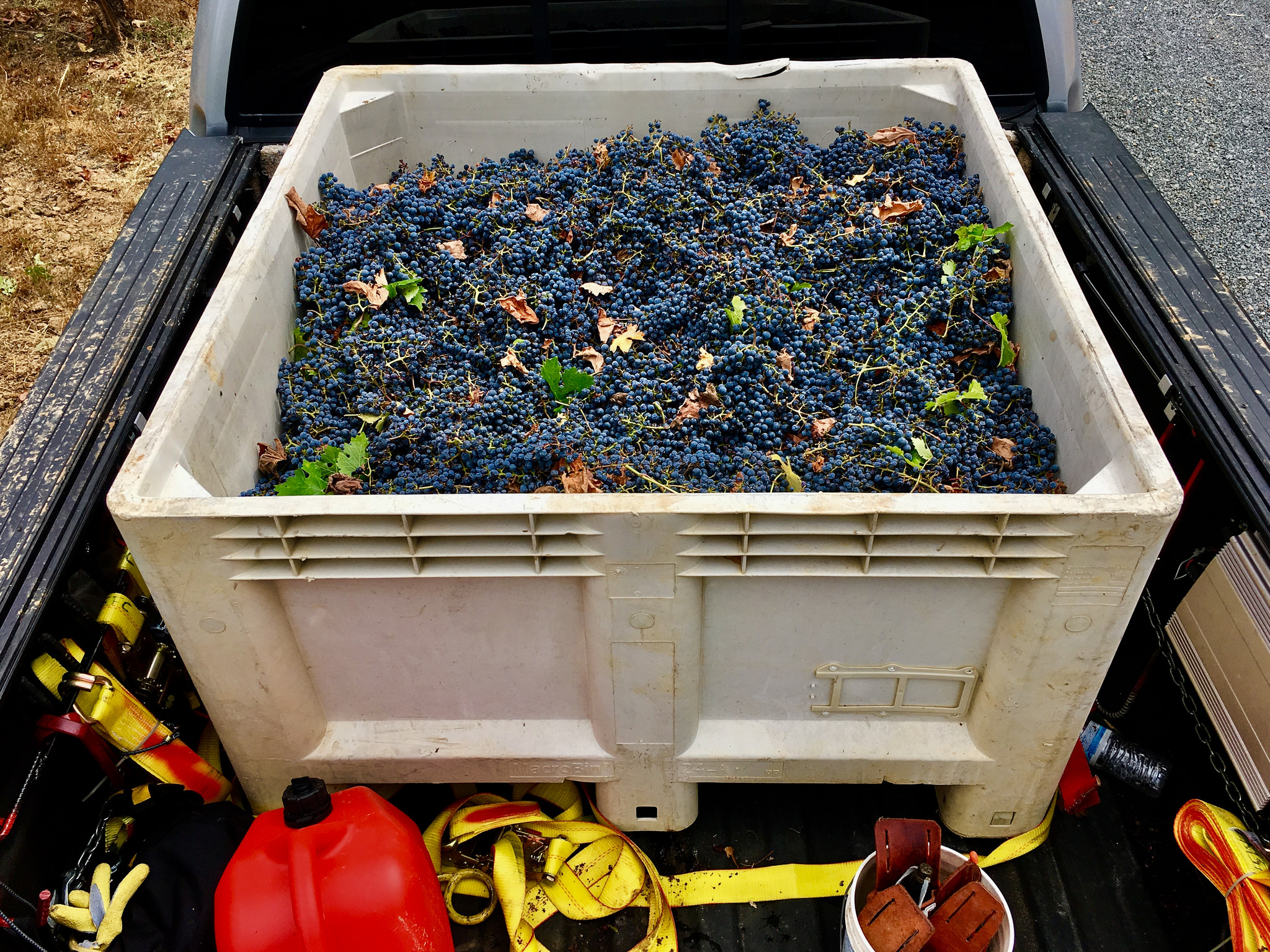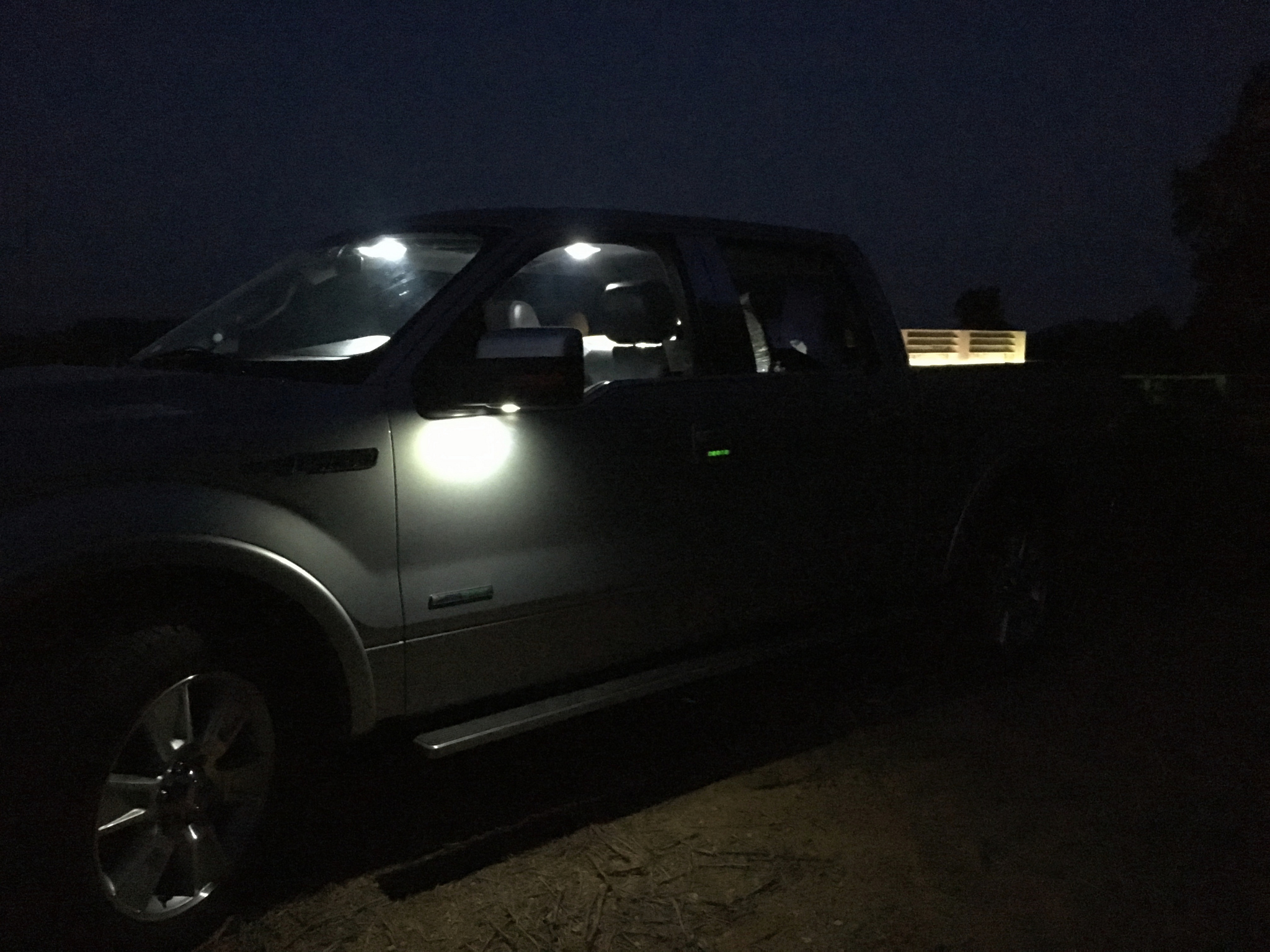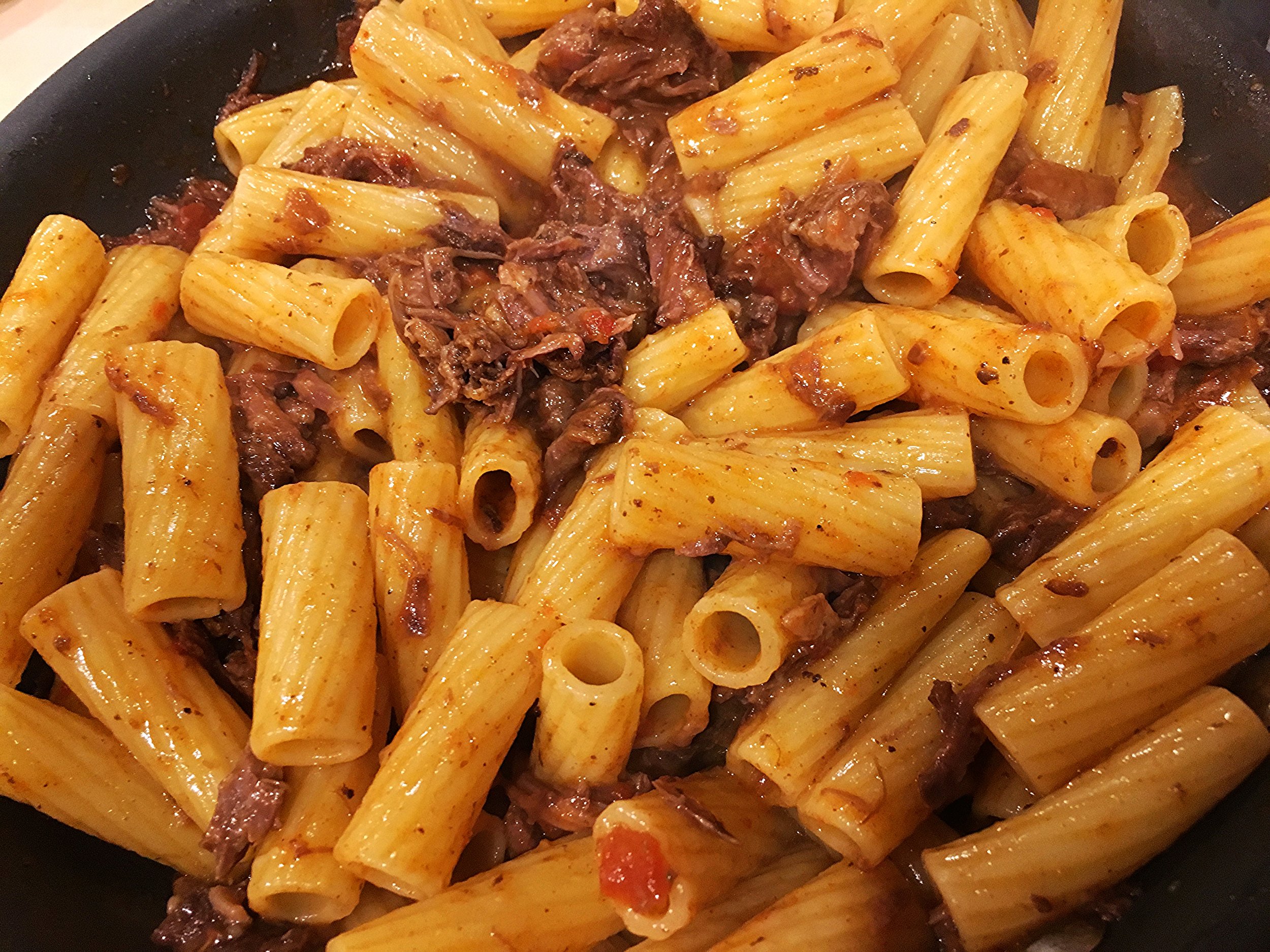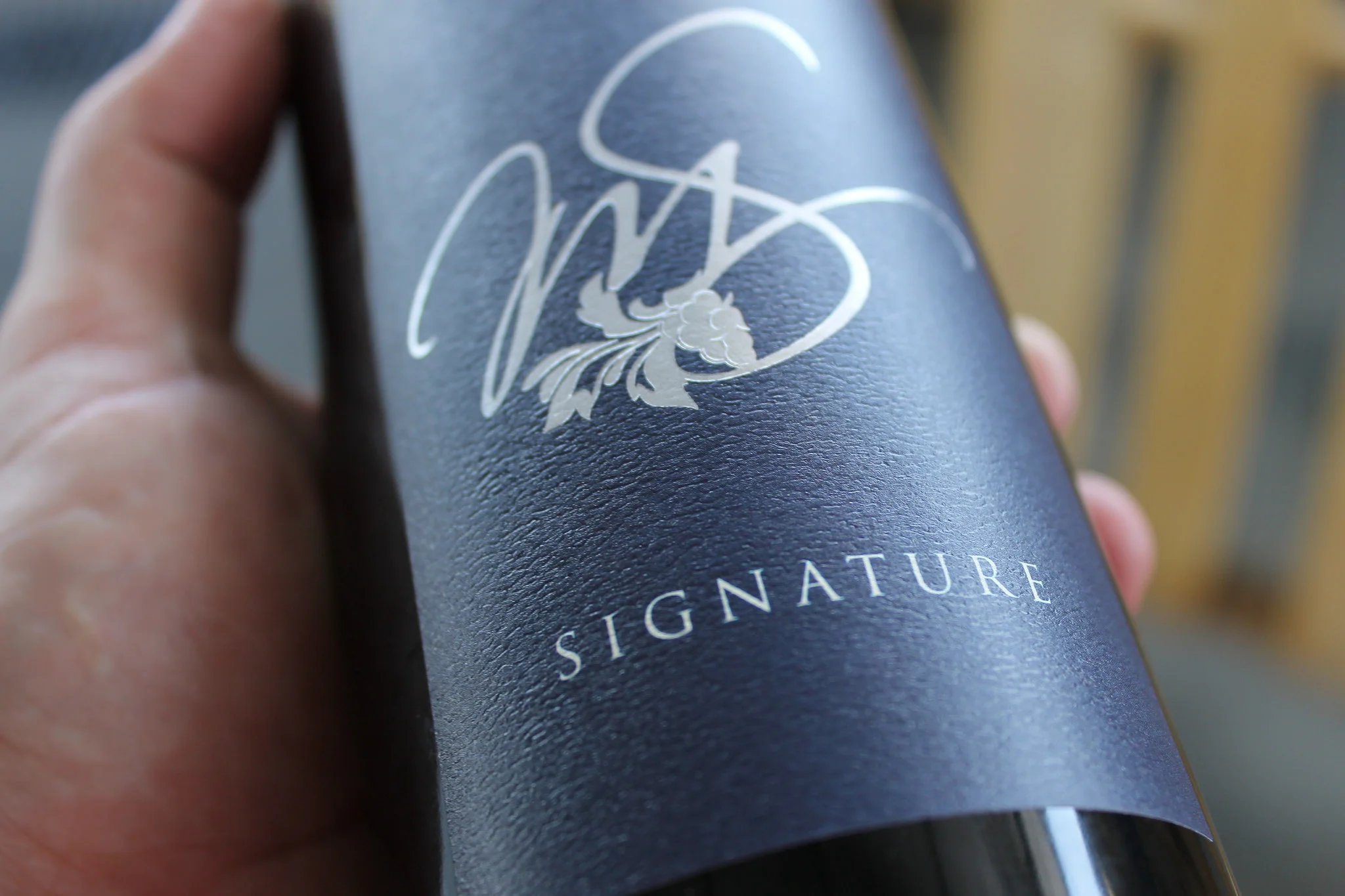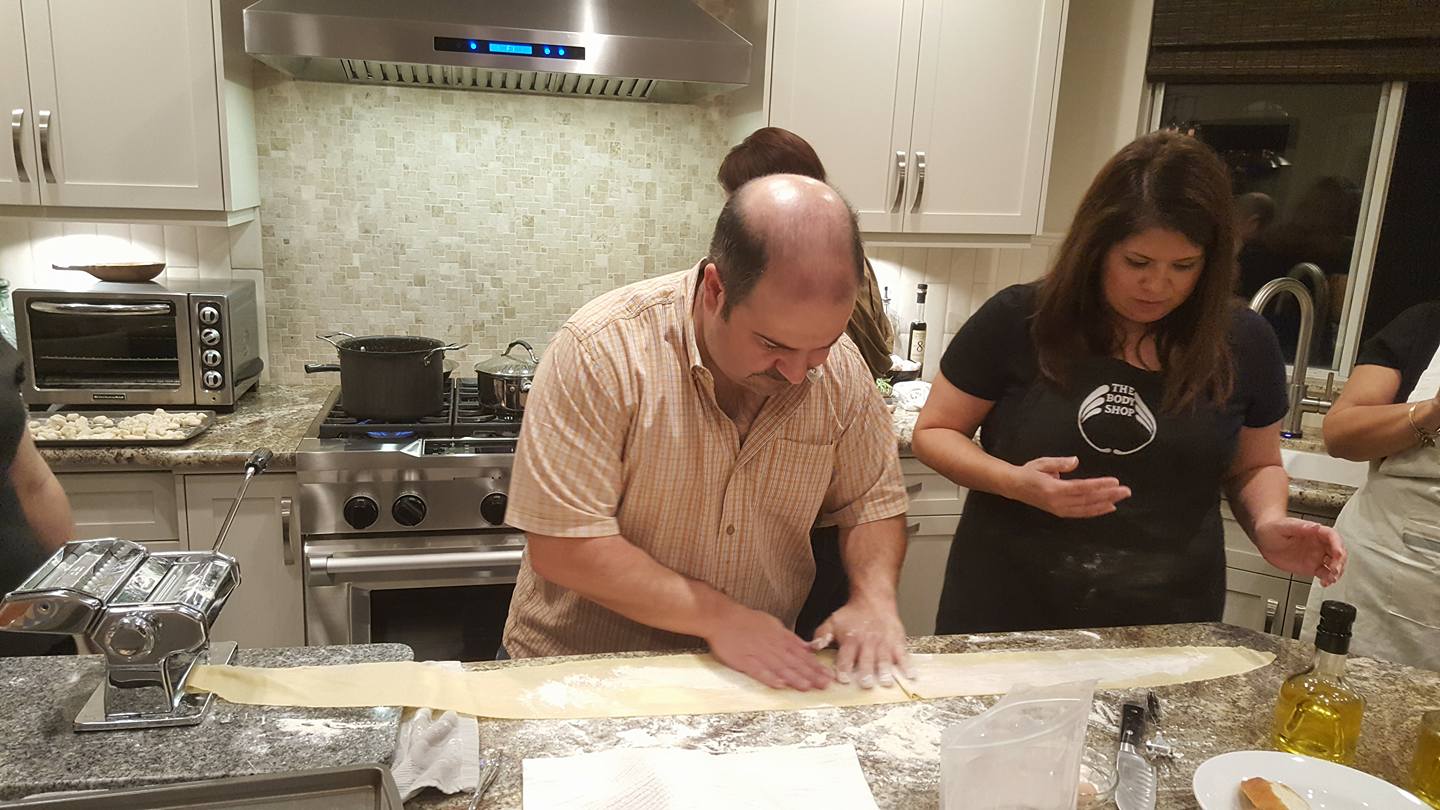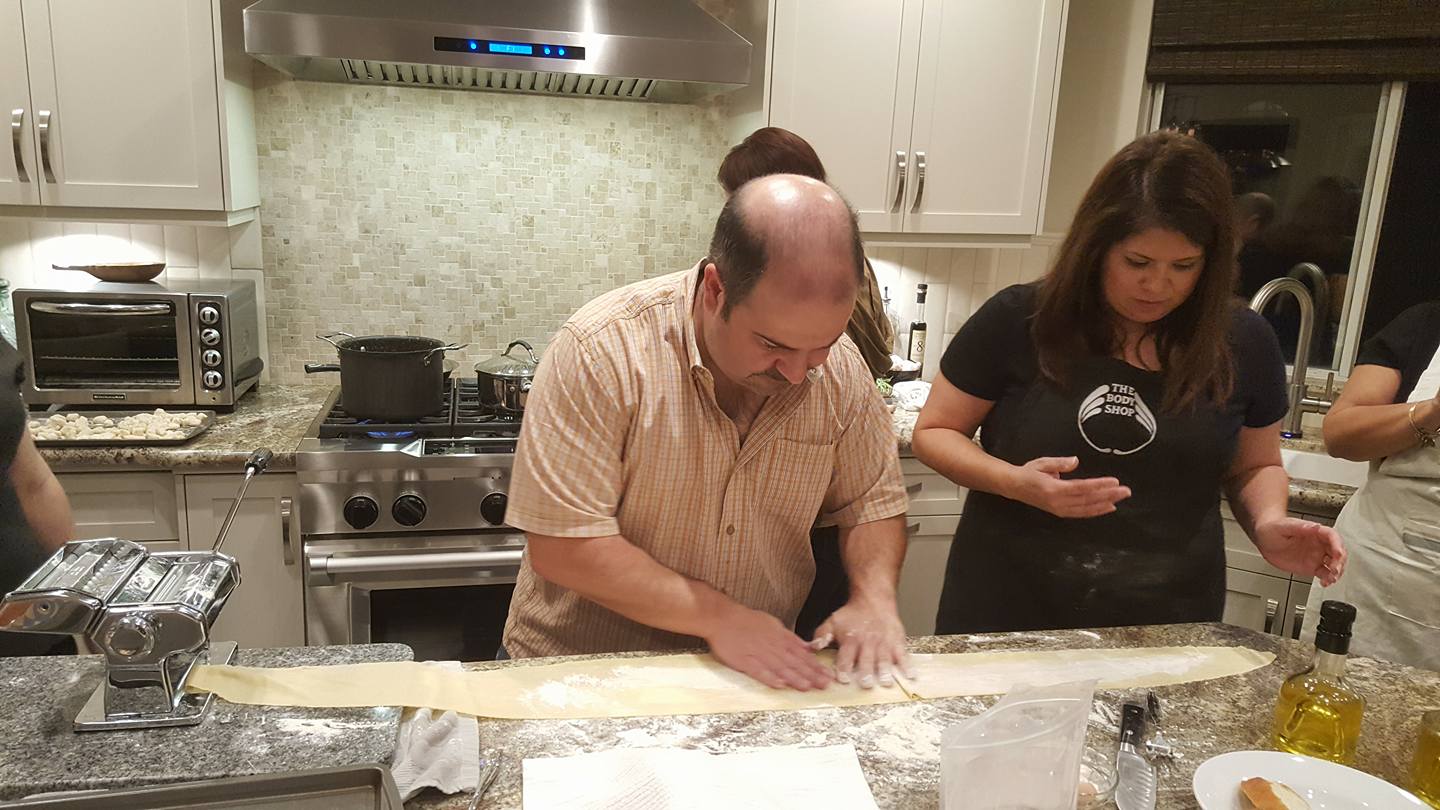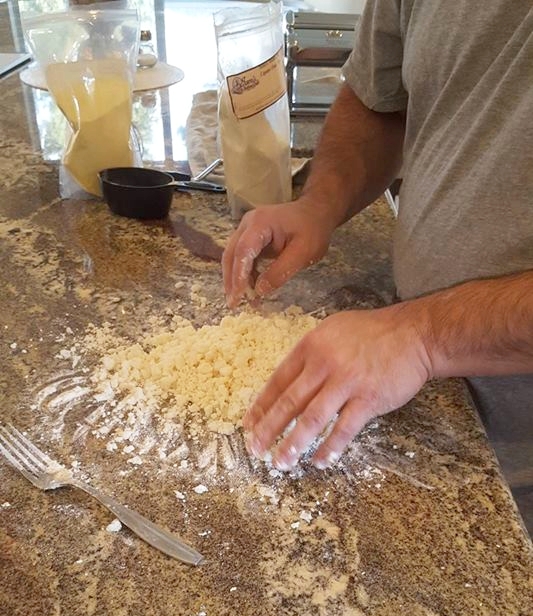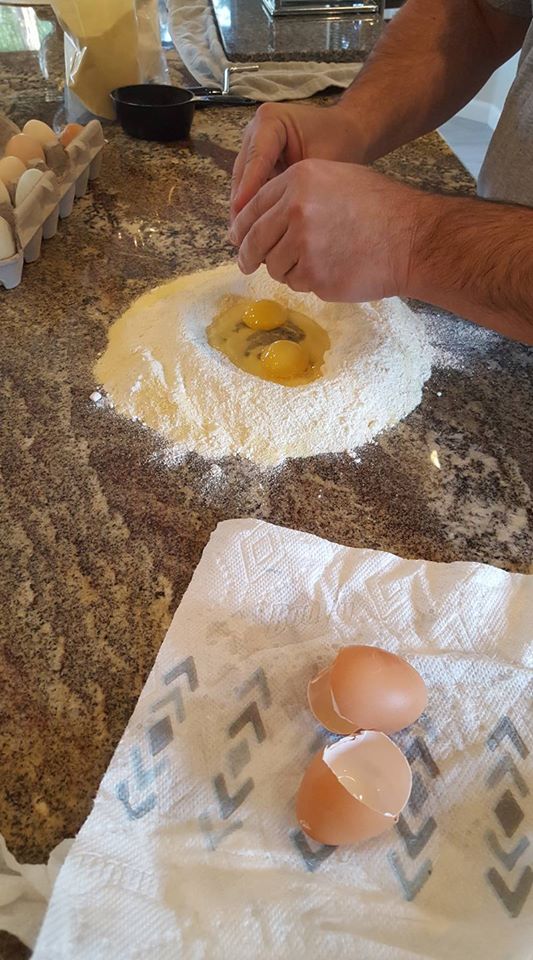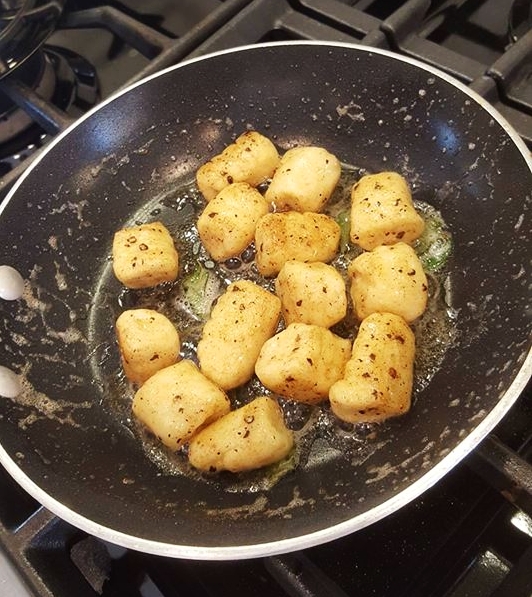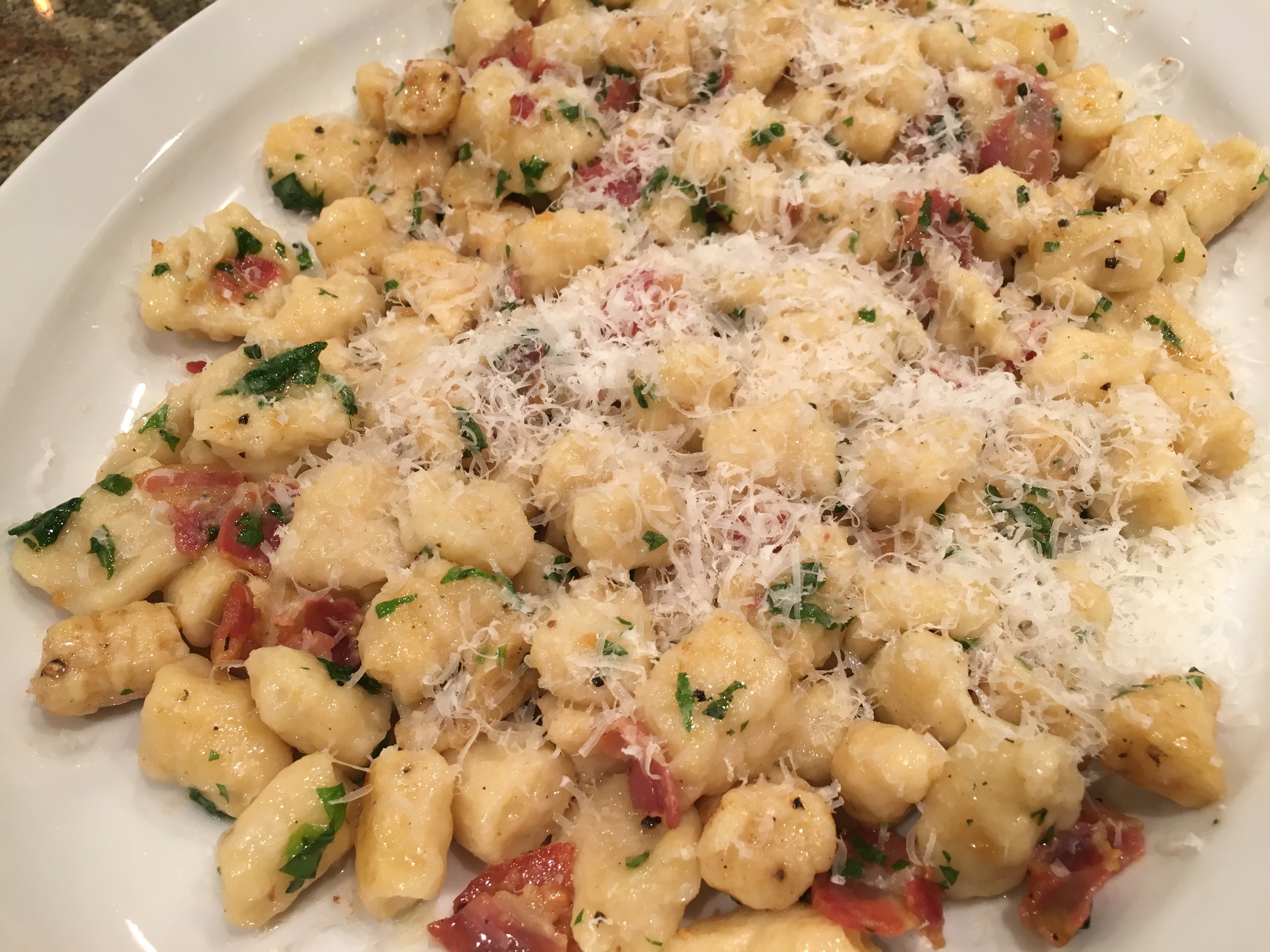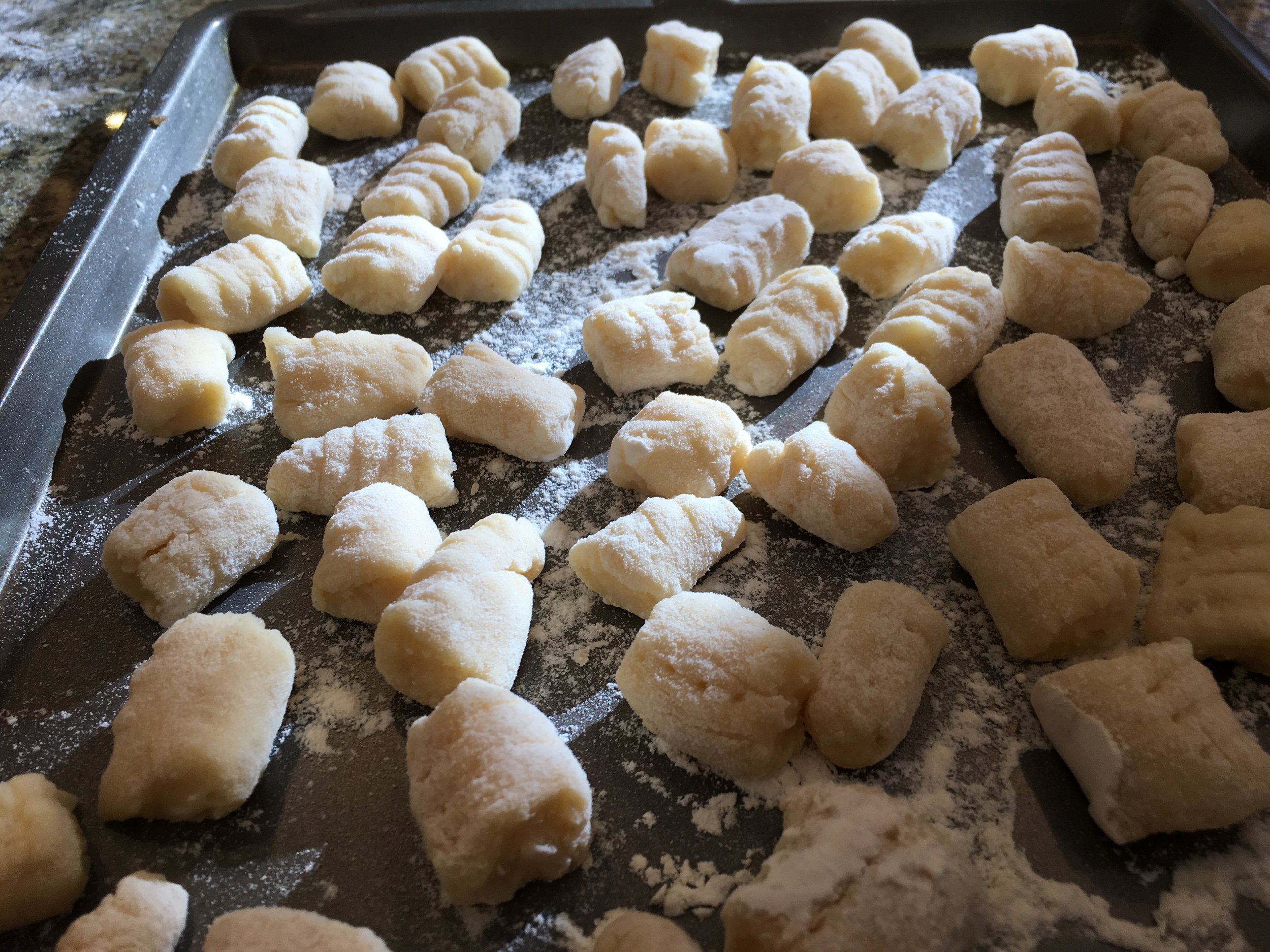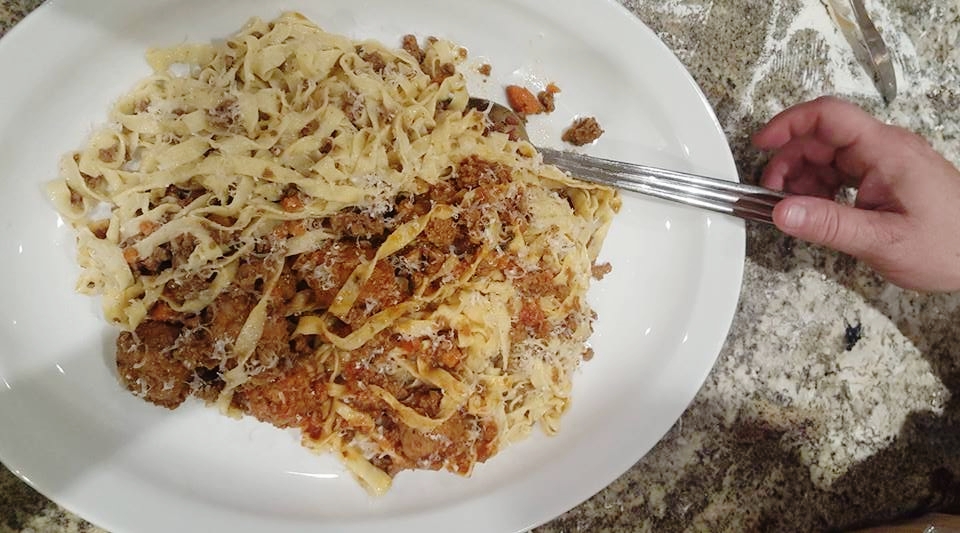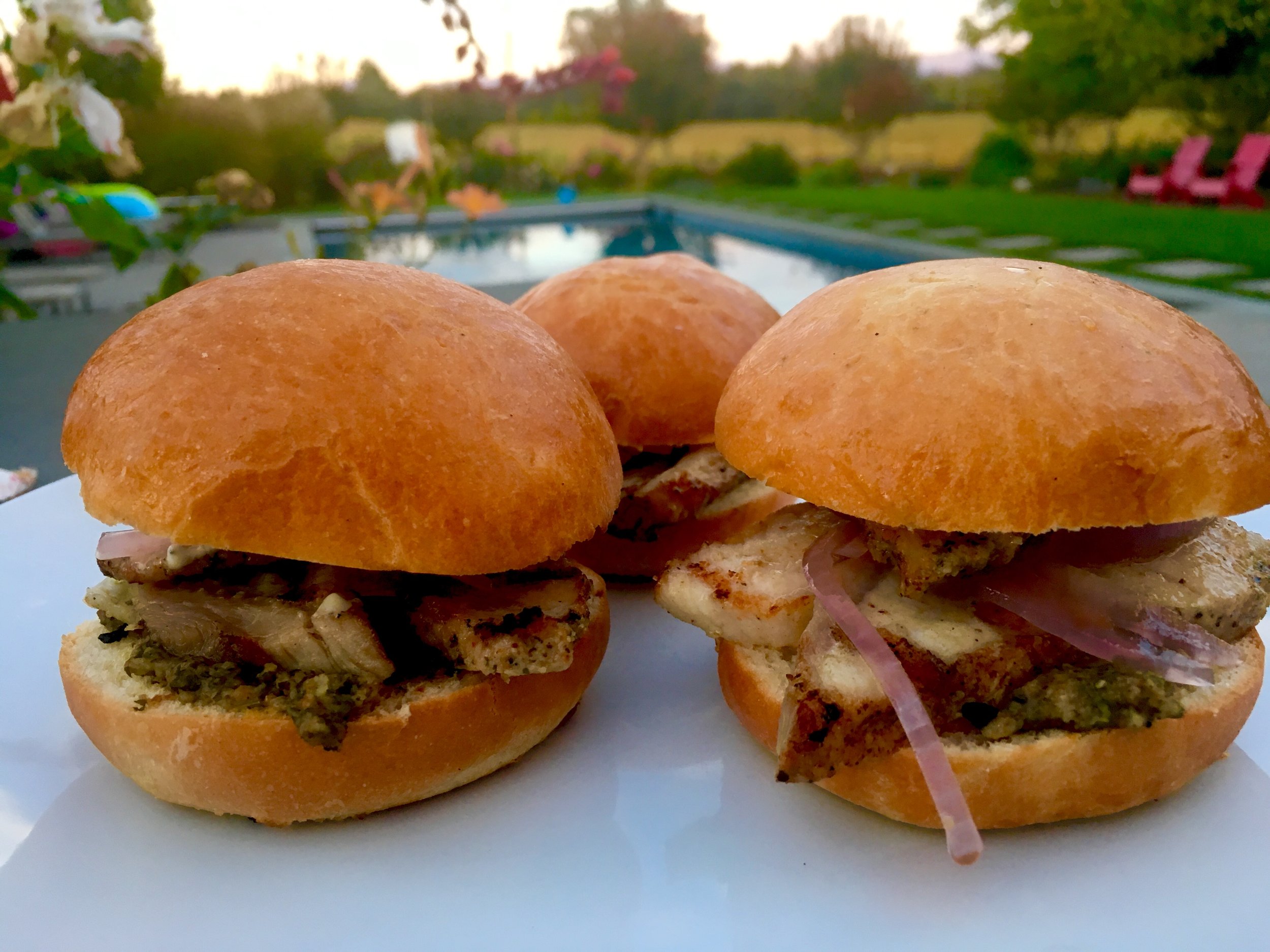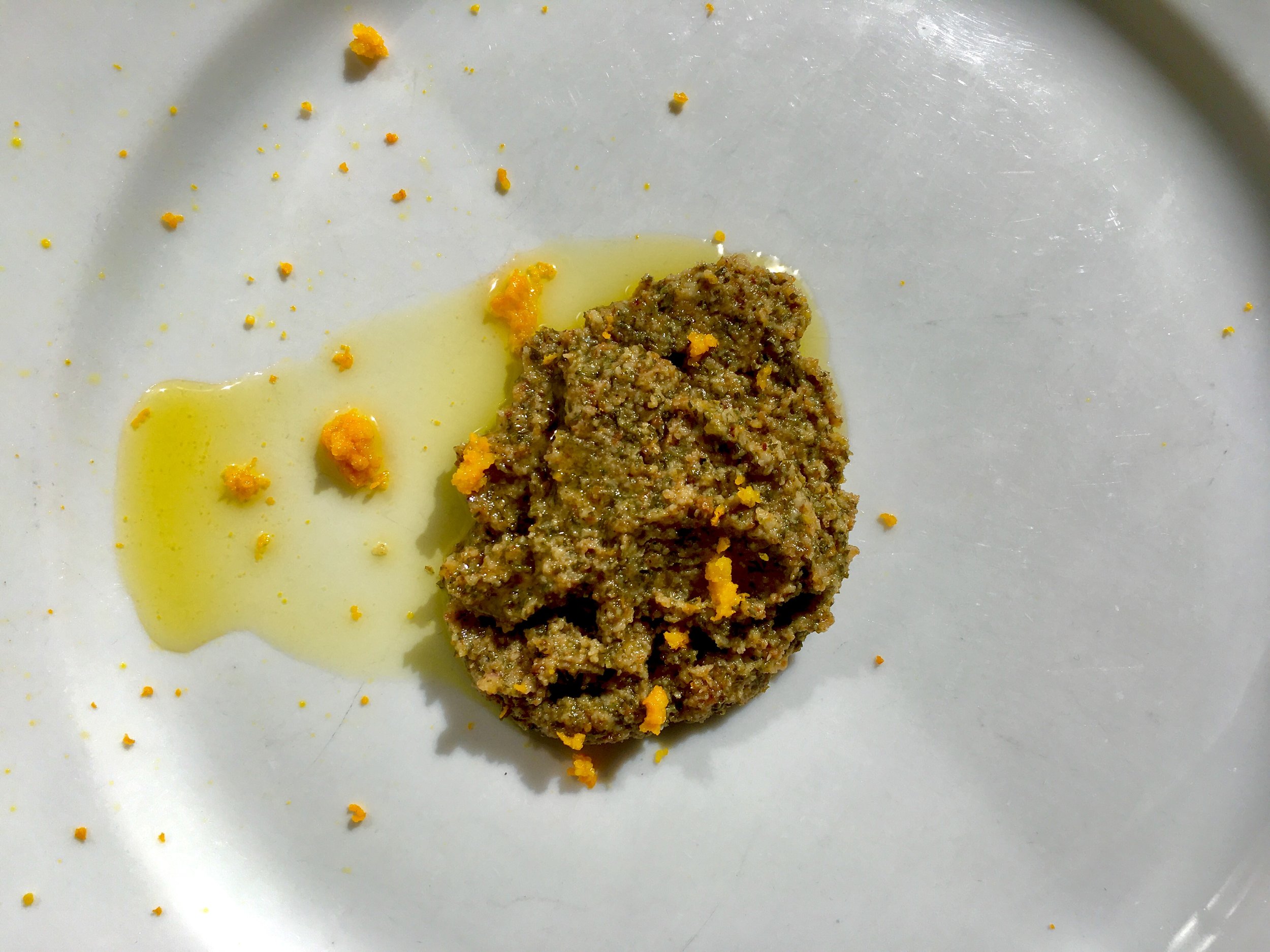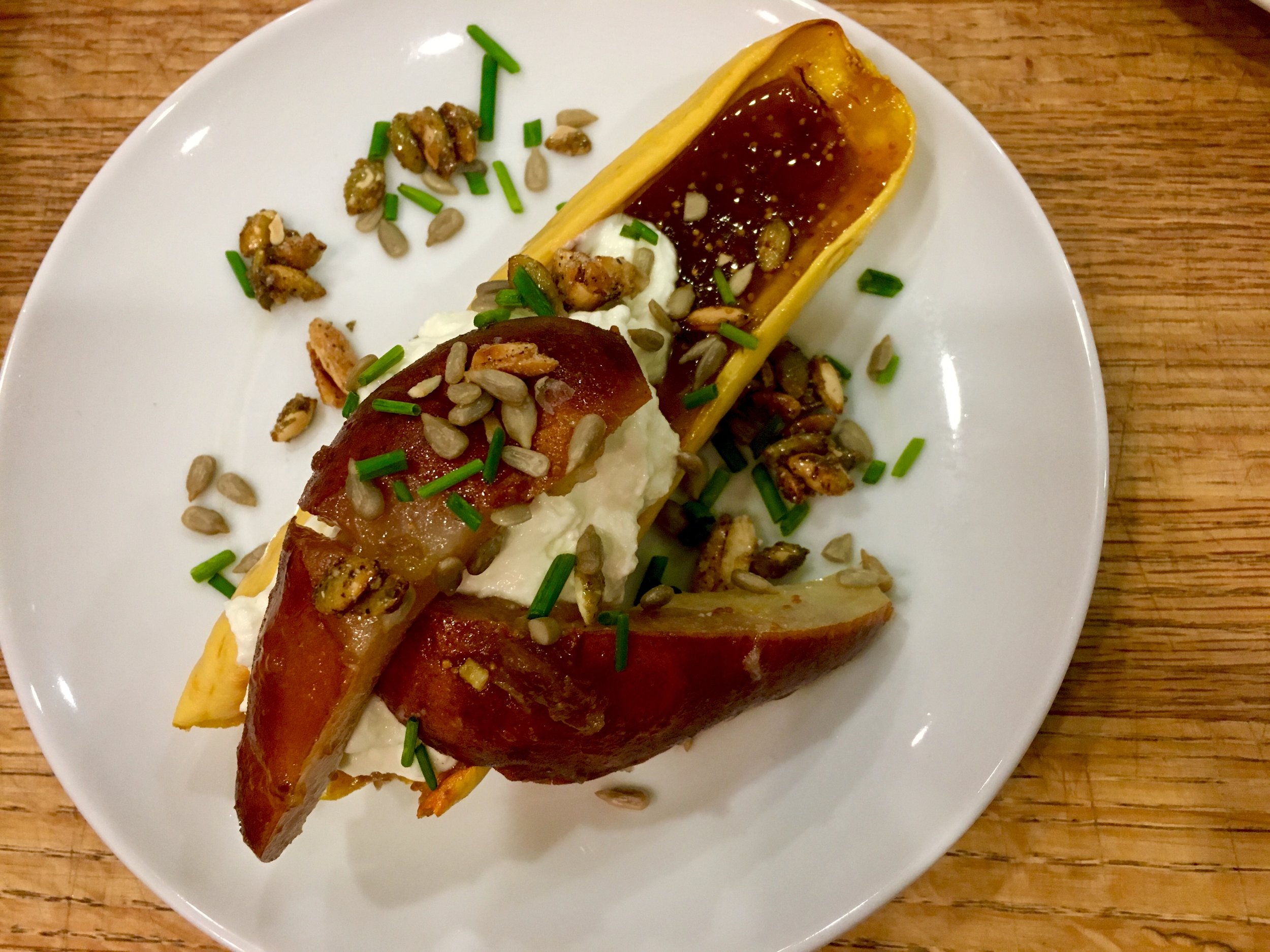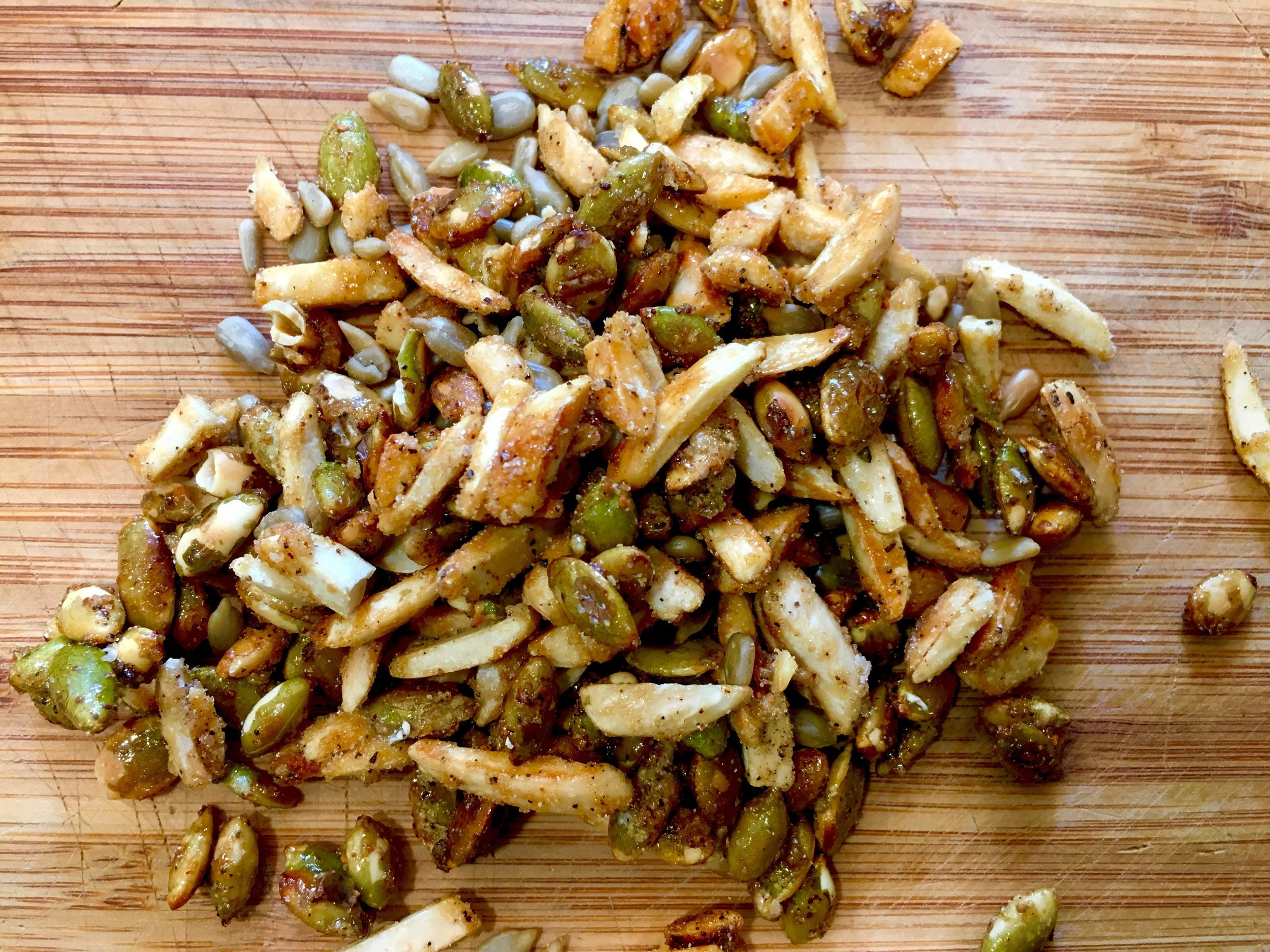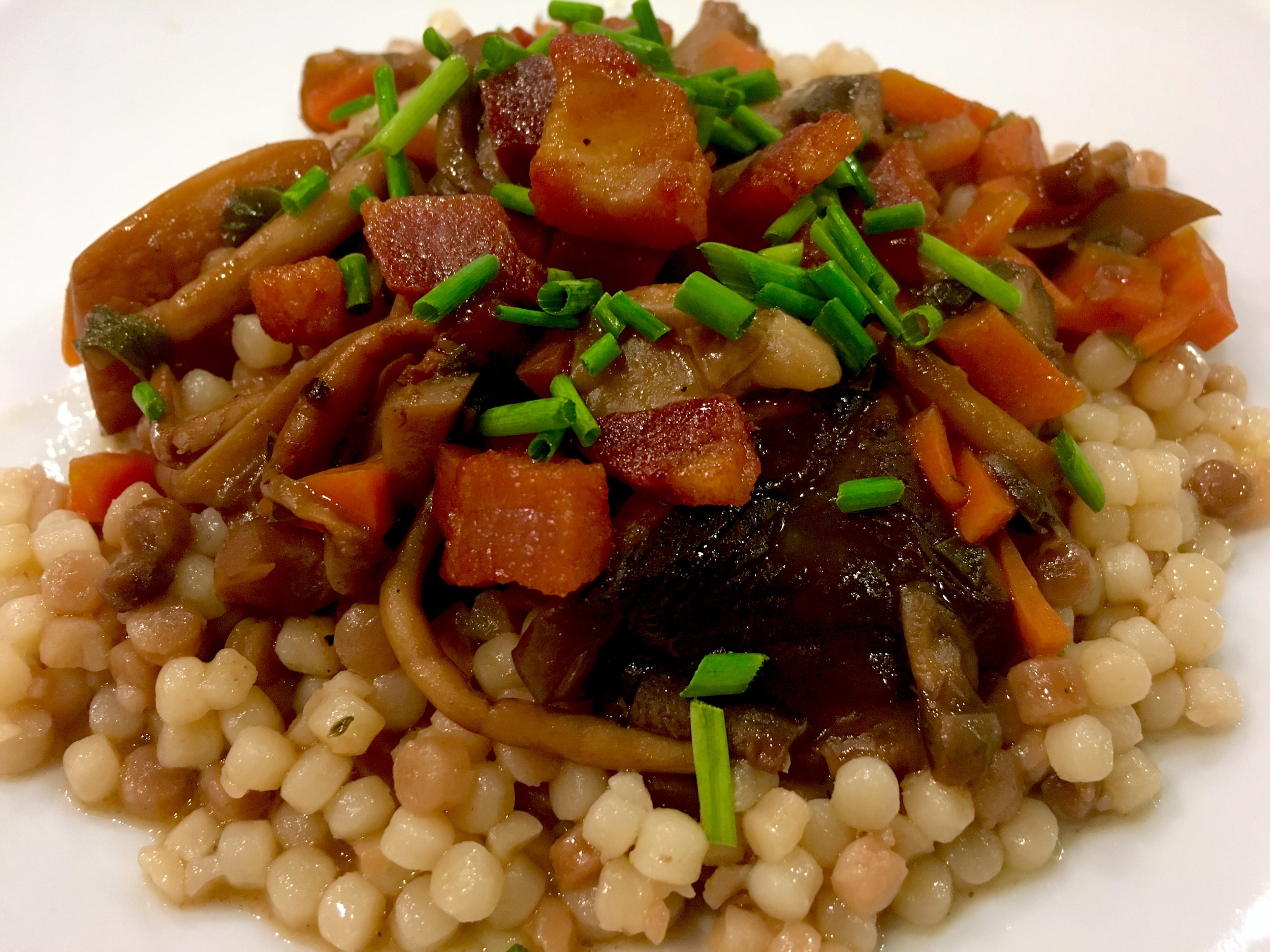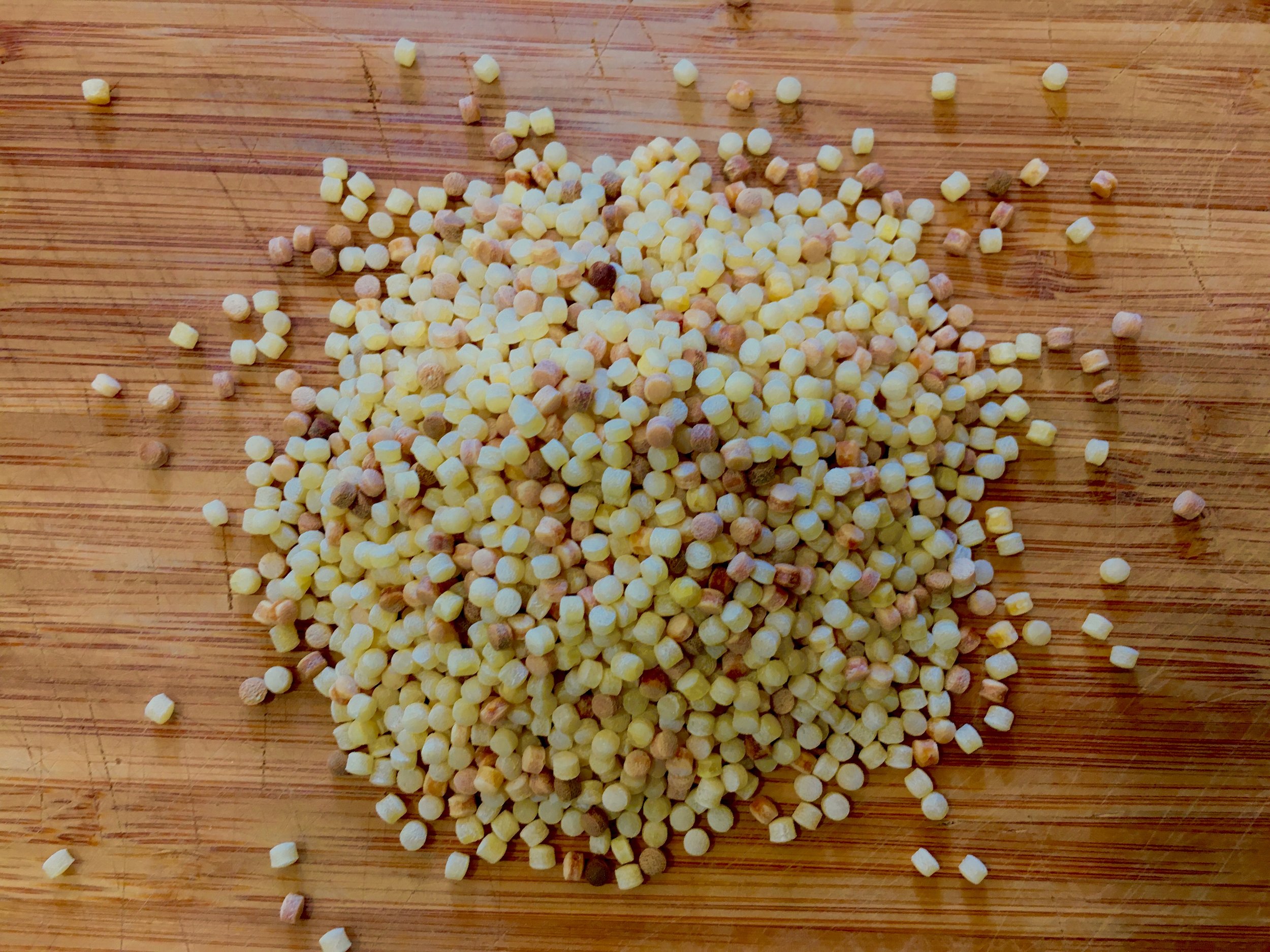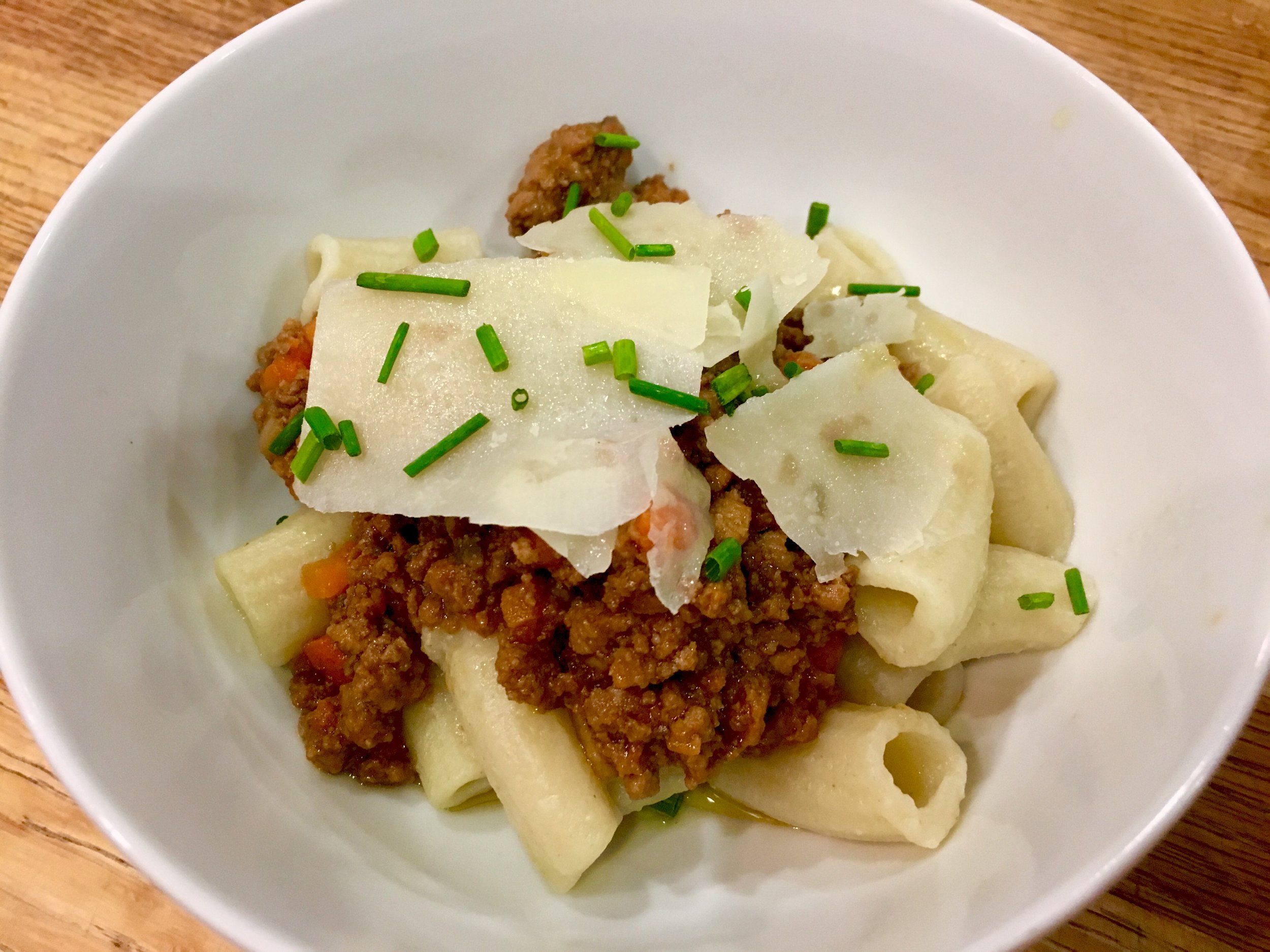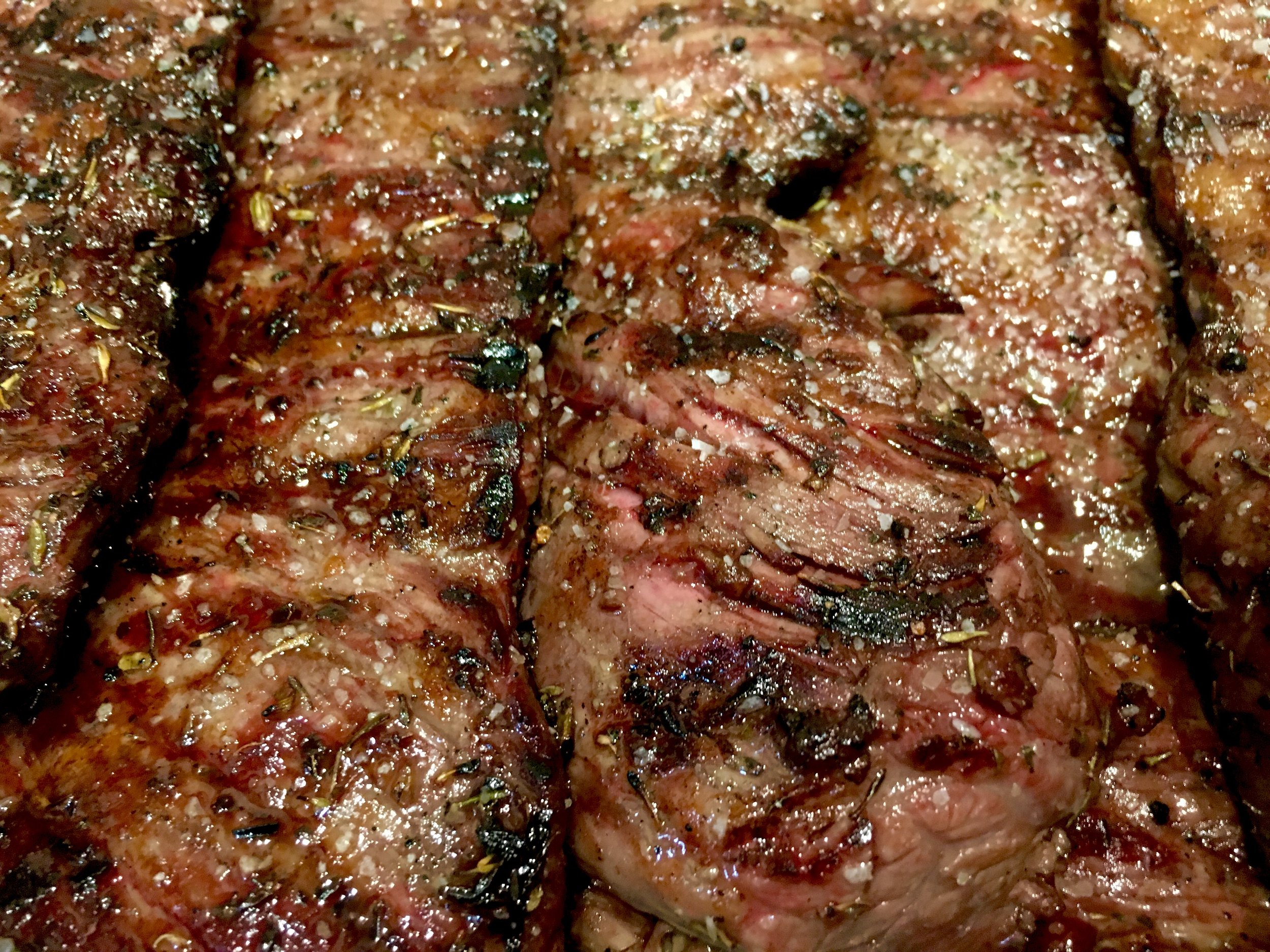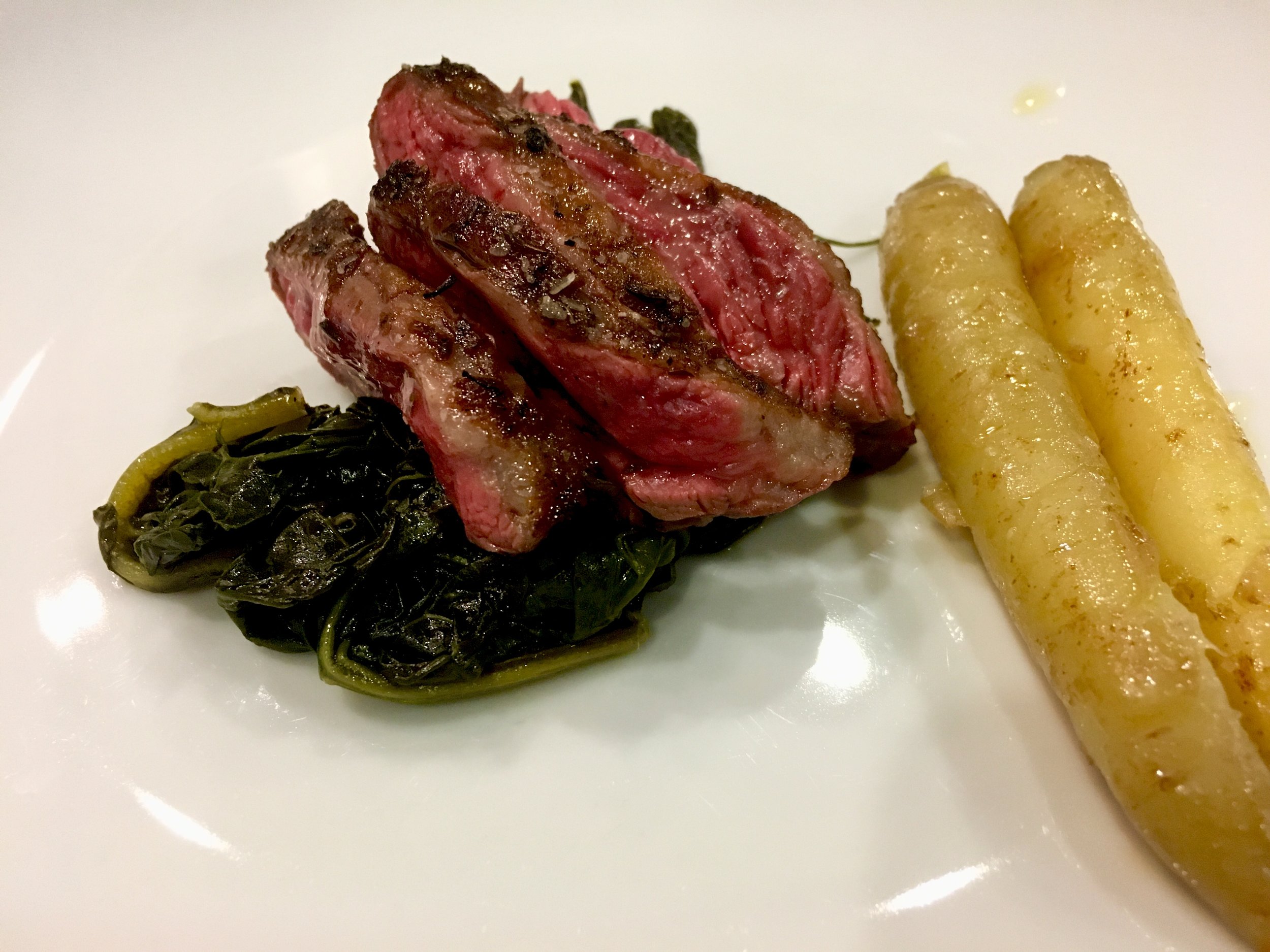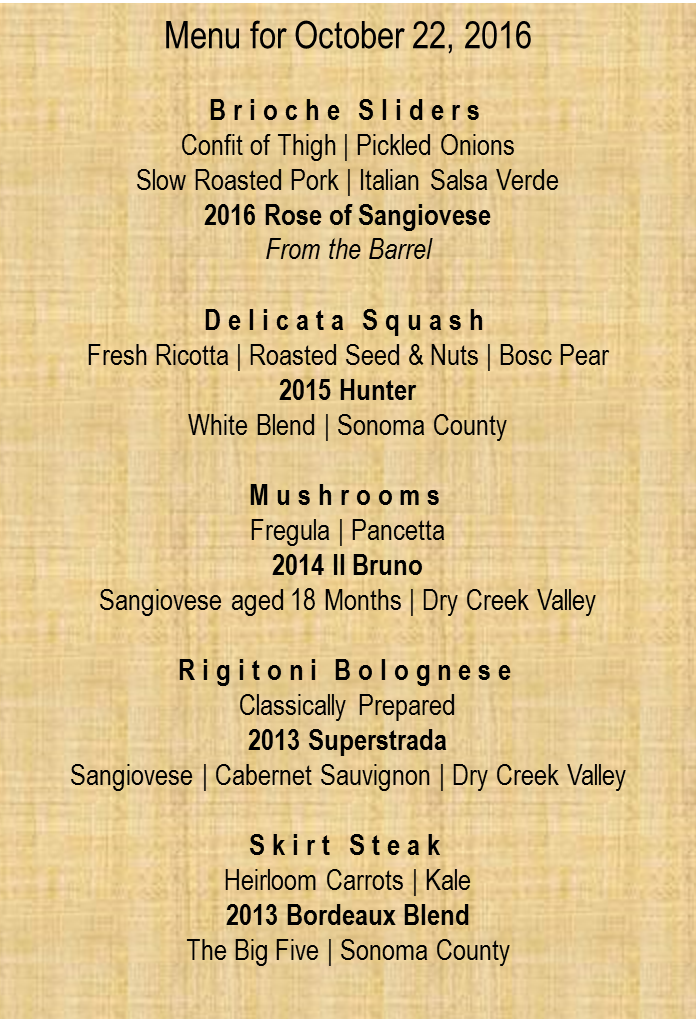For those interested in finding my wines across the state of California, here is an interactive map from Google. The map is updated regularly as new restaurants and retail will feature Mastro Scheidt as their lists change.
Maestro Meme Monday
Alliteration and Memes are fun to use, so the Maestro Meme Monday was born.
You may have noticed some self-depricating humor recently on the Mastro Scheidt Instagram account, depicting me and my father in some photos over the last few seasons. What often makes a meme funny is that the meme is true. I can tell you for certain, the phrases and expressions in these memes are true and have been thought about or said aloud.
We hope you enjoy them throughout 2018, every Monday, for Maestro Meme Monday.
The Shameless Winemaker
Winemakers the world over can write manifestos and mission statements until their heads explode, but in the words of Mike Tyson, "everyone comes into the ring with a plan, until they get hit."
So imagine getting hit with requests from consumers to add lemon lime soda to your wines? Sound crazy? It's not. In fact, it happens to me at nearly every large event.
How about a wine glass filled full of ice for a $50 Cabernet? It's happened. Not everyone lives in a cool climate. Take my hometown, Fresno, California. It gets hot, real hot, in summertime, 110 degrees hot and it 'cools' down at night to 92 degrees around 11pm. Who wants to drink Cabernet for dinner? Virtually no one.
People pay good money for my wines at tailgates, festivals, events and parties throughout the year. As much as I like my wines without residual sugar or sweetness, not everyone does. What's the easiest way to add sugar to a finished wine? Add your favorite lemon lime soda. What's the easiest way to cool down some wine? Add ice.
I now come equipped with both Lemon Lime soda and a couple bags of ice to almost every event I participate in and I'm making more people happy.
Listen up winemakers, we all have a plan, until we get hit.
New Release Rose of Sangiovese and The Hunter White Wine
2017 Rosé of Sangiovese was created using the saignée method, a technique whereby I drain off juice from the main body of the Sangiovese crop, which has had skin contact for a 24 hour period. The resulting juice for this Rose is light pink in color.
The juice was placed in last year’s Sangiovese barrels for primary fermentation for 14-60 days and stirred twice on the gross lees. The wine was then racked off the gross lees and returned to barrel, where it was stirred again twice, or bâtonnage, adding texture to the wine. The wine was allowed to go through partial secondary (malolactic) fermentation. The result is pale pink in color, with a bit more depth on the palate due to barrel fermentation and the partial malolactic. The wine was fermented dry.
The Hunter 2017 is a classic Bordeaux inspired white blend. The backbone is all Semillon adding structure and notes of grapefruit and melon to the blend, without any unripe flavors. I'm personally not a fan of grassy Sauvignon Blanc, so the remaining 20% is ultra-ripe Sav Blanc to lend tropical flavors to the finished blend. Added complexity comes from barrel fermentation in neutral French oak.
For those that want all the technical specs The Hunter and Rose of Sangiovese
New Releases and Sold Out Wines
A few updates after a busy fourth quarter:
Sold OUT
2015 Sangiovese, Sonoma County
2015 Sangiovese Vecchio
2015 Cabernet Sauvignon DCV
Allocated (Contact me Directly)
2014 Signature, Cabernet Sauvignon, Dry Creek Valley
2014 1TL, Cabernet Sauvignon, Mill Creek Road
New Release
2014 Cabernet Franc, Sonoma County
2016 Sangiovese, Sonoma County
2016 Cabernet Sauvignon DCV
2016 Zinfandel, Sonoma County
2015 Pinot Noir, Sonoma County
Expected Release
2017 Rose of Sangiovese, February 14, 2018
2017 The Hunter, White Wine, February 14, 2018
2016 Sangiovese Vecchio, June 2018
Happy New Year! Here's to a great 2018!
The Road to Expensive Non-Vintage Red Wine: Thanks Penfolds!
I’d like to take this opportunity on behalf of all winemakers to thank Penfolds for making a non-vintage red wine and charging $3000 a bottle for it.
Winemakers around the world have been greatly anticipating charging $3000 a bottle for non-vintage red wine.
An American example of non-vintage wine, the Mastro Scheidt Jug! It only costs $39 and it's nearly 1.89L. You should buy some.
$39 or $3000?
Oh wait…I have been doing it for years. It's called The Jug (yep, that's the label above. It's good wine. Really good). I've been combining vintages to make a consistent blend for over 5 years now, but not charging $3000 for the bottle. Stupid me. I charge $39.
When winemakers combine vintages like they have at Penfolds, it becomes a non-vintage wine, generally regarded as inferior by critics for still red wines. Unlike port and champagne, which are regularly blended across multiple vintages and considered a mark of quality, blending red wines across vintages has long been considered the practice of corporate wineries using 1 gallon and up packaging.
Super Blend or Just Red Wine?
Penfolds of Australia produces the world famous Grange by blending Shiraz (Syrah) with some Cabernet Sauvignon (in most years). A long heralded wine and deservingly so. With the G3, they’ve taken a long held philosophy of Aristotle, that the “sum is greater than the parts”, combining three vintages of Grange together in a single bottling, or as Penfolds called it, “a super-blend” and thus, charging more than any single bottling would cost.
From my own experience blending wines from multiple vintages, the “super-blend” of wines can be beneficial in a few ways. First, a young wine lacking depth and structure is given a boost from a wine that is older, as the older wine has had time to mature. Secondly, the older wine is ‘refreshed’ by the younger wine with more vibrant fruit and freshness. Thirdly, if the wines have been on new oak, the interactions between the wine, oak and time, depending upon the oak origin, can have a whole combination of various results on the finished wine that add a layer of complexity not otherwise derived from the wine itself.
A true test of greatness would be to try each individual vintage of Grange that comprise the G3 super-blend; 2008, 2012 and 2014 side-by-side with the G3. That tasting would cost just under $6000, if you can get your allocation of G3. I’d love to taste it.
I raise my glass to Penfolds and offer a toast to them for getting $3000 a bottle for a non-vintage Shiraz. May we all be so lucky.
Now go buy my Jug for $39!!!
Dirty Jobs, Wine Making and Sausage
I talk about the dirty job of making wine every season. Other than people in the wine industry, no one else sees all the stuff that gets cleaned every day with brushes, pressure washers, hot water, acidic and caustic liquids. All the public sees is a bottle with a cork in it and a really good looking winemaker (like me) pouring it.
Good looking winemaker...David Scheidt
Behind the scenes of the dirty job of wine making 2017.
After 5 tons of grapes are destemmed, this is what the machine looks like
The shaker table is a tool for sorting grapes. Look at all the debris around the table.
Every nook and cranny must be cleaned after grapes are processed
More debris and MOG, Material Other than Grapes
These jeans will never be blue again.
Compost and more compost of stems and bad berries
Green grape leaves are unwanted and are picked out in the vineyard and the crush pad
Someone has to get in these tanks to shovel out all the must for press loads
Sluggish fermentation? No problems. Adding some still active lees will help finish things off
The natural wine of Lencioni Vineyard in Healdsburg
Lencioni Vineyard: Ever since my first vintage in 2007, I have used minimally farmed Lencioni Vineyard Cabernet Sauvignon in Dry Creek Valley. I’m going to use the term minimalist or natural to describe what Lencioni Vineyard is and it's typical of small farms in Sonoma County.
From a distance, Lencioni Vineyard looks like any other vineyard in Sonoma County. Rolling hillside. Beautiful view. The vineyard is laid out in clean rows, the Cabernet has a wire set up, the Zinfandel is head trained and there are remnants of the old drip irrigation system in place from 35 years ago. No water has flowed through those drip lines in 27 years.
Minimalist, Feral, Natural or Wild?
It’s the up-close and personal view, walking each row, inspecting each vine that changes your perspective from bucolic vineyard to individually wild vines.
Lencioni vineyard is ‘feral’ for lack of a better term, or perhaps ‘natural’ since that seems to be a term being used more widely in the wine business these days. The rows are difficult to walk, as thorny blackberry bushes are everywhere. Some vines are long gone, dead, forgotten. The occasional poison oak plant shows up from time to time, right next to a grape vine. The vineyard is in some places terraced and undulating and rarely ever flat due to the once, sometimes twice a year tractor work.
Two things happen in the vineyard each year, the rows get disced and the vine gets pruned. That’s it. Nothing else. No sulfur has been applied on these vines in over 10 years. No soil amendments, no cover crop (unless you count blackberry bushes) and most of all, no human applied water. Only Mother Nature provides water.
With this minimalist approach, in 10 years I’ve never seen mildew or rot. The birds don’t eat the grapes. I don’t see bugs or pests. No deer or wild pigs. And without a single drop of pesticide, fungicide or foliar spray, the vineyard survives.
The Wabi - Sabi of the Vineyard
I recently highlighted the struggles micro winemakers, like me, have with small farms, irregularity in harvests being one of them. In 2011, a wet and tempermental year in Dry Creek Valley, I had zero crop from Lencioni. In 2012, regarded as a great, near perfect vintage, I received over 6 tons of fruit from the Cabernet Sauvignon vineyard, the most I’ve ever received. Since the banner year crop of 2012, I’ve seen decreasing yields each year. In 2017 I’ll have harvested less than 1 ton of fruit from the Cabernet vineyard.
Working with the minimalist Lencioni Vineyard is indicative of what micro winemakers, like me, experience; high quality, pure expression of fruit with an unreliable yield and fickle vineyard management, near textbook example of the Japanese philosophy of wabi-sabi. It's strange to hear the words unreliable and fickle in the wine business; we're conditioned to hear perfect and dependable. Working with small farms is anything but perfect, but in that imperfection is beauty, the beauty of the fruit in the final wine.
What's Love Got to Do with It?
It took one full week of labor to pick 2 tons of fruit, Zinfandel and Cabernet Sauvignon in 2017. We started picking September 1 for Zinfandel and September 5 for Cabernet. The vineyards are spread over 4.5 acres. It’s a pain to pick. It’s pure labor. Love has nothing to do with it. Paid crews don’t want to work it. The fruit is scarce, so hourly labor, not by-the-ton, is how crews got paid in the past. This year, I paid myself to pick it. Let’s hope that I can persuade someone to disc the vineyard a couple times in 2018 and get someone, other than my family, to pick Lencioni Cabernet and Zinfandel in 2018. Picking isn't easy, but like an old climbing buddy told me, "picking was easier than climbing the Eiger:" True.
The upside, after all this labor to pick such a vineyard? The fruit is delicious. The wine I make from Lencioni is intense, beautiful, colorful and full of character. I don’t need to do much of anything to it, as heartiness in the vineyard translates into heartiness on the crushpad and full-flavored wine in the bottle. The 2014 Signature is currently released and is 100% Lencioni Vineyard. The wine was completely on used barrels in 2015 and 2016 and will likely be released under my Signature label sometime in late 2018 and 2019 respectively.
Micro Winemakers Under Threat
Jon Bonne’s book The New California Wine gave voice to many winemakers. He wrote more recently in PunchDrink, questioning what the future looks like for winemakers such as me.
You can’t make a living on 500 cases.
Winemakers who are adaptable, not doctrinaire have the greatest chance for success. The trouble is, if your hit eclectic varietal is limited in acreage or is planted in a distant part of the state, how does a New Californian style winemaker follow up their big local winemaking hit if their resources are limited to 2 tons or roughly 100 cases? Or even 500 cases? You can’t make a living on 500 cases.
The next generation of start-up winemakers will have to have a portfolio of adaptable skills, both boutique and industrial. Winemakers have to be well versed in wine style, interventionist and non-interventionist, what sells to distributors, direct to bottle shops, sommelier driven restaurants and in the tasting room. The approach is practical, not dogmatic and not out of step with some of the winemakers in New California. Defining the terms natural and industrial seems to be the hottest topic in wine making these days, when only 5 years ago wine making was all about balance, as in pursuit of. How will natural be re-defined in 5 more years? How will the broad California appellation evolve?
Cabernet in Sonoma Vs. Barbera in Mendo
We as winemakers have to be both aggressive and flexible in simply finding fruit. I can find Cabernet in Sonoma County pretty easily if I can afford it. But I can’t find Sangiovese and Barbera, at least not at the price I’d like. I could go to the Foothills, but good luck if they deliver in 2 ton lots to Cloverdale. I could go to Lake or Mendocino County for a couple tons, but I’ll have to pick it up and prices aren’t $500/ton any more for small lots. Try closer to $1500/ton and many growers won’t sell 2 tons lots.
A wine sold at $25/bottle full retail is not a sustainable model for a stand-alone winery if the fruit alone sells for $2500/ton, not including crush fees. $2500 per ton and higher is not uncommon for many varietals in Sonoma County, my backyard. Winemaking can work as a side-hobby, but not as a self-sustaining business with a 500 case production, so don’t quit your day job.
Sure, there are pockets of small vineyards in Dry Creek and Alexander Valley looking to sell to “home winemakers”, but fruit quality and consistency can be painfully erratic. I know; I purchase from small farms every season. As winemaker, I have to be part time vineyard manager and viticulturist.
Mechanization
Lodi is already dealing with lower yields on old-vine Zinfandel and increases in labor and facility costs. Much of that planted acreage will sell to the highest bidder or simply be torn out and replaced with younger, more vigorous varietals and planted for mechanized harvesting. Recent articles show the increasing economic concerns of growers dealing with decreasing yields and increasing labor or skills costs. Mechanization is here and is growing.
There was (past tense) a wave of New Californian winemaker using forgotten varietals at cheap prices. Now, everyone is using them (again). Unfortunately, those varietals are more expensive as demand has increased, or simply, those vines have been ripped out in favor of more vigorous and popular varietals that demand higher prices.
Small vineyards with eclectic varietals lack scale. Custom crush fees have increased from the time The New California Wine book was written. Today, with more elaborate “cooperative” spaces that require higher fees for smaller lots and minimum sizes of 10 or 20 tons crushed, not a grand total of 5 tons for a micro winery. Increases in varietal price and crush fees have squeezed margins on the entire boutique winemaking industry. Prices for Cabernet and Sangiovese are going up, not down, in premium wine growing regions.
As a winemaker, I make natural wine from a less popular varietal, Sangiovese. I also make a full-flavored Cabernet Sauvignon with plenty of new oak. I exist in four worlds, the natural and the industrial, the non-interventionist and interventionist. I even have a winemaking manifesto ascribing to a particular belief, Make Great Wine from Great Grapes! I’m a winemaker, playing the hand dealt to me by each season’s harvest and always thinking about the future.
I AM the New California winemaker and proud of it.
Fires in Wine Country
Last week has been devastating for many in Sonoma, Napa, Lake and Mendocino counties. The fires are ongoing and are in various stages of containment. This is a fluid situation and work is being done around the clock by brave fire crews and first responders to control the fires. This was a picture of the Pocket Fire with air support dropping fire retardant, taken October 12, not far from Mastro Scheidt Family Cellars crushpad location just north of Geyserville, in Alexander Valley.
Photo courtesy of local resident and friend, Jessica Brazil.
Here's a link for daily updates on the wine country fires
A growing number of friends and colleagues have had their property destroyed by fire. I mourn their loss. Many of you have asked how you can help victims of the fire. Please support your charity of choice. There will be many months of rebuilding and your support is critical to those efforts today.
Mastro Scheidt Family Cellars has been extremely lucky in that the winery facility located just north of Geyserville and to the west, is undamaged and currently out of danger. No vineyards that I purchase from have been affected by fire. Our cased goods facility located near the Santa Rosa Airport, is currently unaffected. Additionally, the entirety of the 2017 harvest was either in barrel or in tank as the fires started. There is no risk of “smoke taint” from Mastro Scheidt wines from the 2017 harvest. I am thankful for each and every one of you who have emailed, texted, called, and messaged me personally to ask about my safety.
The wine country is a strong community and will be rebuilt. #sonomacountystrong
David Scheidt | Owner and Winemaker
New Vintage, New Closure
Like many wine makers and wine drinkers, the belief that “cork is best” for all wines is a conceit. As I’ve grown in both experience and case production over the last ten years, natural cork is not the only wine closure in the marketplace.
I made the jump to screw caps several years ago upon the introduction of my Jug program. No one seemed to mind that I used a screw cap for a growler of wine. In fact, the screw cap fit the image of the wine and the growler package.
The next use of screw caps were for more traditionally bottled wines, the classic Bordeaux styled 750ml bottle that has had wide success in restaurants, delis, and grocery stores. The wines are typically served by-the-glass and easy to open and close in restaurant settings or purchased for nightly home consumption with a wide array of foods. I’ve increased production in the screw cap category, so I don’t see that screw caps have been perceived negatively by consumers.
Natural cork and the Diam technical cork
The most recent evolution in packaging is the technical cork. Nearly 100% natural cork, the closure is guaranteed to be free of “cork taint”; whereas traditional cork cannot make the same claim. Secondly, technical corks have been engineered to allow oxygen through the closure over time, similar to traditional cork, which allows for micro-oxidation of the wine, a beneficial characteristic for age worthy wines like Cabernet Sauvignon. Thirdly, you pull the technical cork with the same traditional corkscrew; no special equipment needed.
What crystalized my decision to move to technical corks was an experience I had with a restaurant customer of mine. I was pouring a flight of wines for spring and summer at a restaurant in Fresno. When the owner and I got to the second wine, we both knew instantly the wine was corked. Not good. I’m embarrassed and the wine, even if he wanted to pour it in the restaurant, couldn’t be evaluated properly and therefore wasn’t chosen as a finalist.
As I’m looking to innovate where I can, I made a partial transition to technical corks with some of my 2015 wines. The main reason for me transitioning to technical corks was zero cork taint. Imagine buying one of my wines for $50 only to open the bottle and find the smell of wet cardboard. Disappointing. With technical cork, having a wine damaged by cork taint is not a possibility. With my 2016 vintage, I should be 100% screw cap and technical taint free cork.
It was a big decision to move away from traditional cork. I like the history, tradition and nostalgia of traditional cork. But from a customer viewpoint, the remote possibility of having a flawed bottle of wine because of cork taint in the 21st century isn’t nostalgic, it’s unacceptable.
Look for the new corks in my 2015 RWSC label, Superstrada 2015, and Cabernet Franc 2015.
Harvest 2017, Mid Season Report
Every indication, leading up to harvest in 2017, showed a gradual ripening schedule, perhaps 7-10 days behind 2016. Fruit quality looked good, with some vineyard concerns of powdery mildew. Canopy growth was vigorous, fruit set was good. Yields in some vineyards were lower than expected, but healthy vines from all the rainfall.
Personally, I’m happy to have high quality, low yield, if there has to be some trade-off.
Lencioni Vineyard Dry Farmed Cabernet Sauvignon
The gradual and stable weather gave way to hot temperatures beginning the end of August and came in a couple waves. 100+degrees in Healdsburg on 8/26, 27, 28 with an overnight low on the 28th at 56 (which helps); as Dry Creek Valley behaves differently than Alexander Valley, the fog lingered a little longer in Dry Creek Valley.
Then the real heat came and the morning fog disappeared.
August 31 through September 2 saw 110 degree temps in Dry Creek Valley with the crushpad up in Alexander Valley at 119. Overnight lows were in the high 60's. We “cooled” down to 104 on Sept 3 and 90 degrees on Sept 4 with a bit of humidity and a thick haze throughout Alexander and Dry Creek Valley.
So what did all this wild weather mean to Mastro Scheidt Cellars?
All hands on deck at Mastro Scheidt...it was 110 degrees that day
It meant all hands on deck to pull my dry farmed feral Lencioni vineyard grapes off as soon as possible! 100% hand picked and sorted means you don’t take raisins. Hand-picked also means you start early and finish early because it’s hot, real hot and you don’t want the fruit fermenting in the vineyard if you can help it.
And then, strangely enough, on 9/7 there was precipitation early morning and up through 11am. Not a light rain, but real rain. On 9/13 the rain came again and dumped pretty good in the morning and the sun never came out, maybe a high of 70 at the crushpad.
Cabernet and TL can handle the rain. They're both tough
There are still a few things to bring in before the season is complete and the steady weather pattern is back in effect. But who knows, the sooner I'm off the vine the better.
Tour d'Italia 2017
As I did in early 2016, I visited Italy at the beginning of 2017. I explored new territory in Emilia Romagna, (specifically Bologna and Ferrara), returned to familiar ground in Tuscany, (the walled city of Lucca) and re-explored one town in Puglia, ) the Florence of the South, Lecce).
On this blog, over the next couple weeks, I will try to summarize some of my experiences in Italian travel, food, and wine with both specific reviews of restaurants and wines to general travel writing about the regions in Italy I explored.
Like all travel stories, there were themes and story lines, plot twists and turns.
You'll see a lot of pasta, a theme I'm happy to explore, it's Italy after all. If there was a primary dish to sample, it had to be tagliatelle with meat sauce. While a flat ribbon noodle was sampled most, a stuffed pasta with basically the same ground meat sauce was a close second. A meat sauce with pasta is reliable, it will not let you down, and there's really no translation necessary, most people know what a ravioli is. The variables with pasta and meat sauce are salt level, sauce thickness and pasta thickness. Salt can make or break the dish and salt level seems to vary widely in this dish. Secondly, do the chefs finish the pasta in the sauce pan to absorb any pasta water? Thirdly, how thick is the pasta and to what level of al dente are they cooking it? A lot of variables for a simple dish.
The story line of Puglia had to be baccala or dried salt cod in English. It’s on every menu in some fashion. I would have gotten on my pizza if I saw it offered, which if I had looked into al Taglio in Lecce every night, I probably would have found it. Sautéed, deep fried, brandade.
The winter theme of nearly every restaurant in Italy was artichokes or carciofo in Italian. I ate a lot of artichokes this trip. Raw, boiled, sous vide, stewed, you name it, I had it. Inspiring really. So often, artichokes don’t pair well with wine and are left off of many menus. Secondly, artichokes are difficult to clean and prepare. Thirdly, artichokes tend to either get boiled and then grilled in much of the Central Valley and Central Coast of CA and then served with mayo or some kinda Ranch style dip.
The plot twist this year was being able to dine with someone regularly. Rarely do I have the opportunity to dine with others, not so on this trip. Dining with just one other person doubles the amount of wine and food I can try. So, when you see 6 or 8 pictures of food and wine in a single restaurant review, I was not dining alone. Even with my rather formidable eating skills, I can't plow down 8 dishes and two bottles of wine in one sitting.
I hope you enjoy my 2017 Tour d'Italia!
December Feasting
Fresh sea urchin in Santa Barbara, right off the boat. Whole roasted, bone in rib-eye cooked by yours truly only to be followed up by braising the bones and pulling the meat for Bolognese the following night. Lobster tails on Christmas Eve. Hand-made pasta at Cousin Vince's house paired with one of the first wines I ever made, a 2007 Dry Creek Cabernet Sauvignon. Freshly made cannoli by Mom.
I lost track of how many times I had rib-eye over the month of December. House to house, night to night, city by city it seemed rib-eye was being served. The only break in the rib-eye action was on Christmas Day when Cousin Jeff brought over some antelope (outstanding) and wild duck breasts from three different types of ducks, canvasback being one of them. Delicious (please ignore the unceremonious plating job). Wild ducks are not what most people are used to being served in restaurants, there isn't much fat on these, but the breast meat has a depth of flavor that rivals almost any beef. Cabernet is still too harsh for duck, but Pinot shines with duck, and I've always got some Pinot on hand.
From the Cellar a 2007 Dry Creek Valley Cabernet Sauvignon
It was a fantastic December of family, friends, food and drink. A great way to end 2016.
Google Trends: Prime Rib and Cabernet Sauvignon
It's December, so guess what people in the United States want?
Prime Rib and Cabernet Sauvignon! Lucky me.
Steak sealed in butter and finished in the oven
Prime rib is the go-to meal in December or as the trends show, the day after Thanksgiving people start searching Prime Rib.
It's also curious to research what people are searching related to Prime Rib, like "Christmas Dinner Ideas" as if there were anything better.
I'll be highlighting a few meals of my own along with friends and family showcasing all forms of beef and some of my Cabernet Sauvignon. Enjoy the show.
Signature 2013 Sold Out
Another vintage, another sell-out. Signature 2013 was a pure Cabernet Sauvignon from Dry Creek Valley. It was rated 90 Points on release earlier in 2016 and was sold out by October.
Thanks to everyone who picked up this wine on release and throughout the Summer of 2016. Many thanks! Until the next release.
Pasta Party (with wine)
Gnocchi and Linguine were on the menu Saturday night. Fresh, hand-made and demonstrated by the bald guy in the center picture (me).
The gnocchi were sauced two different ways:
Gnocchi #1 - browned butter with sage and black pepper
Gnocchi #2 - crispy pancetta with basil and garlic topped with fresh Parmigiano Reggiano
The Linguine was sauced with a Bolognese of lamb, beef and pork.
Wines poured that evening:
2014 Mastro Scheidt Sangiovese
2013 Mastro Scheidt Bordeaux Blend
2013 Denner Syrah
2012 Mastro Scheidt Superstrada
La Marca Prosecco
Most of the photos are courtesy of our hosts, John and Falina Marihart. Thanks for letting everyone get flour on your floor!
David rolls out the pasta dough with friend Trisha
Comfort food dinner in Healdsburg
Now that Fall has dropped in, the timing was perfect for me to stop being a winemaker for the night and put on the apron to cook a comfort food meal among friends. Warm, hearty, rich foods with copious amounts of Mastro Scheidt red wines, pair perfectly with the Fall season; and yes, I slipped in a barrel sample of Rose, because I can (Rose pairs nicely with the sliders...)
The Grapes of Harvest
Sample. Taste. Repeat.
It's all about the grapes. Cabernet Sauvignon, Petit Sirah, Syrah, Merlot, Barbera, Cabernet Franc, Zinfandel, Sangiovese, Sauvignon Blanc, Semillon, Muscat Blanc was harvested by Mastro Scheidt in 2016.
No two seasons are the same and no two varietals are the same. My wines change with the seasons. Winemaking is not an exact science, it's subject to undiversifiable risk, known as Mother Nature. I'm showing the beautiful pics, the highlight reel. There's a lot, behind the scenes, the day in, day out unromantic reality of what I do with these grapes. There are a lot of steps to get raw grapes from the field to the bottle.
Enjoy the beauty of harvest.
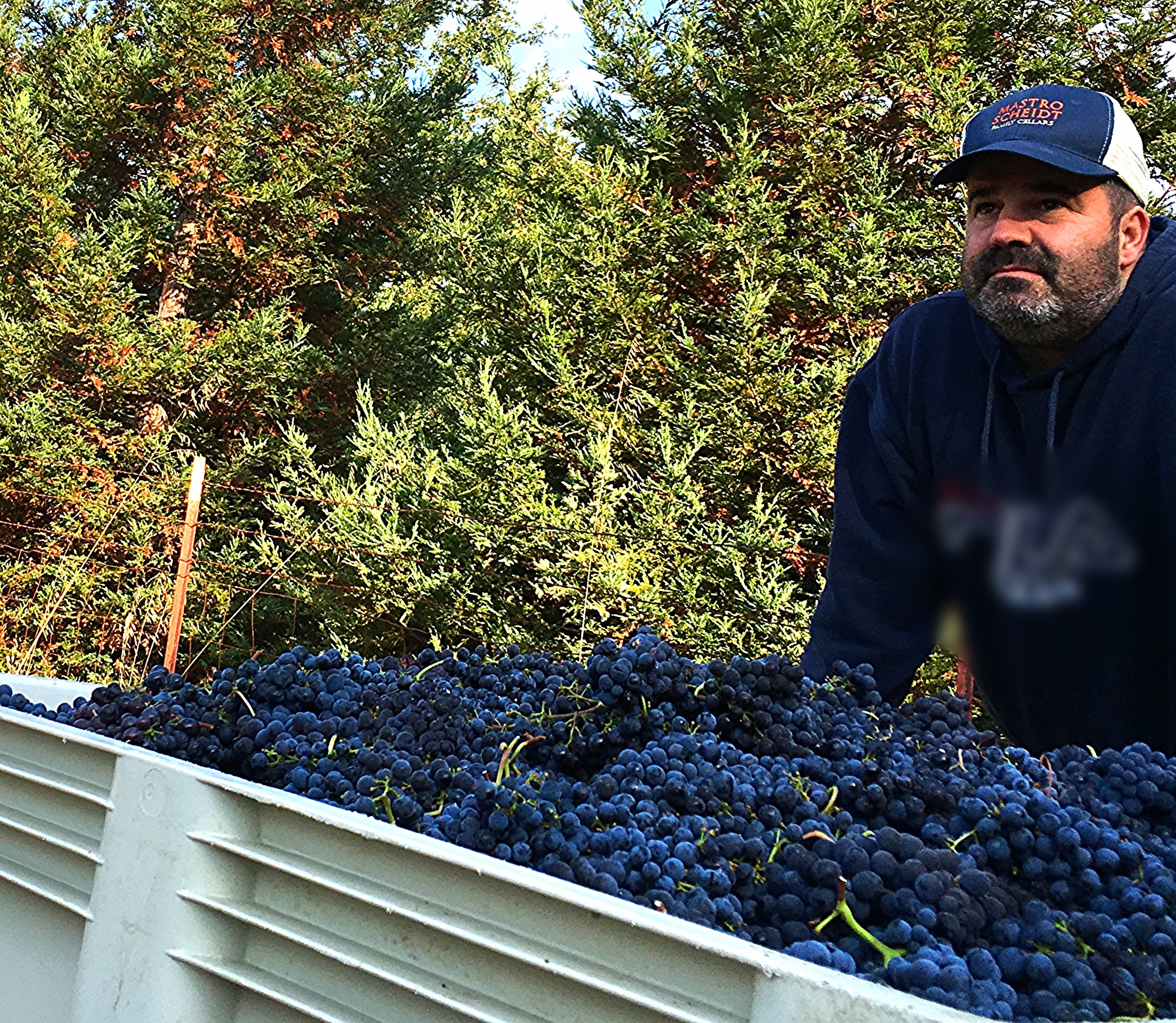
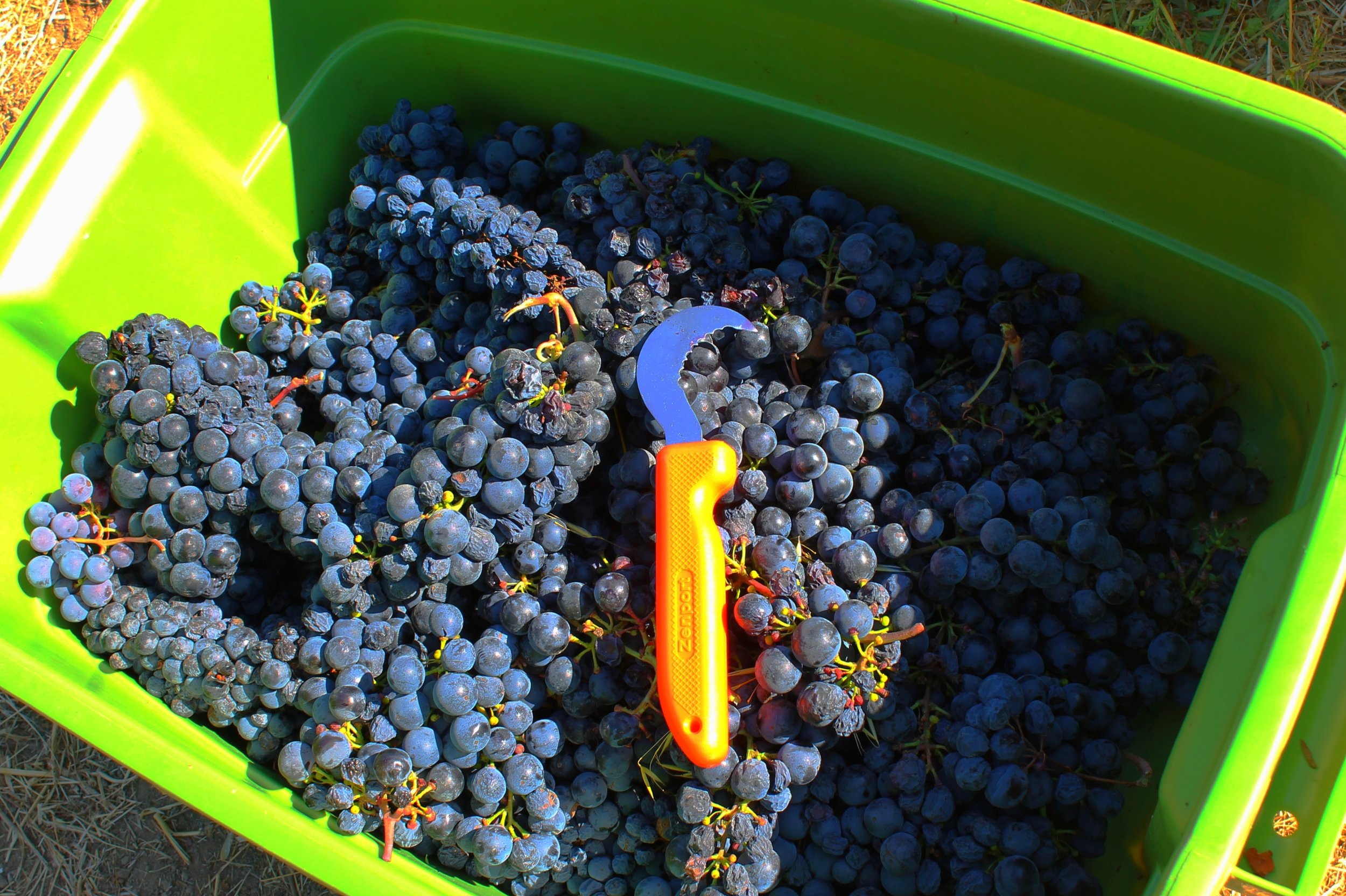
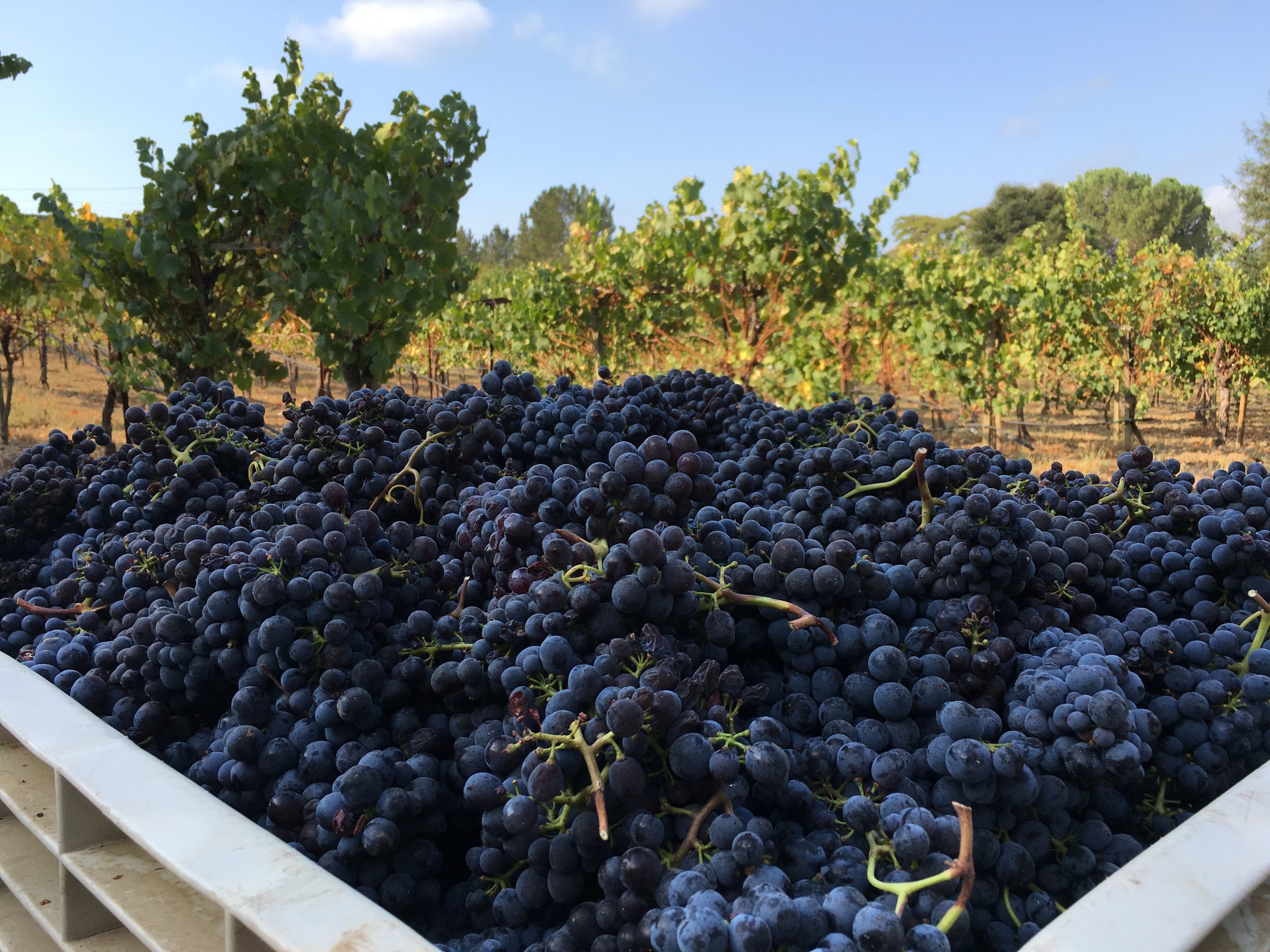

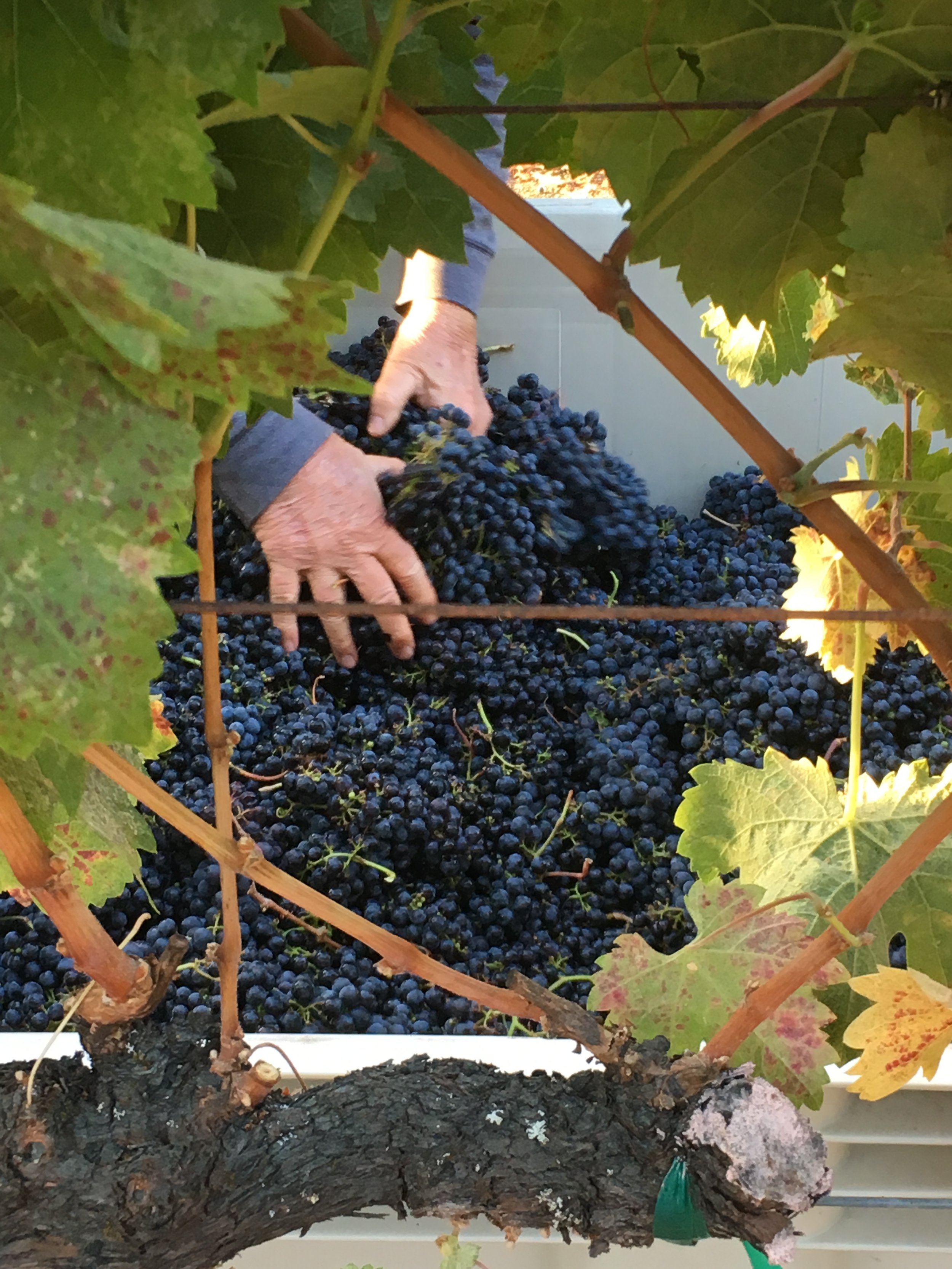


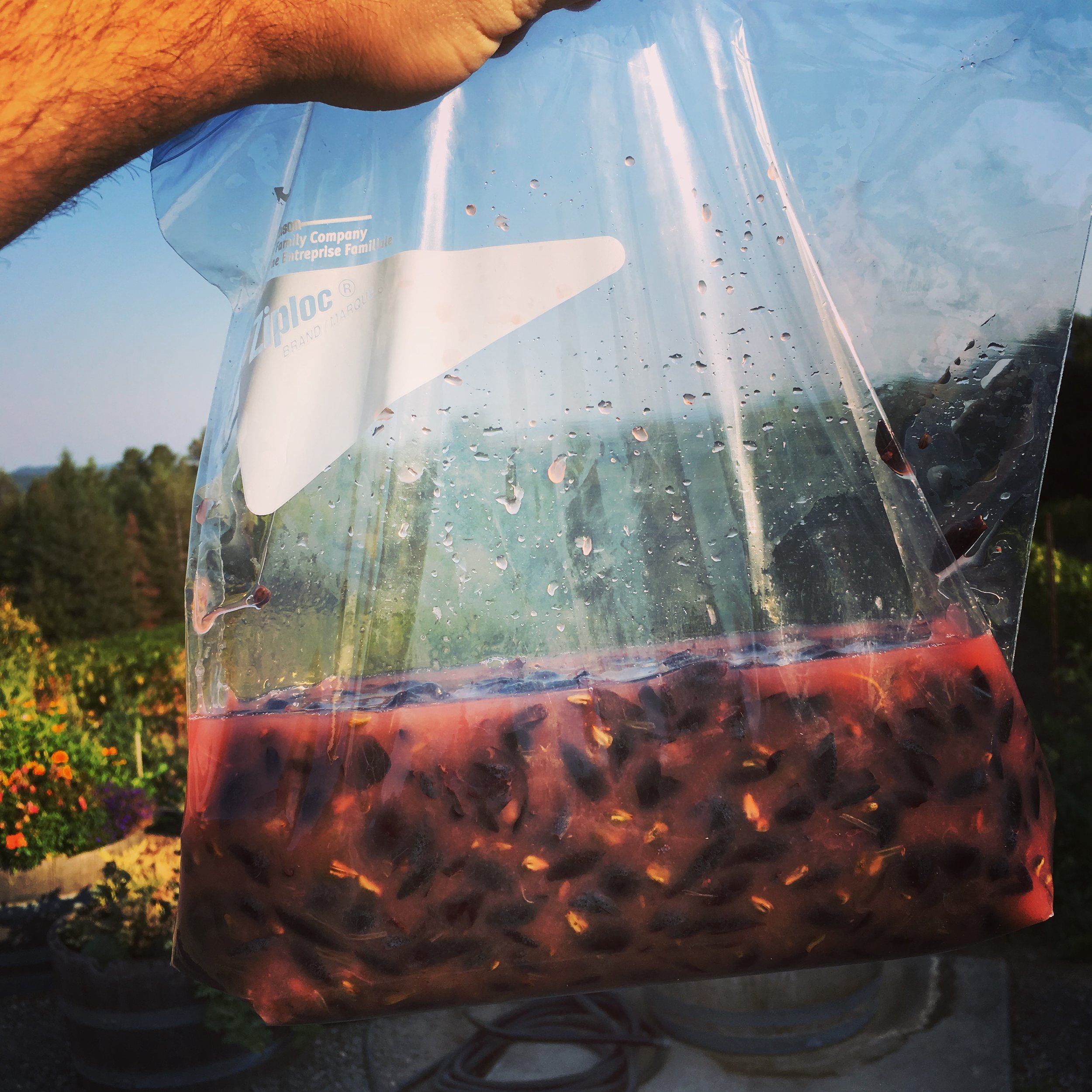
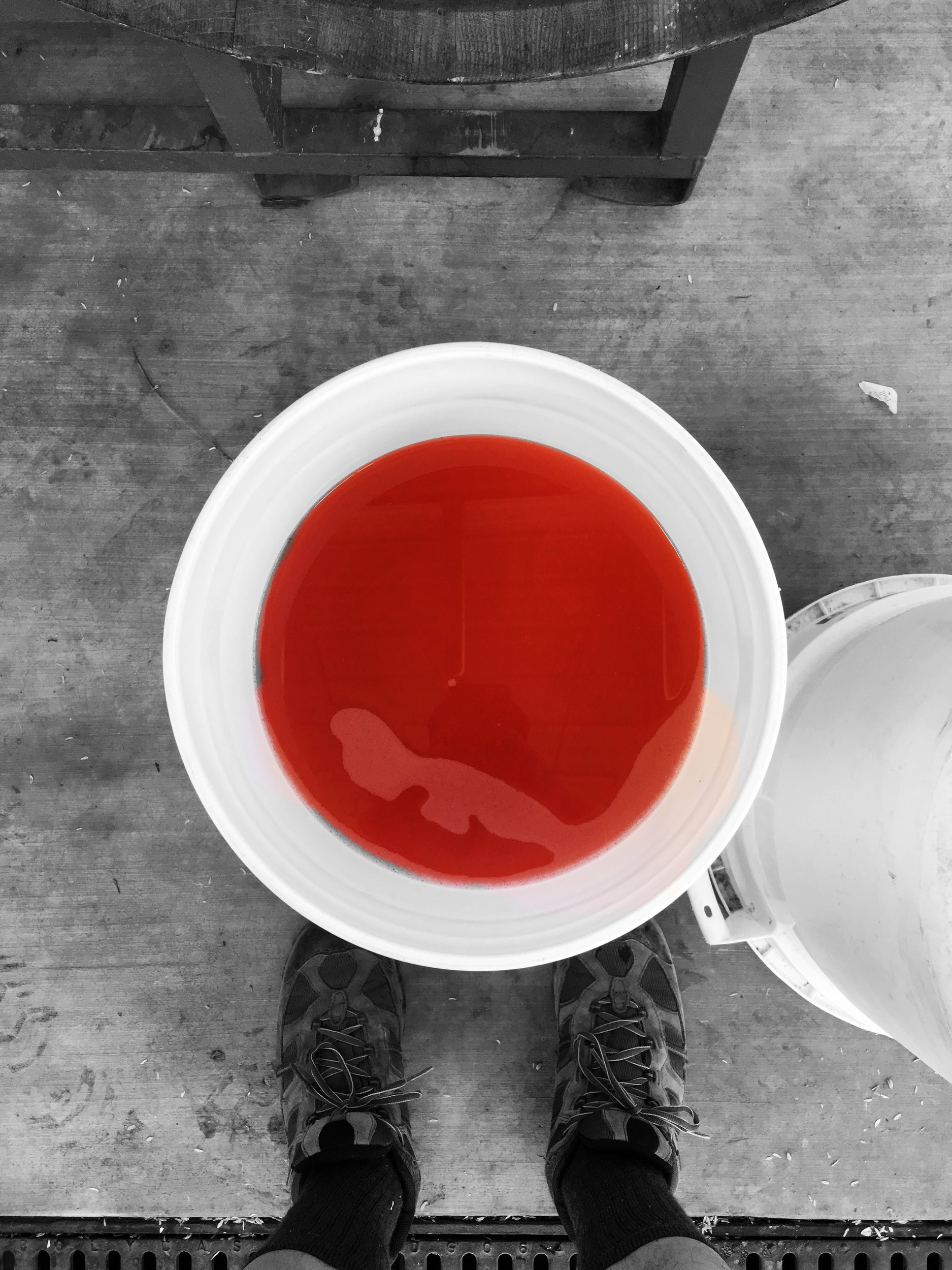
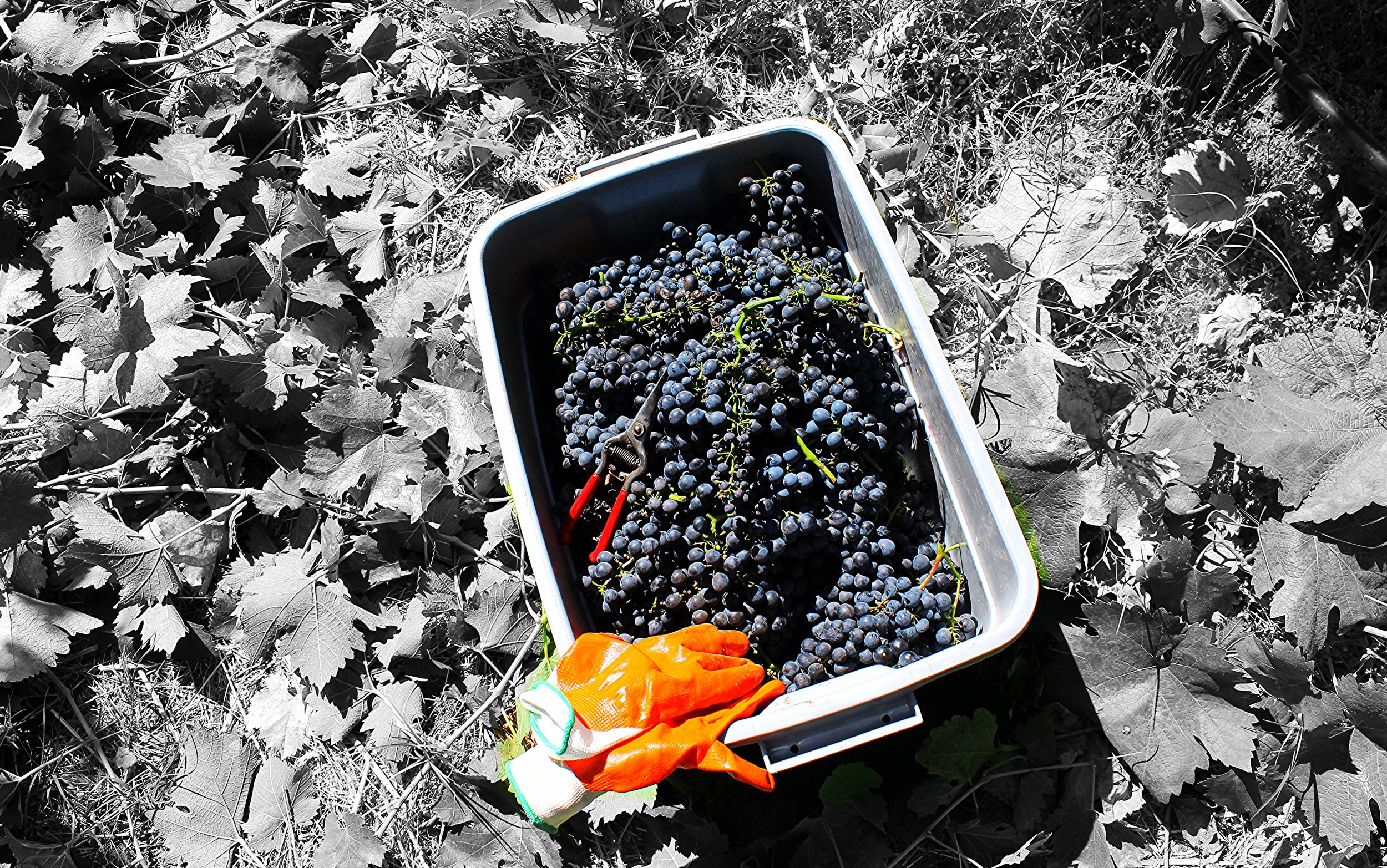
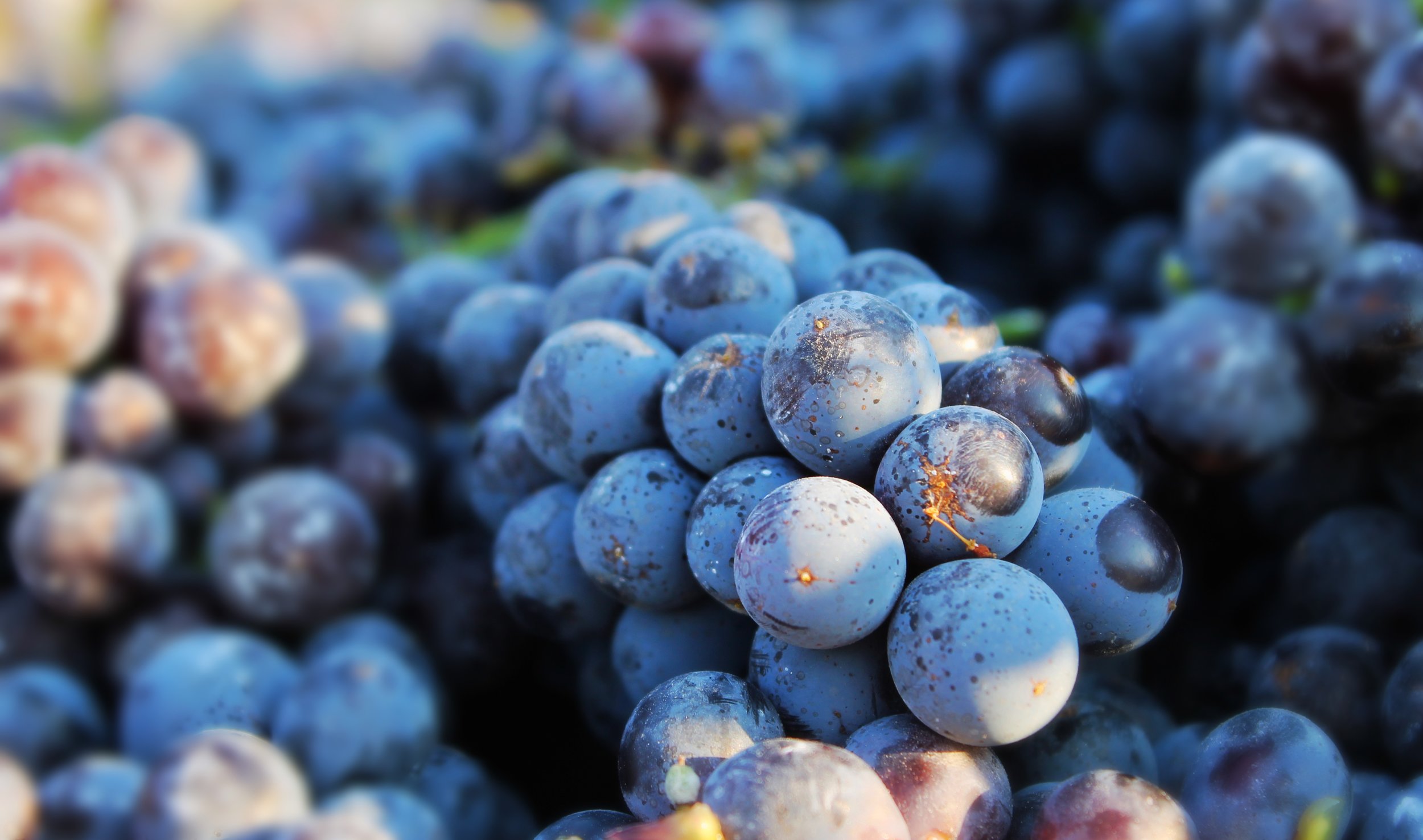
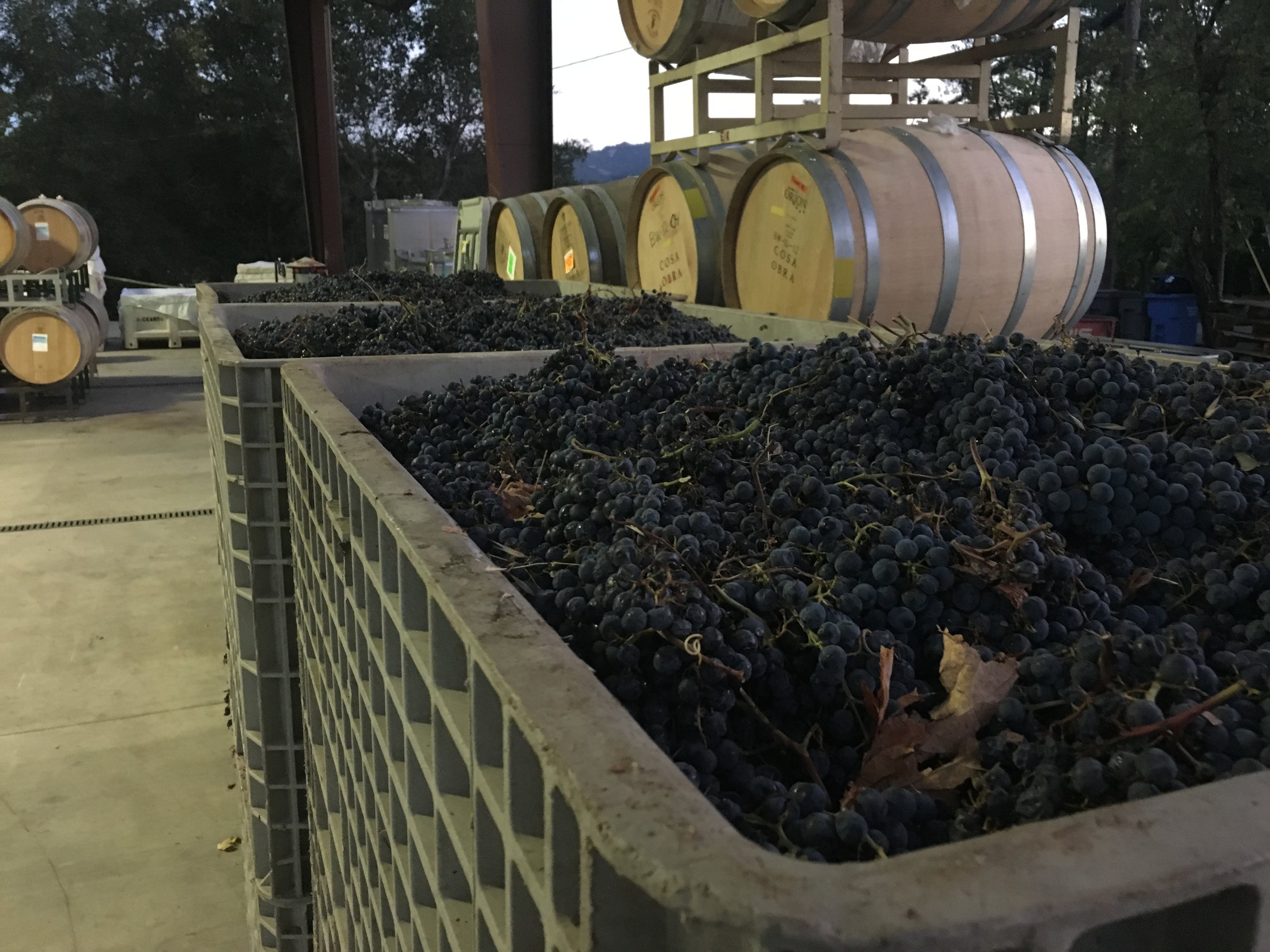
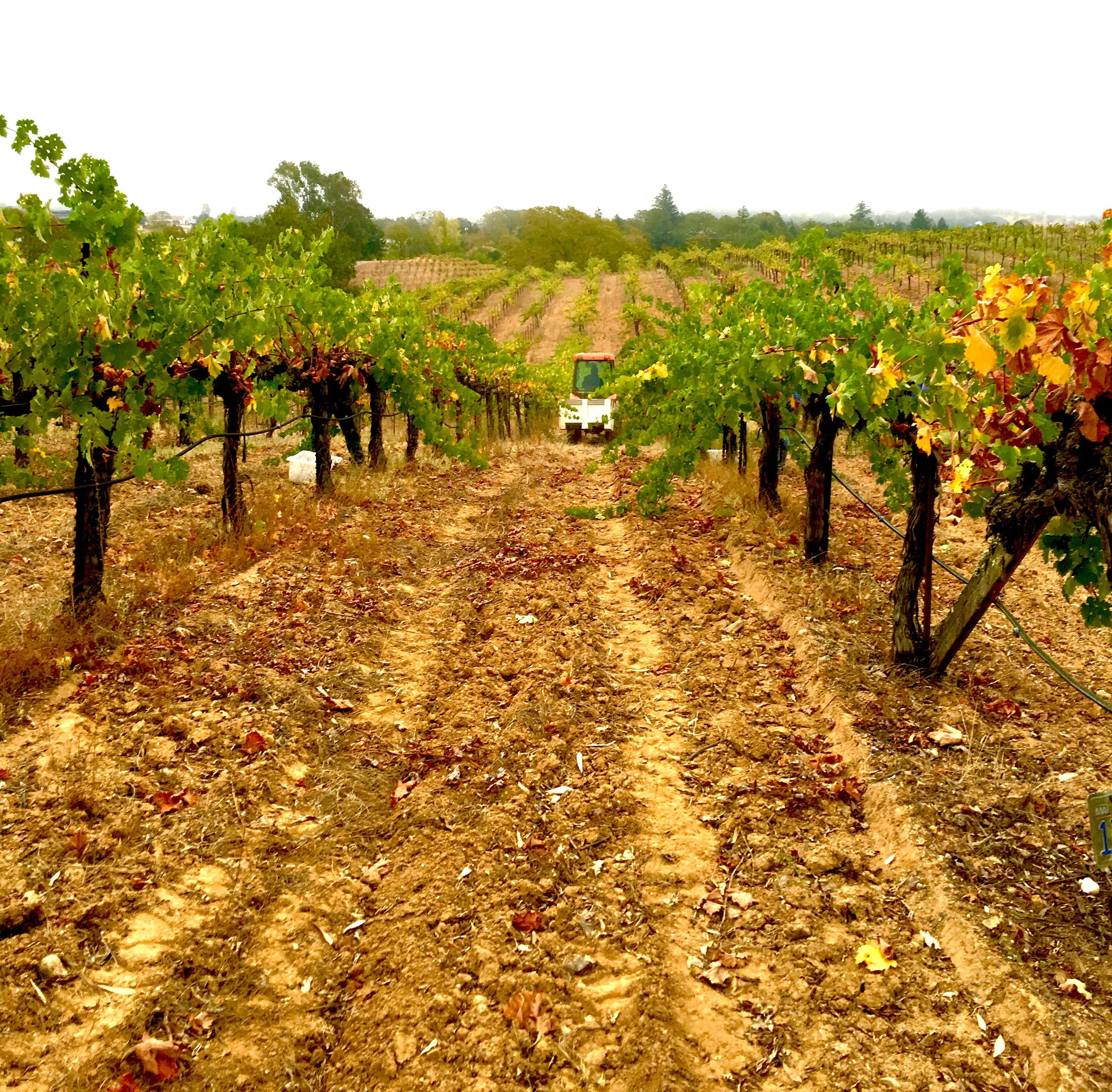
The Dirty Job of Wine Making
I may scare a few of you with this post.
Making wine and making sausage have something in common. They are both dirty. This post is about the realities of winemaking in pictures. If you want to continue to believe that being a winemaker is glamorous, a dream job, where all grapes are picked "at peak ripeness to achieve a perfect wine on the perfect day", this post will likely be a shock to you.
For disclosure purposes, all the pictures are mine, but all the processing in the pictures is not. I make wine at a facility with a wide variety of winemakers and styles. Each wine maker has responsibility for their own wine. This blog is a daily journal of my experiences in wine making..
Making wine isn't easy work. It comes with power outages, broken equipment, people who don't show up, late nights, early mornings, wine stained hands, a filthy car, tired feet, and plenty of uncertainty; a.k.a it's a job.
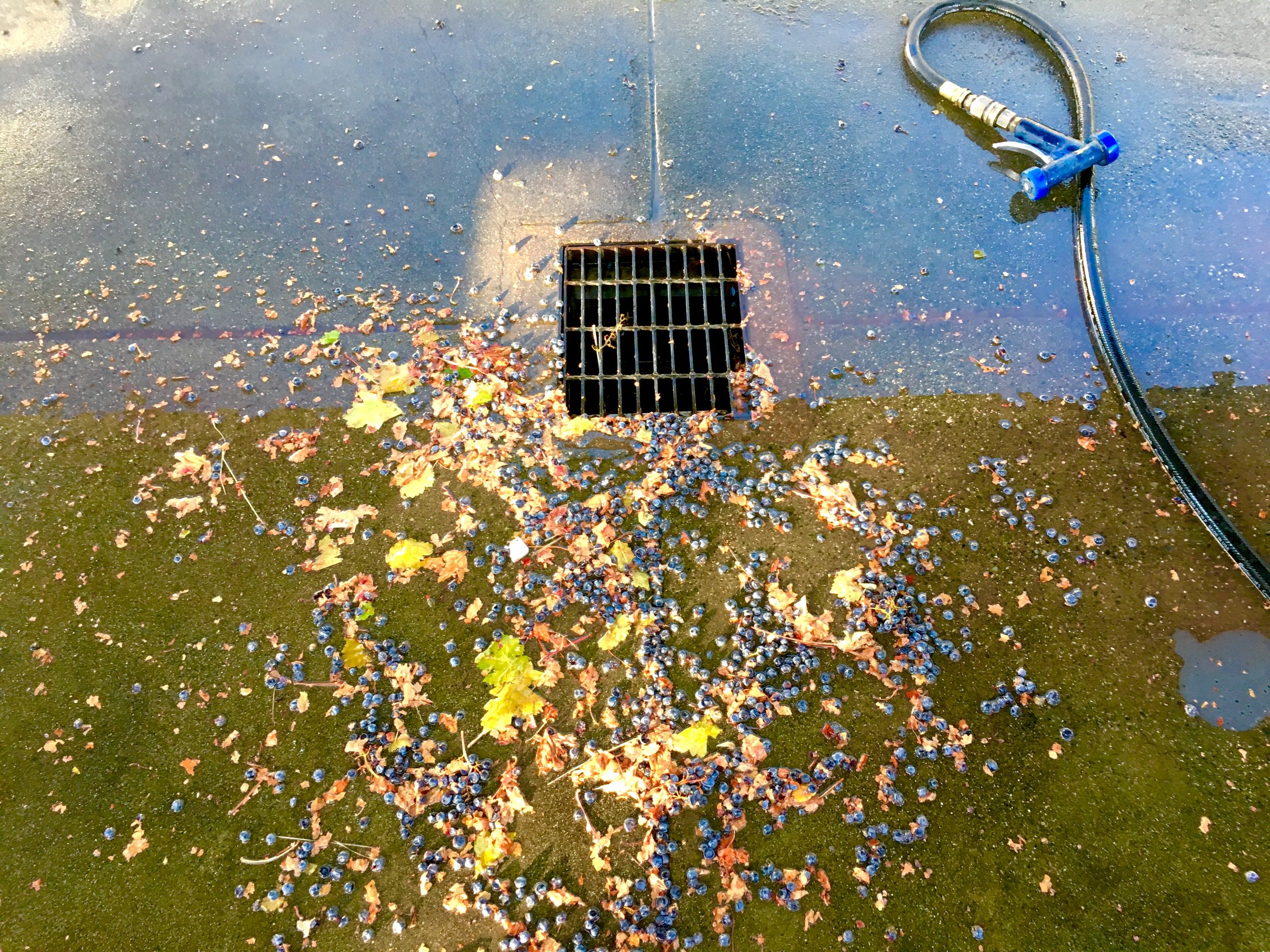

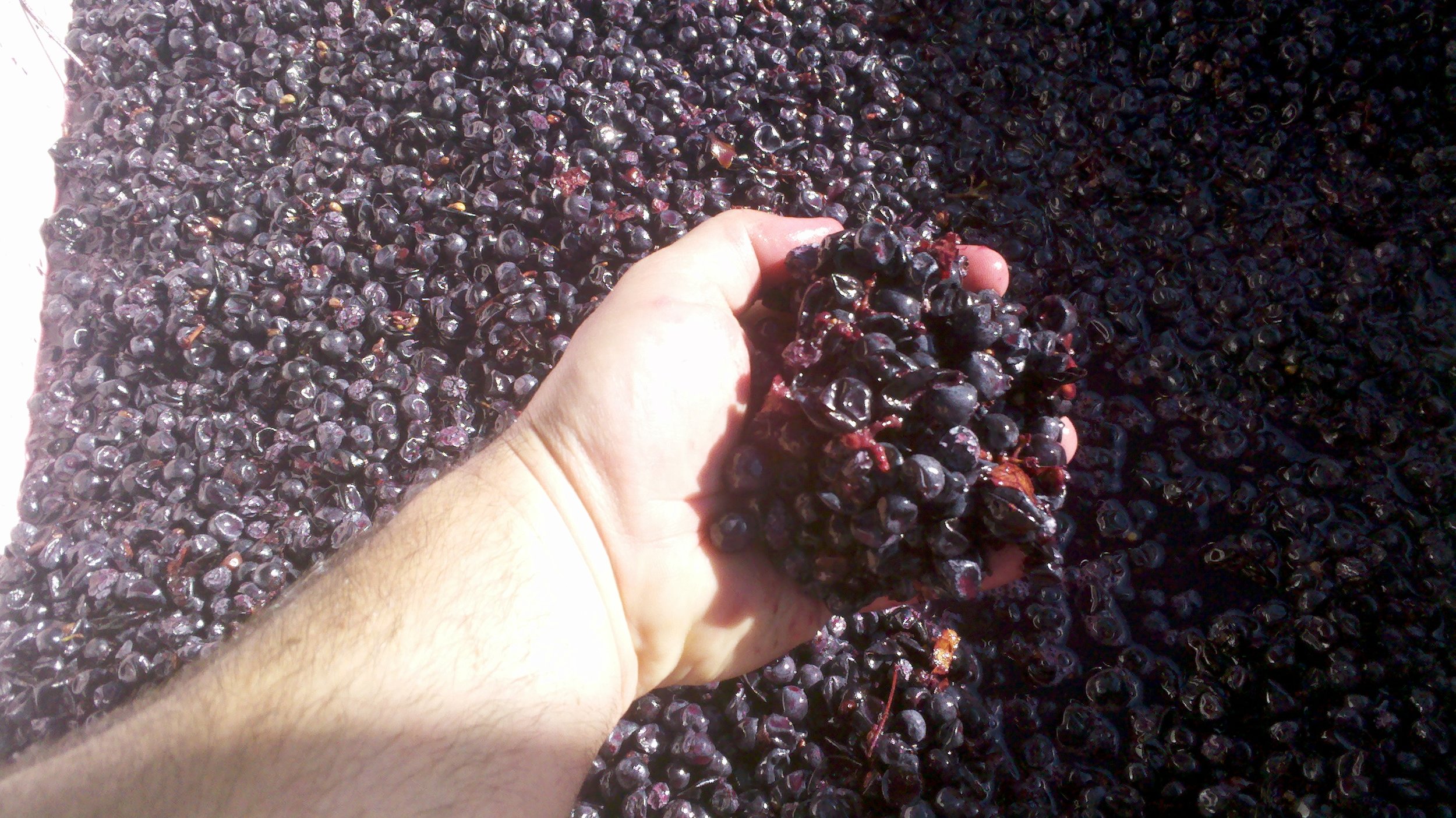
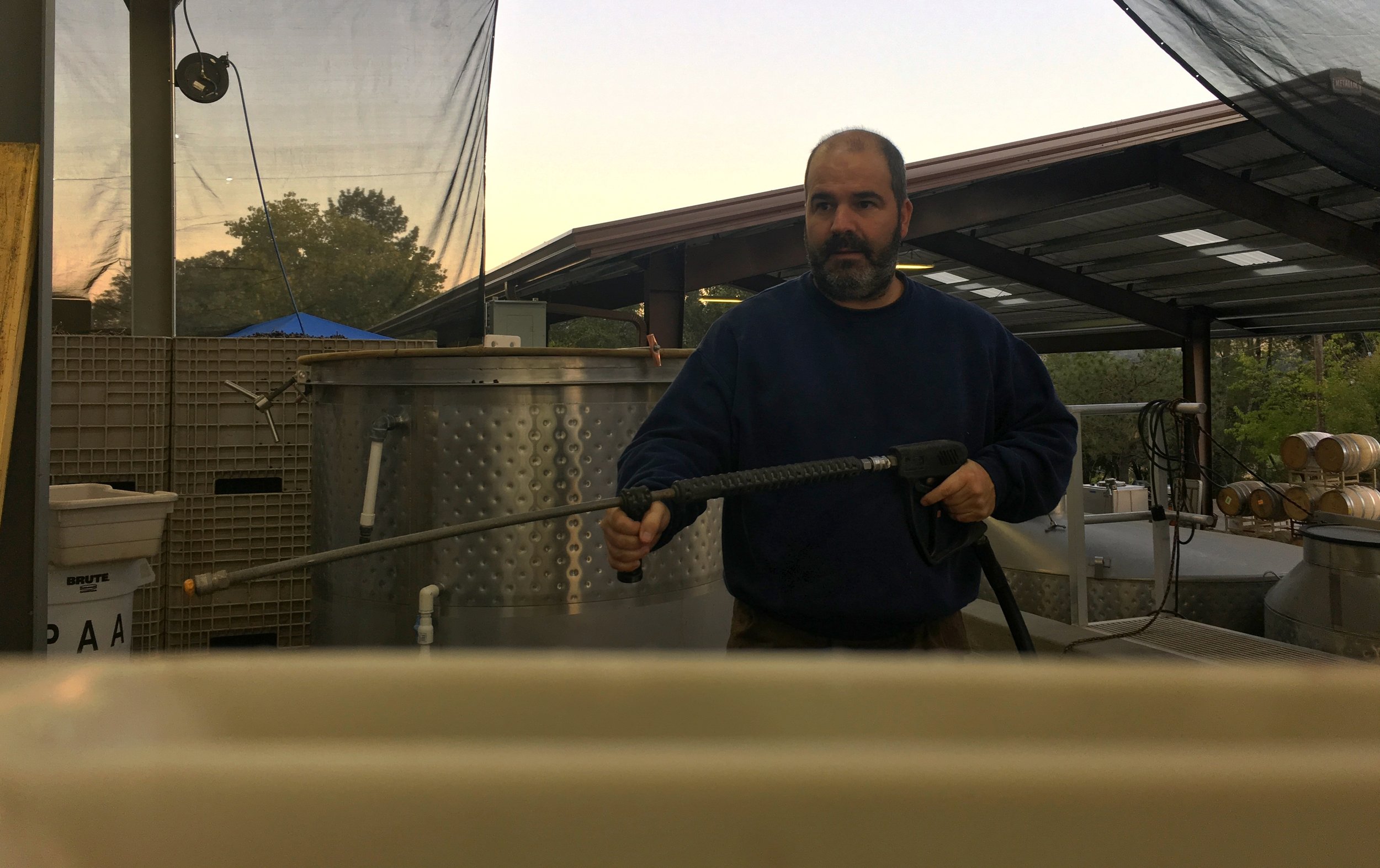
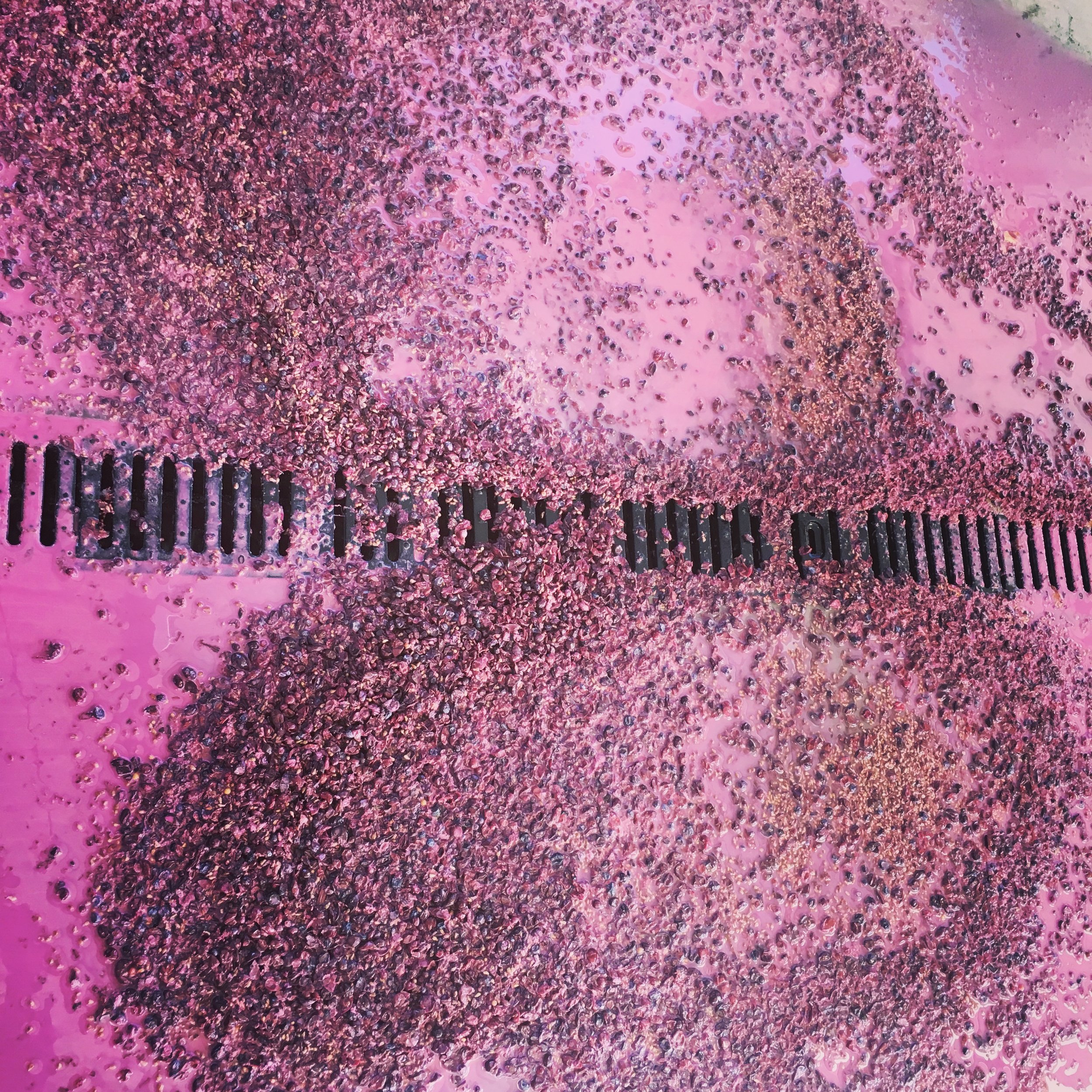
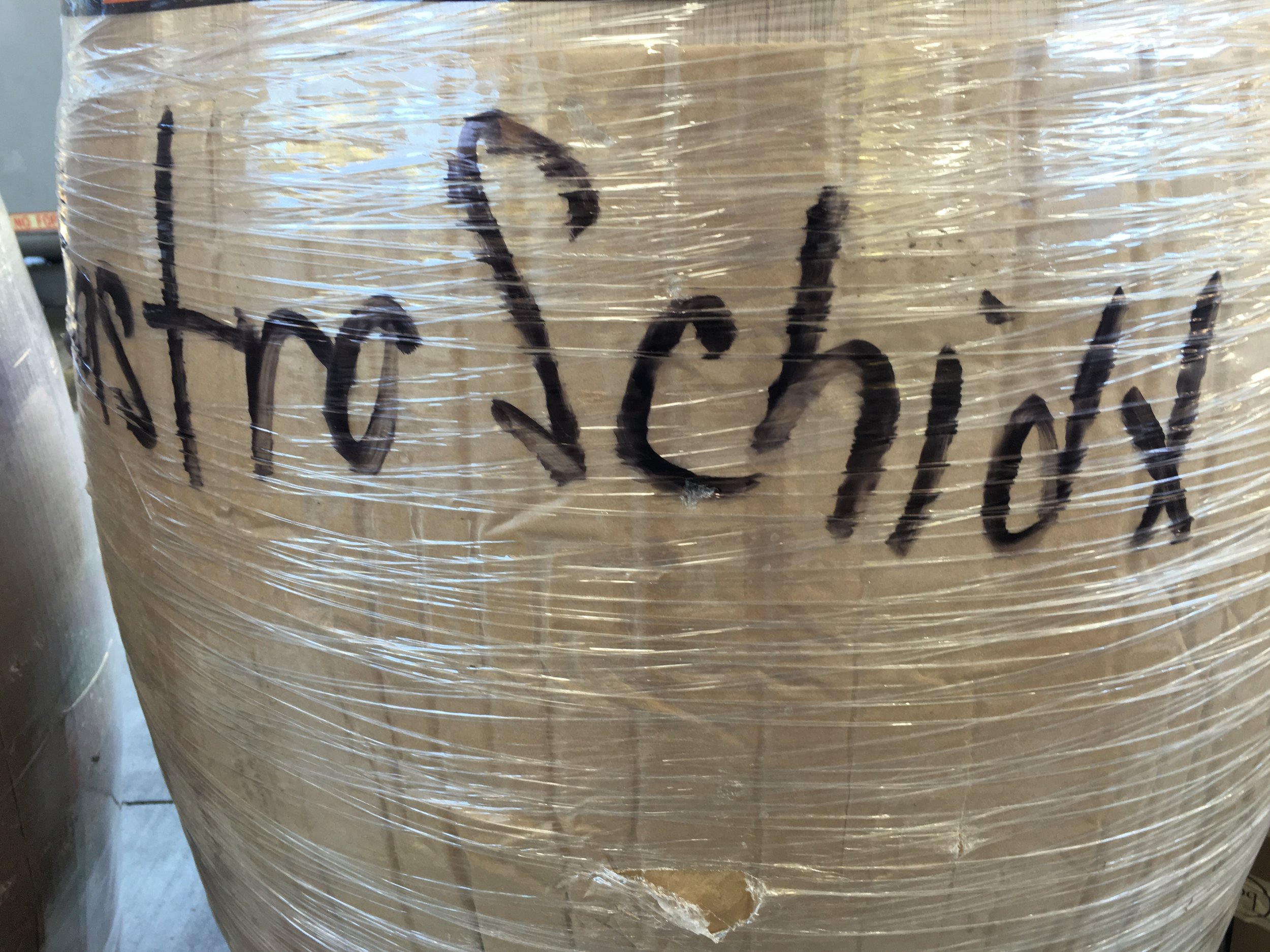
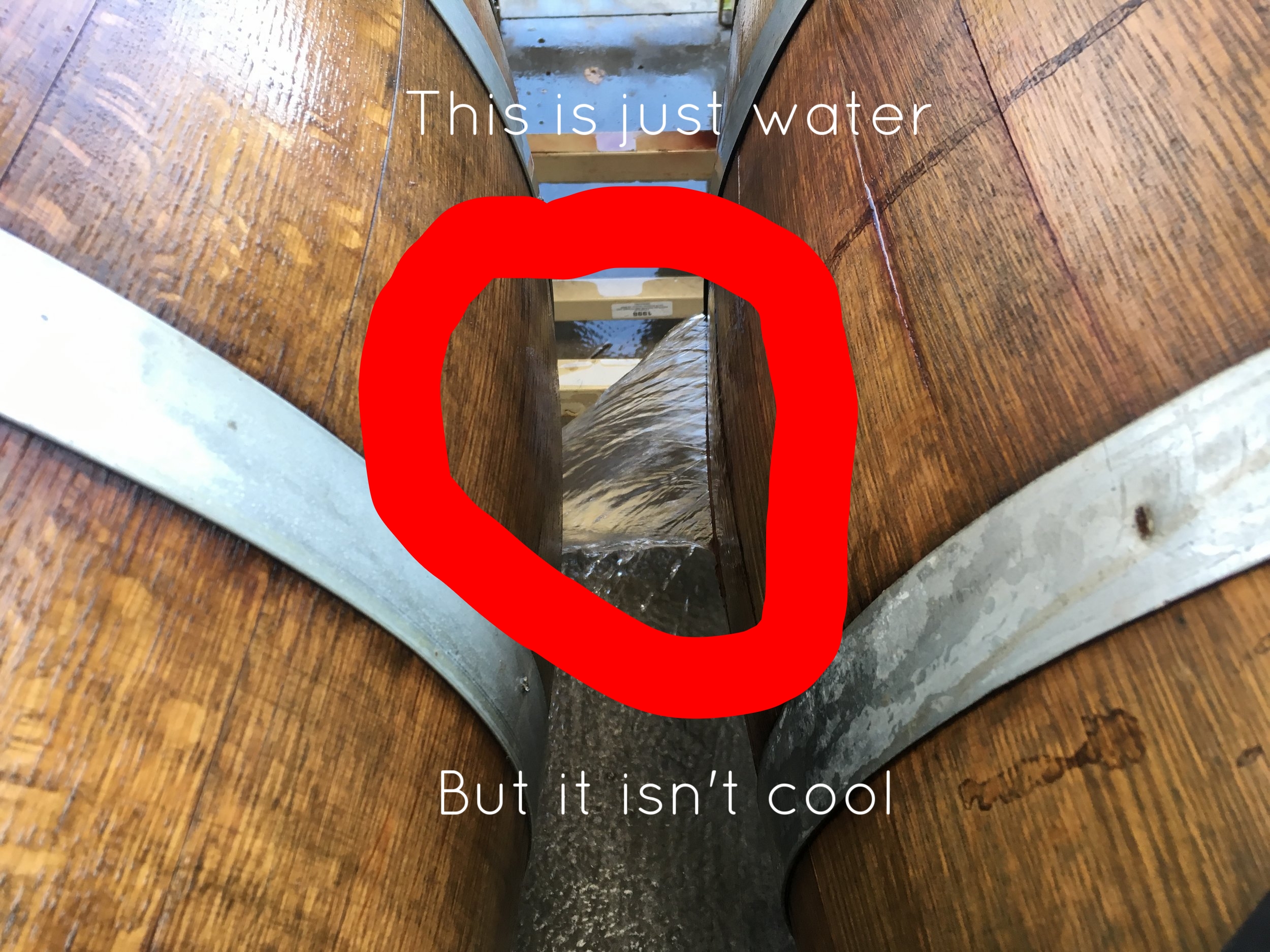
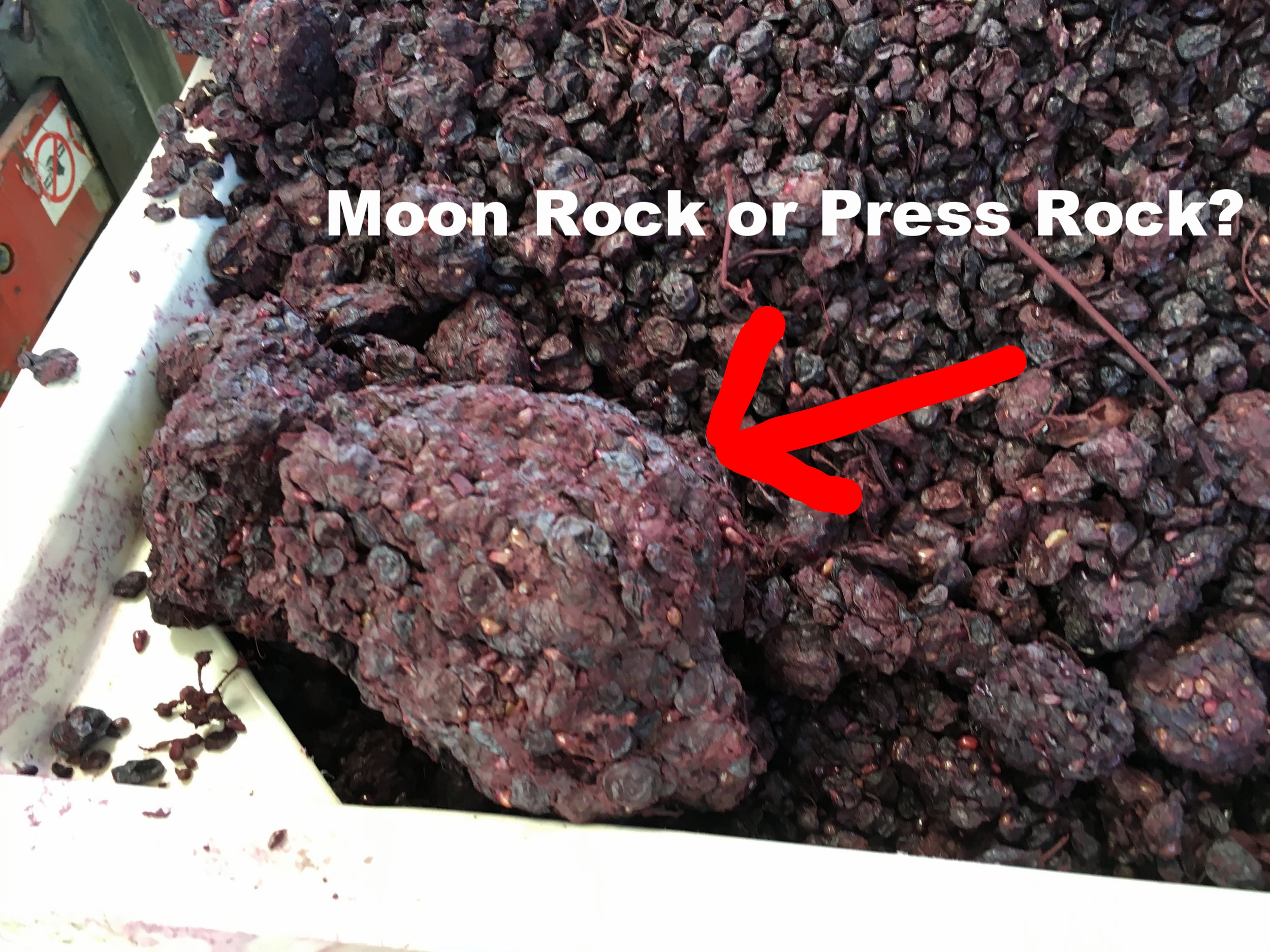

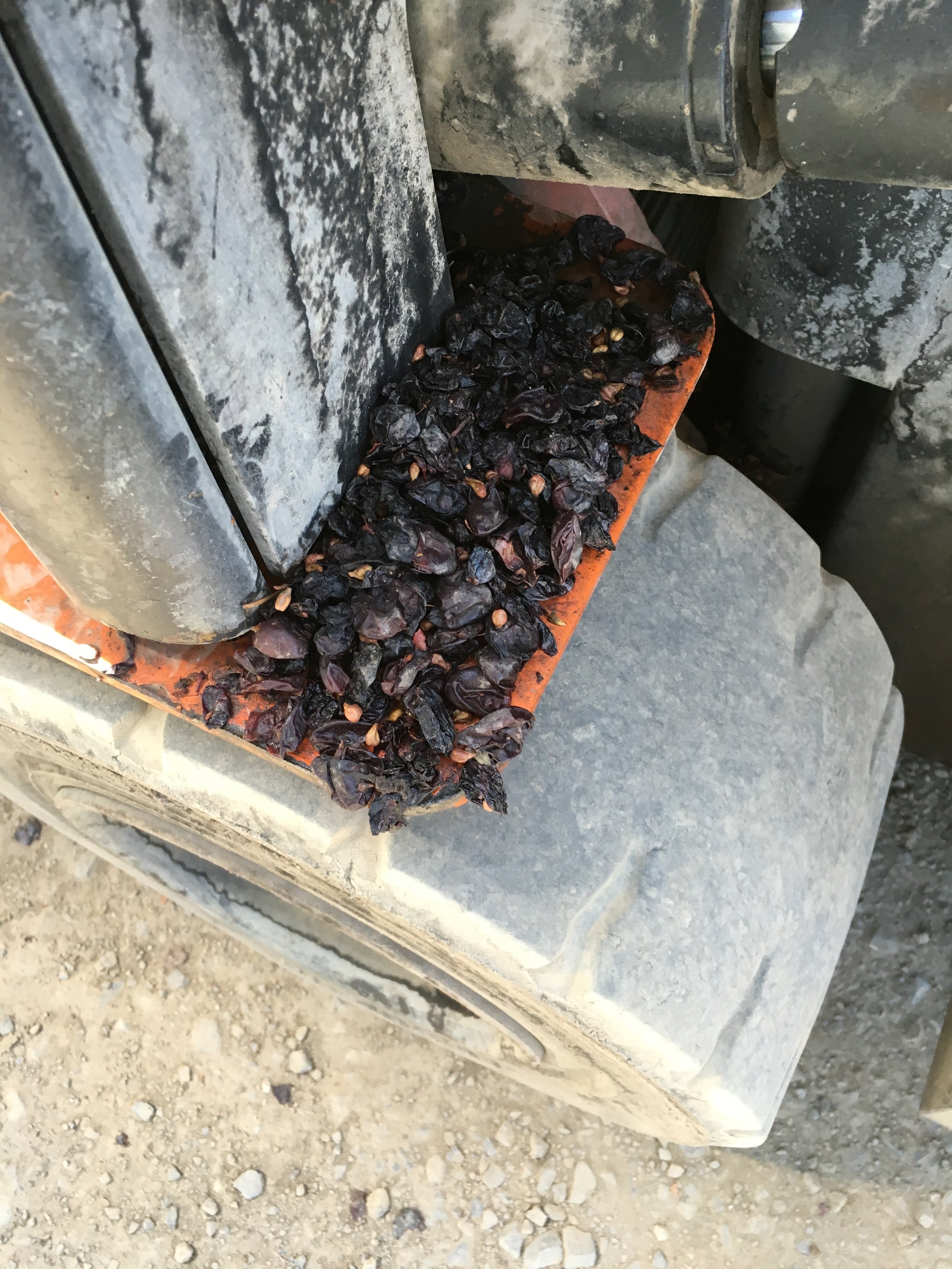
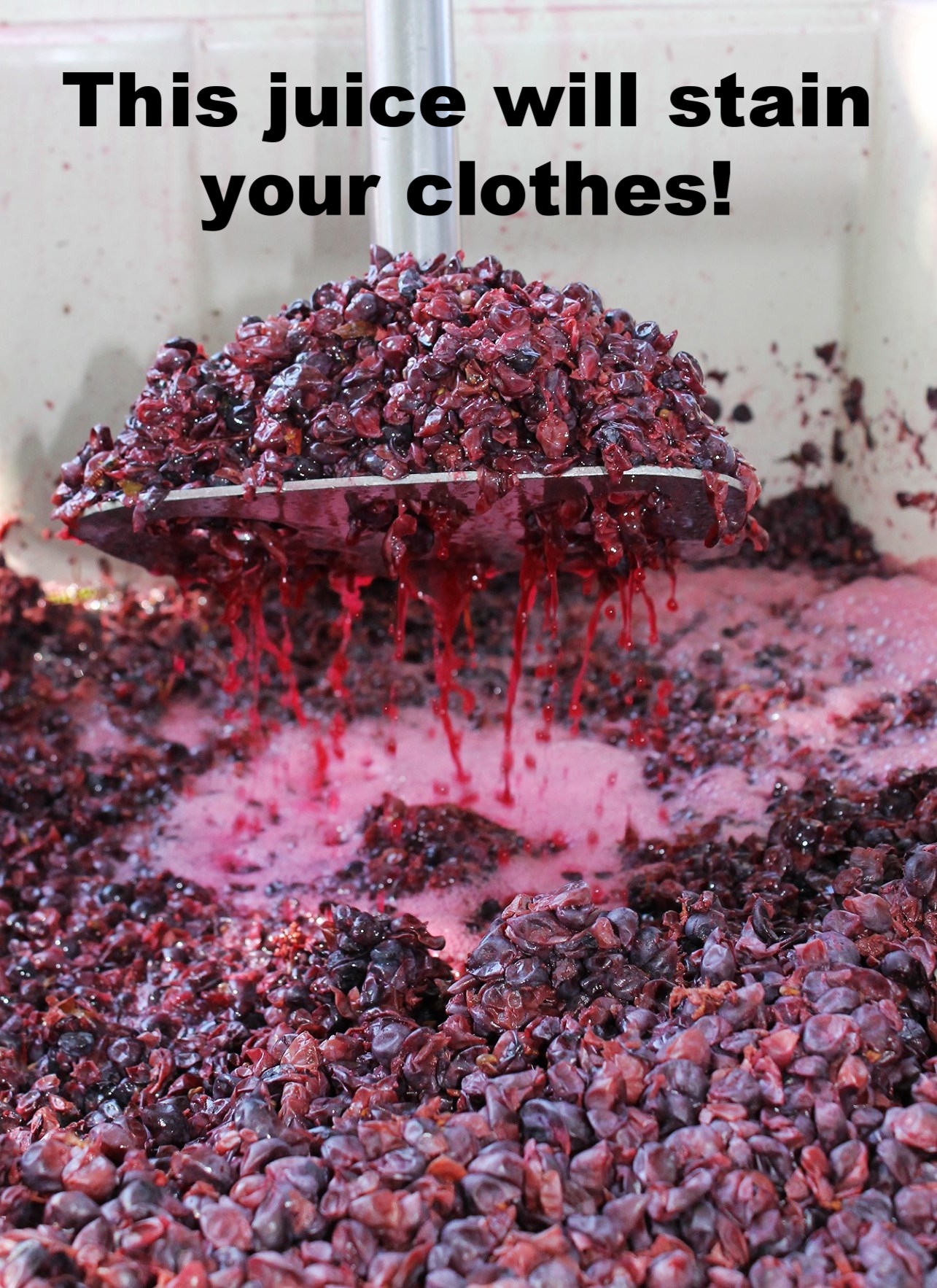
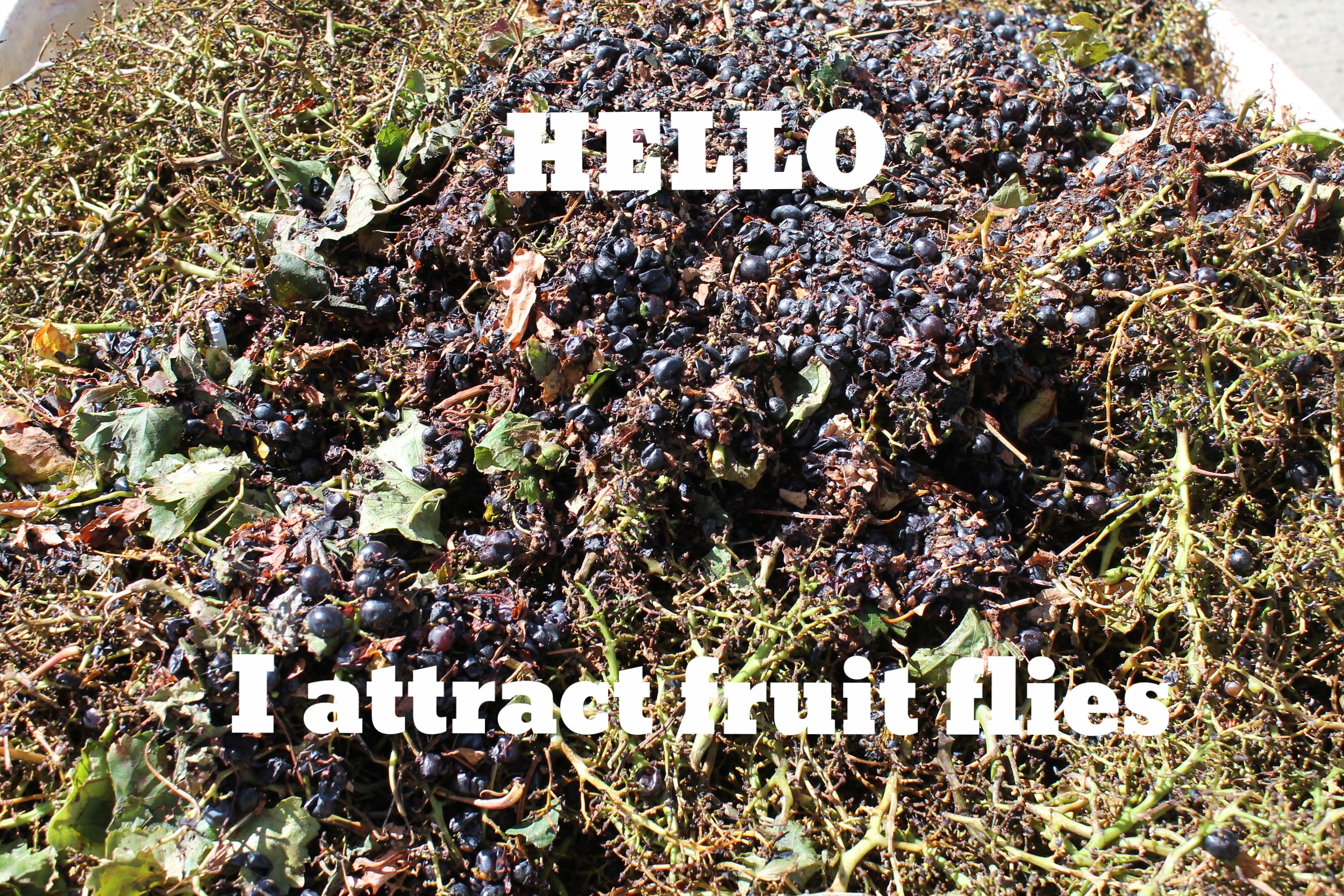
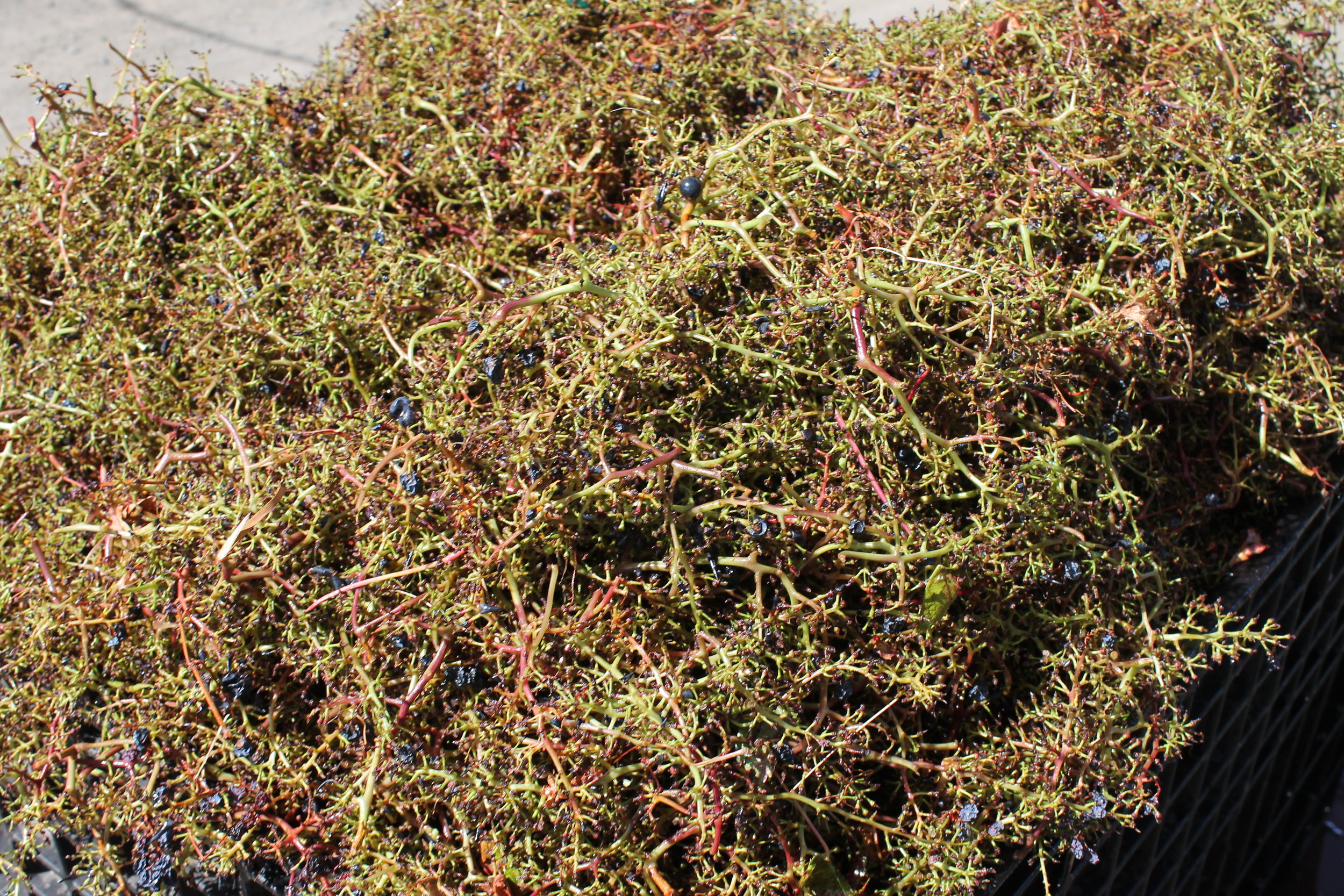
And now for the video. Sediment and lees are a fact of wine making. Period. They reside in all wines. What the end user sees in the bottle is the result of a long process to get a cloudy, sediment filled substance to market without flaws and wonderfully clear in the glass . To reiterate, this is not my wine. merely an example of cleaning after a barrel fermentation.

